
Home » Travel Guides » Poland » 25 Best Things to Do in Warsaw (Poland)

25 Best Things to Do in Warsaw (Poland)
It is not hyperbole to say that Warsaw is a city that has risen from the rubble. In 1945 85% of the city was irretrievably destroyed. But you could now walk the streets of the Old Town without comprehending the carnage that took place during the German invasion of 1939, the Warsaw Ghetto Uprising of 1943 and the general Warsaw Uprising a year later.
The human impact is harder to mend, and Warsaw has museums and monuments that give unflinching accounts of one of the darkest periods in European History. But there are also memories of the splendour of the Polish-Lithuanian Commonwealth of the Early Modern Age, when Warsaw was the capital of Europe’s largest empire. To see it, take the Royal Route, which threads through royal properties like Łazienki Park, a little world of palaces and pavilions in the middle of the city.
Let’s explore the best things to do in Warsaw :
1. Old Town

When you tour a historic city centre you’re normally out for genuine, untouched architecture and monuments.
But after Warsaw’s experiences in the 20th century, the magic of this quarter is in the detailed and faithful reconstruction carried out up to 1962. After almost nine tenths of the city was wiped out, the Old Town’s rebirth was an incredible feat that has earned it Old Town UNESCO World Heritage Status.
As you pick your way along alleys and passageways, past guildhalls, churches and burgher houses you’d never imagine that this was all just a pile of debris 70 years ago.
A couple of sights that we haven’t included on the list below are Canon Square, a triangular plaza enclosed by tenements that once houses canons of the Warsaw Chapter, and St John’s Archcathedral, holding the tomb of Stanisław II Augustus, the last King of Poland.
Available tour : Warsaw Old Town 1.5-Hour Segway Tour
2. Royal Route

It happens that nearly all of Warsaw’s historic landmarks are on a single axis beginning at the Castle Square and continuing south for 15 kilometres or so before arriving at Wilanów Palace.
On this line are churches, parks, palaces, academic institutions and plush townhouses.
The three residences that give the route its “royal” title are the Royal Castle at the top, Łazienki Palace in its stunning eponymous park, and Wilanów Palace at the southern terminus.
All three are absolutely essential, resonating with the wealth and might of the Polish-Lithuanian Commonwealth of the Renaissance and Baroque periods.
3. Łazienki Park

Warsaw’s largest park is an anchor on the Royal Route and is an excursion of choice for families and couples on the weekend.
The park started out as the royal baths (Łazienki translates to “baths”) and was enriched in the 18th century by a grand plan during the reign of King Stanisław II Augustus.
In these 76 leafy hectares are palaces, pavilions, two orangeries, an amphitheatre, a planetarium, follies, promenades, water features and monuments of national standing.
Hopping from one villa to the next, marvelling at the sumptuous Łazienki Palace, pottering around four museums or just relaxing in the greenery; a whole day could float by here in no time.
Maybe the most prestigious of the monuments is for the composer Frédéric Chopin, designed in 1907 in the Art Nouveau style, but delayed by the First World War and erected in 1926.
4. Old Town Market Place

Up to the creation of Stanisław II Augustus’ New Town at the end of the 18th century, this square was the epicentre of commercial life in Warsaw.
It is the most historic part of the Old Town and is enveloped by tall Renaissance and Baroque merchants’ houses in a spectrum of colours.
All of these buildings are post-war replicas of what came before, as the square was first bombed by the Luftwaffe and then blown up by the Germans at the end of the Warsaw Uprising in 1944. Immediately after the war the square was rebuilt as it had been, including the bizarre but charming vertical extensions that cap some of the houses.
The mermaid figure on the fountain in the centre holds special meaning for Warsaw, while in summer you can park up at a restaurant table and watch the city going about its day.
5. POLIN Museum of the History of Polish Jews

Seven years in the making, this museum fully opened in 2014 and documents the millennium-long history of the Jews in Poland.
POLIN is at the northern part of the former Warsaw ghetto in Muranów, and was designed by Finnish architect Rainer Mahlamäki.
In eight galleries, the core exhibition uses a mixture of genuine artefacts, reconstructions and interactive displays to explain how Poland became home for Europe’s largest Jewish community.
You can see a prayer book from 1272 with an early sentence written in Yiddish and find out about the golden age of religious tolerance in the 16th and 17th centuries.
Later comes the Holocaust, and in the gloom are stories about the heroic efforts of the Oyneg Shabbos group to archive the truth about the Warsaw ghetto.
Suggested tour : Warsaw Polin Museum Guided Tour
6. Royal Castle

At the southern entrance to the Old Town you’ll be met by the 90-metre facade of the Mannerist and Baroque castle, the seat of the Polish monarchs for hundreds of years.
The castle has come through an eventful 700 years involving two demolitions, one by the Swedes in the mid-17th century and another by the Germans in the Second World War.
Since the last reconstruction in the 1980s the castle has been a museum, where you can view the apartments of the 16th-century King Sigismund II Augustus, and visit the House of Parliament, the fountain-head of Polish democracy and where amendments made to the Polish-Lithuanian constitution ushered in unprecedented religious tolerance.
There’s also a collection of paintings from the 16th to the 18th century by masters like Rembrandt, van Dyck, Joos van Cleve and Gainsborough.
Book online : Tour of the Royal Castle in Warsaw
7. Castle Square

When Poland’s capital moved from Kraków to Warsaw in 1596 the square beside the castle became the cornerstone of the largest Empire in Renaissance Europe.
The man who brought about this switch was Sigismund III Vasa, who is commemorated by a bronze statue atop an 8.5-metre column.
This was first raised in 1644, but was toppled by the Germans in 1944 and its original red marble was replaced with granite.
There are still fragments of the marble column by the castle walls.
Some events that shook Poland have taken place here, like a bloody riot during the period of Martial Law in 1982, a massacre by the Russians during an uprising in 1861 and a speech by Bill Clinton welcoming Poland into NATO in 1997. Whether it’s a rally or concert there’s often something going on at Castle Square in summer.
8. Warsaw Uprising Museum

This museum of the Warsaw Uprising of August to October 1944 is in the converted former tramway power station in the Wola district.
On entering you can use pre-War telephone receivers to listen to the memories of participants in the uprising.
Among the many clever installations is the Kino palladium, a cinema showing the footage collected by the insurgents and screened at the Warsaw Palladium during the uprising.
There are also replicas of the sewers that the fighters used to get around, while ‘before and after’ photographs of the city bring home the ruthlessness of the German backlash.
9. Copernicus Science Centre

Poland’s top science museum opened in 2010 and has more than 400 interactive exhibits across six zones, each tackling a different field, from the Roots of Civilisation to the Lightzone, investigating the nature of light.
The World in Motion for instance has an earthquake simulator to try out as well as a moving model that showing a human skeleton on a bicycle.
At the Humans and the Environment zone you can find out about urban ecosystems, contruction technology.
There are also webcams beaming footage directly from a falcon’s nest at the Palace of Culture and Science, and the gorilla enclosure at the Warsaw Zoo.
The centre also has a state-of-the-art planetarium with a 3D sound system, screening shows about the cosmos, but also nature and human cultures.
10. Palace of Culture and Science

Whatever your opinion on this enormous building, it is practically ever-present in Warsaw.
At 237 metres the Palace of Culture and Science is the tallest building in Poland, and on its 42 floors are four theatres, a multi-screen cinema, two museums, the 3,000-seater Congress Hall, government offices, academic institutions and private companies.
Taking cues from Art Deco skyscrapers and Polish Historicism, this immense Stalinist complex was a ‘gift from the Soviet Union to the people of Poland’ in 1955, and that’s just one of the reasons it evokes mixed feelings.
If an international event is taking place in Warsaw there’s a good chance it will go down at the Congress Hall, while there’s an observation terrace on the 30th floor open 10:00-20:00 for the ultimate panorama of the city.
11. Łazienki Palace

On the artificial island in the lake at Łazienki Park is the sublime Classical palace conceived in the 18th century for King Stanisław II Augustus.
The property is a conversion of a Baroque bathing pavilion for Count Stanisław Herakliusz Lubomirski from the century before, and has kept some of the architecture from that first building.
The north facade has a portico at the shore of the lake, while the main entrance is in a recess with powerful Corinthian columns, while the roof is hemmed by a balustrade carrying statues of mythological figures.
The ground floor has lavishly decorated salons (The Solomon Room is a stand-out), and the Lower Gallery, has paintings by Jacob Jordaens, Rembrandt and Rubens.
Upstairs is the Upper Gallery, as well as the King’s splendid cabinet and bedchambers.
Included in this tour : Warsaw Half–Day Highlights Tour
12. Wilanów Palace

The palace at the southern end of the Royal Route came through the Second World War without a scratch.
So Wilanów Palace is a rare glimpse of the majesty of the Polish-Lithuanian Commonwealth before Poland was annexed by Prussia and Russia in the late-18th century.
This palace was intended as a summer escape for King Jan III Sobieski towards the end of the 17th century, and has all the hallmarks of Baroque palace architecture, including a parterre with two terraces boasting topiaries, broderie and statues symbolising love.
The exterior is laden with medallions, busts, statues and other Baroque ornamentation, while interior decor abounds with stuccowork, striking trompe-l’œil frescoes and chinoiserie.
High points are the sumptuous White Hall, traced by mirrors, the King’s Library, the King’s Bedroom and the North Gallery, flanked by statues and with magnificent ceiling frescoes.
13. Krakowskie Przedmieście

The most prestigious street in Warsaw makes its way southwards at the beginning of the Royal Route from near the Castle Square.
You’ll see palaces, dignified monuments and eminent Polish institutions like the Polish Academy of Sciences, Warsaw University and the Presidential Palace.
Across from the entrance to Bednarska Street is Warsaw’s second oldest standing monument, the Madonna of Passau.
This dates from 1683 and is a votive offering in thanks for King Jan III Sobieski’s role in the defeat of the Turks at the Battle of Vienna, in which he led the largest cavalry charge in the history of warfare.
14. National Museum

Warsaw’s biggest museum is also one of the largest in Poland and has a huge assortment of historical artefacts from many places and eras.
The collection of antiquities is noteworthy, made up of some 11,000 Egyptian, Greek and Roman pieces.
Also set aside an hour or two to see everything in the Faras Gallery.
This is furnished with Nubian early Christian frescoes, friezes and architectural elements brought here from the Egyptian-Sudanese border before the construction of the Aswan High Dam flooded the valley.
In the collection of Polish Medieval art from the 14th and 15th centuries are works produced for churches and cathedrals, including devotional paintings, altarpieces and sculptures.
And there’s also lots of art from the Early Modern Age and 19th century, by well-known names like Lucas Cranach the Elder, Brueghel the Elder, Rembrandt, Courbet and Renoir.
15. St Anne’s Church

One of the oldest landmarks in the city, St Anne’s Church on Krakowskie Przedmieście was founded in 1454. In the 17th century the church had to be rebuilt no fewer than four times, until receiving its final Neoclassical facade in 1788. In the niches between the columns and pilasters are statues of the Four Evangelists below a massive pediment.
The interior has kept hold of its theatrical Baroque design from a little earlier, and has spectacular frescoes on its barrel vault and has a nave edged by Corinthian pilasters with gilded capitals.
There are also regular organ recitals at St Anne’s, well worth catching.
16. Taras Widokowy na Stare Miasto (Viewing Platform in the Old Town)

St Anne’s Church has a stand alone bell tower, which will provide you with another vantage point over the city.
In fact, this tower may even be better than the Palace of Culture and Science, as it’s planted on the edge of the Old Town and has regal Baroque architecture.
If you can brave the 147 steps you’ll be rewarded by a bird’s eye view of the Castle, Castle Square, the Old Town to the north and Krakowskie Przedmieście to the south.
17. Tomb of the Unknown Soldier

In Piłsudski Square, the largest in Warsaw, is a monument for unidentified soldiers who have died fighting for Poland.
The tomb dates to 1925, and contains the body of a soldier who fell in the Battle of Lemberg of 1918-1919 between Poland and the West Ukrainian People’s Republic.
The monument housing the tomb is a fragment (three arches) from the arcade that once belonged to the Saxon Palace, demolished after the Warsaw Uprising.
Under the central arch is the tomb and eternal flame, watched by the Representative Honour Guard Battalion of the Polish Armed Forces.
At the stroke of every hour 365 days a year the guard is changed.
The monument and square are the focus of ceremonies for the Polish Armed Forces Day every 15 August.
18. Jewish Ghetto Memorial

By the Museum of the History of the Polish Jews is a monument to the Warsaw Ghetto Uprising of 1943. On the square below the wall is a circular plaque inscribed with the message: ” Those who fell in the unprecedented heroic struggle for the Dignity and Freedom of the Jewish people, for Free Poland, for the liberation of man – Polish Jews”, in Polish, Yiddish and Hebrew.
This was unveiled in 1946 and is encased in red sandstone to symbolise the bloodshed.
The wall behind came later, in 1948, designed by Natan Rapaport and intended to resemble Jerusalem’s Western Wall and the wall of the Warsaw Ghetto.
On the eastern side of the monument a bronze bas-relief depicts Jewish children, women and elderly being driven by German soldiers.
On the west side the monument shows the uprising of April 1943 with a relief titled “Fight”.
Recommended tour : 3-Hour Tour of Jewish Warsaw
19. Okopowa Street Jewish Cemetery

At 33 hectares this Jewish burial ground, dating back to 1806, is one of the largest in the world.
There are over 250,000 marked graves at Okopawa Street Cemetery, as well as several mass graves for those who were killed during the Warsaw Ghetto.
Nature has taken over large swathes of the site, which, along with the Art Nouveau and Historicist monuments, makes the cemetery equal parts beautiful and poignant.
Something interesting about this place is that it was drawn up for Jewish people of all affiliations, so there are allocated areas known as “Quarters” for military burials, Orthodox burials (for men, women and holy scriptures), reform Judaism and children.
After the Second World War a small corner of the cemetery was reopened for Warsaw’s returning Jewish population.
20. Zachęta

At Plac Małachowskiego is a solemn gallery built in 1900 and dedicated to modern and contemporary Polish art.
Since its foundation in 1860 the Society for the Encouragement of Fine Arts has had the job of promoting fine art in Poland.
In its early years some of the nation’s most celebrated painters like Jan Matejko and Wojciech Gerson staged exhibitions Zachęta.
And in the same vein, it remains a shortcut to Poland’s art scene via temporary exhibitions for up-and-coming talent and established names like Katarzyna Kozyra and Krzysztof Wodiczko.
In the permanent collection are pieces by leading post-war artists like the painter and set-designer Tadeusz Kantor and the Surrealist Jewish sculptor Alina Szapocznikow.
21. Nowy Świat Street

Also on the Royal Route, this one-kilometre artery leads southwards from Krakowskie Przedmieście down to Three Crosses Square.
Nowy Świat Street’s origins lie in the 16th century when it was first used by the upper class to reach their properties in the countryside south of the old town.
As Warsaw grew, the city’s wealthier and aristocratic residents built homes along the street.
And by Napoleonic times these were remodelled from half-timbered buildings into fine Neoclassical mansions and villas.
The thoroughfare has cafes, upmarket shops and international retailers like Sephora by day, and lots of nightspots with international clientele when the sun goes down.
22. Copernicus Monument

The monument for the trailblazing Renaissance astronomer and mathematician stands proud in front of the Polish Academy of Sciences at Stazsic Palace.
The work shows Copernicus with a compass and armillary sphere and was fashioned by Bertel Thorvaldsen, maybe the leading sculptor in Europe of the day.
It was presented to the public in 1830 and had an uneventful first century until the Second World War.
Not long after entering the city in 1939 the German authorities replaced the Latin and Polish inscriptions with a one in the German language, leading to a tit-for-tat campaign between the Polish resistance and the occupiers.
After the uprising in 1944 it was removed to the city of Nysa to be melted down, but by then the German army was in retreat and the statue could be rescued and returned to its rightful place.
23. Holy Cross Church

Another of the head-turning sights on Krakowskie Przedmieście, the Holy Cross Church is a Baroque monument built in the first half of the 18th century to a design by the royal court architect Józef Szymon Bellotti.
The church was badly damaged in the Warsaw Uprising and was later blown up by the German army in 1945. And when it was rebuilt right after the war the design was simplified and didn’t include the frescoes and polychrome statues that came before.
But there’s still a very good reason to pay a visit: In accordance with his will, Frédéric Chopin’s heart was brought to this church by his sister in an urn, and embedded in a pillar in one of the chapels.
24. Warsaw University Library Garden

A few steps back from the Vistula River, Warsaw University’s library is strange to behold from ground level: There’s a long and austere stone facade and a blue scaffold-like porch that could be from the Pompidou Centre.
But up the exterior stairway is one of the largest roof gardens in Europe.
Open from March to November, this one-hectare space is a little dreamland of fountains, streams, pergolas, arbours and lawns, while the library’s windows and skylights add a touch of the surreal.
This is all the work of landscape architect Irena Bajersaka and opened in 2002. The city views are also fantastic, encompassing the Vistula, the recent PGE National Stadium and the Copernicus Centre.
25. Saxon Garden

When Saxon Garden off Piłsudski Square opened its gates to the public in 1727 it became one of the first public parks in the World.
It had been landscaped in the 17th century for the Saxon Palace, which was lost in the Second World War, along with the Rococo Brühl Palace that also backed onto the park.
In its first century Saxon Garden was a Baroque parterre in the style of Versailles, but has been an English landscape park since the 19th century.
Seek out the park’s sandstone allegorical sculptures, fashioned in the mid-18th century.
Twenty remain from an initial 70, and you can try to work out what each one symbolises (Intellect, Justice, Astronomy, Painting and Poetry are all pretty easy to decipher).
25 Best Things to Do in Warsaw (Poland):
- Royal Route
- Łazienki Park
- Old Town Market Place
- POLIN Museum of the History of Polish Jews
- Royal Castle
- Castle Square
- Warsaw Uprising Museum
- Copernicus Science Centre
- Palace of Culture and Science
- Łazienki Palace
- Wilanów Palace
- Krakowskie Przedmieście
- National Museum
- St Anne's Church
- Taras Widokowy na Stare Miasto (Viewing Platform in the Old Town)
- Tomb of the Unknown Soldier
- Jewish Ghetto Memorial
- Okopowa Street Jewish Cemetery
- Nowy Świat Street
- Copernicus Monument
- Holy Cross Church
- Warsaw University Library Garden
- Saxon Garden
Awesome, you're subscribed!
Thanks for subscribing! Look out for your first newsletter in your inbox soon!
The best things in life are free.
Sign up for our email to enjoy your city without spending a thing (as well as some options when you’re feeling flush).
Déjà vu! We already have this email. Try another?
By entering your email address you agree to our Terms of Use and Privacy Policy and consent to receive emails from Time Out about news, events, offers and partner promotions.
Love the mag?
Our newsletter hand-delivers the best bits to your inbox. Sign up to unlock our digital magazines and also receive the latest news, events, offers and partner promotions.
- Los Angeles
Get us in your inbox
🙌 Awesome, you're subscribed!

The 13 best things to do in Warsaw
The best things to do in Warsaw include food halls, forts filled with art, bars dedicated to Depeche Mode and more

Poland ’s sprawling capital has a chequered history, including brutal Medieval warfare and occupation during World War II—and you can explore all that and more when tackling each one of the best things to do in Warsaw. This is reflected in the city's architecture, from Gothic churches to tall Soviet skyscrapers. Cooler than the more touristy Krakow , Warsaw has undergone a major foodie revival in recent years and has also developed a thriving art scene in the warehouses littered throughout the city. Budget airlines offer direct flights here for as little as £35 return— and, as it's Eastern Europe, you can expect to actually come home with leftover spending money despite living like a king while in town.
Done something on this list and loved it? Share it with the hashtag #TimeOutDoList and tag @TimeOutEverywhere.
Find out more about how Time Out selects the very best things to do all over the world .
An email you’ll actually love
Best things to do in Warsaw

1. Praski Park
What is it? A large park in the east of the city, dating back to the nineteenth century.
Why go? On first glance, this might seem like a regular park. But there's a surprising difference. Real life brown bears have been living on the concrete island of Praski Park (which is also called Praga Park) since 1945. There are currently three beasts living there – Tatra, Mała and Sabina – but although they look cuddly, don't be lured into the enclosure for a bear hug. People have been mauled in the past.

2. Muzeum Neonów
What is it? A gallery showcasing a large collection of neon signs dating from 1950 to the 1970s.
Why go? Located in trendy artists' hub the Soho Factory, in the east (of course) of Warsaw, this Instagram-friendly warehouse is packed full of neon advertising signs from the shops, bars and restaurants of Cold War-era Warsaw that were saved and restored following the collapse of the Soviet Union.

3. Hala Koszyki
What is it? A giant indoor complex comprising of 18 restaurants and several street food stalls.
Why go? This Art Nouveau market was refurbished and reopened two years ago as a gastronomic paradise. You can eat a meal in one of the numerous restaurants that serve up anything from Italian to Hawaiian cuisine or buy fresh produce and prepare dinner at home. With martinis for just £3.50 it would be rude to not stop off at the bar.

4. Beirut Hummus & Music Bar
What is it? Grazing plates and colourful cocktails are the order of the day at this neighbourhood bar.
Why go? Middle-Eastern food is very popular in Poland, and there are loads of kebab shops around the city. If you're looking for somewhere a bit more lively, Beirut Hummus & Music bar is a local favourite, where you can share platters of hummus, falafel and halloumi burgers while listening to indie hits from the 2000s.

5. Kraken Rum Bar
What is it? Just next door to Beirut is Kraken Rum Bar, another small establishment where you can try Polish rum.
Why go? This dive joint specialises in rum, of course – and a must-try is the spirit made especially for the bar by the brewers at Artezan, Poland's smallest brewery. Kraken also serves up seafood at bargain prices. You can get a seafood platter and a cocktail for £9 here, which is surely some sort of record.

6. Klub Hydrozagadka
What is it? This small nightclub in an arch hosts regular gigs by local bands and 1980s electronica nights.
Why go? Two things are exceptionally popular in Poland: getting trashed on vodka and dancing to 80s’ synth dinosaurs Depeche Mode. Luckily, you can do both these things at the same time at Klub Hydrozagadka, a trendy joint where locals party the night away in quirky warehouse surroundings.

7. Bar Bambino
What is it? A traditional Warsaw 'milk bar' where you can sample traditional Polish cuisines, such as perogies, stodgy dumplings filled with fillings such as meat and spinach.
Why go? Milk bars have a bit of a misleading name – they aren't the ones you'd find Alex and his droogs from ‘A Clockwork Orange’ plotting their wicked ways in, they're actually low-priced cafeterias selling dairy-based Polish food. Bambino is known as being the best. If you don't speak Polish it's worth asking for the English-speaking menus they keep behind the counter.

8. Bazar na Kole
What is it? Bazar na Kole is a flea market open Saturdays and Sundays from 6am to 3pm, where it's rumoured you can literally buy anything.
Why go? Whether you're looking for old photographs, interesting furniture, traditional Polish handicrafts or vintage clothing and bags, you won't be disappointed by the bargains on offer at this bi-weekly market. Even if you're not planning to part with cash, a stroll in the fresh air rummaging through the stalls will cure you of your vodka hangover in no time.

9. Chopin's Heart
What is it? The heart of famous Polish composer Frédéric Chopin, interred away from his body in a monument inside Warsaw's Holy Cross Church.
Why go? Chopin died in Paris in 1849. Before his death he made the gruesome request that his heart be taken from his corpse and sent back to his home country. His sister Ludwika complied, smuggling it back to Warsaw in cognac before it was interred in this city centre church. The monument became a rallying point for nationalists during the German occupation and was even stolen by the Nazis before being returned after the war.

10. Galeria Forty/Forty
What is it? A hidden art gallery in an abandoned Warsaw fort.
Why go? This spot can be tricky to find – but it is well worth it when you do. The walls of this abandoned fort, dating back to the 1880s, are open 24/7, and are covered in images, text and installed art by Polish artists. Works created by those invited to the project are mixed with graffiti spontaneously added by uninvited artists, giving it an unusual appearance.

11. Gestapo HQ (Mausoleum of Struggle and Martyrdom)
What is it? The former headquarters of the Gestapo when the Nazis occupied Poland, this is now a poignant memorial to the thousands of Poles who passed through its doors to be interrogated and tortured.
Why go? Now a Polish government building, this was the scene of war crimes undertaken by the German secret police during the 1940s. After the war ended, it was decided that the jails where people were held should remain untouched, in tribute to the brave souls who were taken there. It is a harrowing look at not-too-distant-history.

12. Keret House
What is it? The narrowest house in the world, this art installation is meant to represent elements of Warsaw's history.
Why go? This unusual structure was conceived by renowned Polish architect Jakub Szczesny, and is now open for ticketed tours inside. Be warned, however, it is a very tight squeeze, measuring at just over 3ft at its thinnest point and almost 5ft at its thickest. The house is named after an Israeli writer of Polish descent, Etgar Keret, who was invited by Szczesny to live there.

13. Bubbles
What is it? Boozing in Warsaw is not all vodka, as this popular bar specialising in fizz proves.
Why go? A short walk away from the Gothic Old Town, this restaurant and bar has a vast selection of champagne and prosecco, with prices starting from a mere £1.50 a glass. There's also an interesting – and cheap – menu to compliment your drinks, including raclette, caviar, blinis, and beef tartare. Proof you can live a champagne lifestyle on a lemonade budget after all.
[image] [title]
Discover Time Out original video
- Press office
- Investor relations
- Work for Time Out
- Editorial guidelines
- Privacy notice
- Do not sell my information
- Cookie policy
- Accessibility statement
- Terms of use
- Modern slavery statement
- Manage cookies
- Advertising
- Time Out Market
Warsaw Travel Guide
Courtesy of jacek_kadaj | Getty Images

9 Best Things To Do in Warsaw
Updated Jan. 11, 2024
If you're not a history and culture buff, consider vacationing elsewhere. Poland's capital city is filled with educational attractions, most of which are museums. Some (like the POLIN Museum of the History of Polish Jews and the Warsaw
- All Things To Do

Old Town (Stare Miasto) Old Town (Stare Miasto) free
Warsaw's central Old Town neighborhood is one of the city's most popular areas and a UNESCO World Heritage Site. This historic district, which was rebuilt after bombings from World War II destroyed most of it, is filled with restaurants, art galleries, shops and cafes housed in structures designed to replicate the region's former 14th- to 18th-century buildings. Old Town is also where attractions like The Royal Castle in Warsaw - Museum and the King Zygmunt III Waza Column, among other landmarks, reside.
Travelers love Old Town's lively atmosphere and charming buildings, adding that the neighborhood is a prime spot for shopping, people-watching and getting your caffeine fix. However, the area is often packed with tourists, so expect higher prices at the restaurants lining the square. If you don't want to rub elbows with other visitors, consider arriving early (before 10 a.m.).

Lazienki Królewskie Museum (Muzeum Lazienki Królewskie) Lazienki Królewskie Museum (Muzeum Lazienki Królewskie)
The 188-acre Lazienki Królewskie Museum is one of Warsaw's most scenic locales. Here, you can go for a leisurely stroll through gardens, explore former palaces, admire various works of art or even catch a free piano concert (by the attraction's Frédéric Chopin monument). You'll also find amenities like a restaurant, gift shops and an amphitheater on-site.
Recent travelers raved about the Lazienki Królewskie Museum, citing its "lovely park" and "impressive" palaces – especially the Palace on the Isle – as highlights. However, several cautioned that the property can get crowded on weekends, so claim your spot early if you plan on attending one of the free piano concerts, which take place at noon and 4 p.m. every Sunday from May through September.

POLIN Museum of the History of Polish Jews (POLIN Muzeum Historii Zydów Polskich) POLIN Museum of the History of Polish Jews (POLIN Muzeum Historii Zydów Polskich)
Though several Warsaw sights (think: the Warsaw Uprising Museum and the Warsaw Uprising Monument ) pay homage to Polish Jews who lost their lives during World War II, one of the city's best attractions for learning about the country's Jewish population is the POLIN Museum of the History of Polish Jews. Inside, travelers will see collections about Poland's earliest Jews, the Holocaust and more. Temporary exhibits that focus on everything from the meaning of blood in Jewish culture to the Jewish community's impact on popular music are occasionally offered as well.
According to previous visitors, no trip to Poland would be complete without checking out the POLIN Museum. Many said that this attraction's main exhibit is "superb" and "in-depth," although some felt overwhelmed at times by the amount of information provided. Others appreciated the property's design and layout but wished it didn't take hours to get through.

Popular Tours

From Warsaw Auschwitz and Krakow one day tour by train with pick up and drop off
(139 reviews)
from $ 167.28

Warsaw Food Tasting Tour with Delicious Poland
(151 reviews)
from $ 95.27

Guided Tour to Auschwitz-Birkenau from Warsaw
(38 reviews)
from $ 150.67

The Royal Castle in Warsaw - Museum (Zamek Krolewski w Warszawie - Muzeum) The Royal Castle in Warsaw - Museum (Zamek Krolewski w Warszawie - Muzeum)
One of Old Town 's most recognizable buildings is The Royal Castle in Warsaw - Museum. This former royal residence and administrative center, which was bombed during World War II and reconstructed in the '70s and '80s, now houses an impressive collection of Oriental rugs, coins and paintings (including two by Rembrandt). Travelers can also tour the former apartments of Polish royals like King Stanislaus Augustus and Prince Joseph Poniatowski.
Past visitors described this castle as "excellent" and "surprisingly awesome," adding that its refurbishment is so well-done that the structure looks original. Additionally, many appreciated the property's less crowded atmosphere and low entry fees, and some suggest paying an extra 5 Polish zloty (or about $1.50) to rent an audio guide.

Warsaw Uprising Monument (Pomnik Powstania Warszawskiego) Warsaw Uprising Monument (Pomnik Powstania Warszawskiego) free
Monuments and memorials can be found throughout Warsaw, but one of the city’s most memorable is the Warsaw Uprising Monument. This 33-foot-tall bronze sculpture was created to commemorate the thousands of Poles who fought against Nazi Germany (which occupied the region during World War II). And the sculpture’s location is just as meaningful as the monument. The site once featured an entrance to a canal that was used by Polish fighters to escape from the Germans. As such, one part of the sculpture depicts fighters crawling out from underneath a bridge, while the other shows them heading into the canal.
Recent visitors enjoyed checking out this attraction, calling it impressive and very moving. However, a few said that the information provided at the monument is not enough to gain a full understanding of what occurred during the Warsaw Uprising, so they suggest visiting the Warsaw Uprising Museum or doing some research before you arrive. Others also recommend saving time to admire the architecture at the adjacent Supreme Court of Poland.

Krakow Suburb Street (Krakowskie Przedmiescie) Krakow Suburb Street (Krakowskie Przedmiescie) free
One of Warsaw's most popular thoroughfares is Krakowskie Przedmiescie, or Krakow Suburb Street. This street was once the start of a route that connected Warsaw with Kraków (hence the name). Now, the road connects Zamkowy Place in Old Town to Nowy Swiat’s (New World Street's) shops and restaurants. It is also known for its abundance of sights, including Czapski Palace (where Polish composer Frédéric Chopin once lived), the 17th-century Presidential Palace and monuments for notable Polish figures like Adam Mickiewicz and Nicolaus Copernicus.
Although one visitor described the street's restaurants as "a bit expensive" and "not as good" as other Warsaw eateries, many highly recommended taking a leisurely stroll here. But remember to wear comfortable shoes, since this road is more than a half-mile long.

Warsaw Uprising Museum (Muzeum Powstania Warszawskiego) Warsaw Uprising Museum (Muzeum Powstania Warszawskiego)
To gain a better understanding of how Poland gained independence, visit the Warsaw Uprising Museum. This attraction, which sits in a former tram power station in the Wola district, is home to nearly 1,000 exhibits that touch on the country's occupation by Nazi Germany and the post-war years. The museum also features Freedom Park, where a memorial with the names of more than 10,000 insurgents who died during the Warsaw Uprising is located.
Past visitors said this museum as a "must-see" for history buffs. Many were impressed with its interactive, kid-friendly exhibits but cautioned that the property can get crowded and hot inside, no matter when you visit. For temporary respite from the attraction's hordes of tourists, consider grabbing a snack at the cafe. Some travelers also suggest renting an audio guide for 10 Polish zloty (about $3) to help you better navigate the museum's confusing layout.

Museum of King Jan III's Palace at Wilanów (Muzeum Palacu Króla Jana III w Wilanowie) Museum of King Jan III's Palace at Wilanów (Muzeum Palacu Króla Jana III w Wilanowie)
Warsaw is home to many historic structures (think: The Royal Castle in Warsaw - Museum and Old Town ), but only a few buildings are exactly as they were before World War II, and this museum is one of them. The former palace of King John Sobieski III, a baroque-style property built in 1677, now welcomes visitors to explore its royal apartments, chapel, library and galleries. And surrounding the museum are manicured gardens filled with rose bushes, lemon trees, tulip bulbs and other colorful plants.
Visitors describe the Museum of King Jan III's Palace at Wilanów as a "pretty palace" with "beautiful and great art." Many also rave about the property's gardens, though a few say some of the palace's rooms could do with fewer paintings. Nature enthusiasts should consider visiting in spring when the museum's flowers are in bloom.

Chopin Concerts everyday at the Fryderyk Concert Hall
(172 reviews)
from $ 23.82

One day tour to Auschwitz-Birkenau from Warsaw with private transport
(50 reviews)
from $ 206.06

Private Tour: Warsaw City Sightseeing by Retro Fiat
(383 reviews)
from $ 88.07

Copernicus Science Centre (Centrum Nauki Kopernik) Copernicus Science Centre (Centrum Nauki Kopernik)
Named for Polish astronomer Nicolaus Copernicus, the Copernicus Science Centre is where budding scientists can learn more about topics like electricity, light and engineering. In addition to hands-on activities, 20-minute workshops that focus on everything from building a fire without modern equipment to writing hieroglyphs are provided daily. The museum also features a rooftop garden, a theater, a planetarium and a park with additional interactive exhibits.
Families will enjoy visiting this science museum. Various gadgets and experiments throughout the center entertain and educate children of all ages, but the property fills up fast (and occasionally sells out of tickets before closing for the day), so visitors recommend arriving early or buying passes in advance on the museum's ticket page (which is in Polish). Also, travelers who want to visit the Buzzz! gallery will need to pick up a timed ticket when purchasing museum passes. If you're not traveling with kids, many reviewers suggest you skip this attraction.

Explore More of Warsaw

Best Hotels

When To Visit
If you make a purchase from our site, we may earn a commission. This does not affect the quality or independence of our editorial content.
Recommended
The 28 Best Water Parks in the U.S. for 2024
Holly Johnson|Timothy J. Forster May 8, 2024

The 18 Best Napa Valley Wineries to Visit in 2024
Lyn Mettler|Sharael Kolberg April 23, 2024

The 25 Best Beaches on the East Coast for 2024
Timothy J. Forster|Sharael Kolberg April 19, 2024

The 50 Best Hotels in the USA 2024
Christina Maggitas February 6, 2024

The 32 Most Famous Landmarks in the World
Gwen Pratesi|Timothy J. Forster February 1, 2024

9 Top All-Inclusive Resorts in Florida for 2024
Gwen Pratesi|Amanda Norcross January 5, 2024

24 Top All-Inclusive Resorts in the U.S. for 2024
Erin Evans January 4, 2024

26 Top Adults-Only All-Inclusive Resorts for 2024
Zach Watson December 28, 2023

Solo Vacations: The 36 Best Places to Travel Alone in 2024
Lyn Mettler|Erin Vasta December 22, 2023

26 Cheap Beach Vacations for Travelers on a Budget
Kyle McCarthy|Sharael Kolberg December 4, 2023


Touropia Travel
Discover the World
17 Top Tourist Attractions in Warsaw, Poland
By Spencer Leasca · Last updated on May 4, 2024
It has taken a while for Warsaw to get back on its feet after the devastating effects of World War II. However, the transformation is now complete.
Nestled along the banks of the Vistula River, Poland’s capital city is one of the most dynamic in Europe. Its charming old town – a UNESCO World Heritage site – features quaint cobblestone streets that accommodate beautiful medieval architecture and lively market squares.
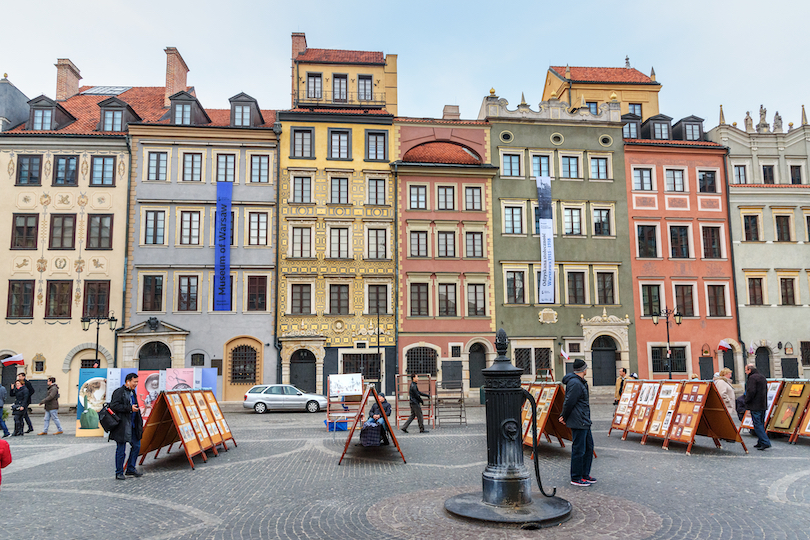
However, there are so many more things to do in Warsaw than just its historic past. It also has a thriving art scene, diverse culinary offerings (with many foreign influences), and plenty of bustling neighborhoods that champion modernity.
In short, Warsaw is a fascinating melting pot of creativity, innovation and resilience that will blow your mind. The best way to experience Warsaw is to embrace it with open arms.
17. Warsaw Barbican
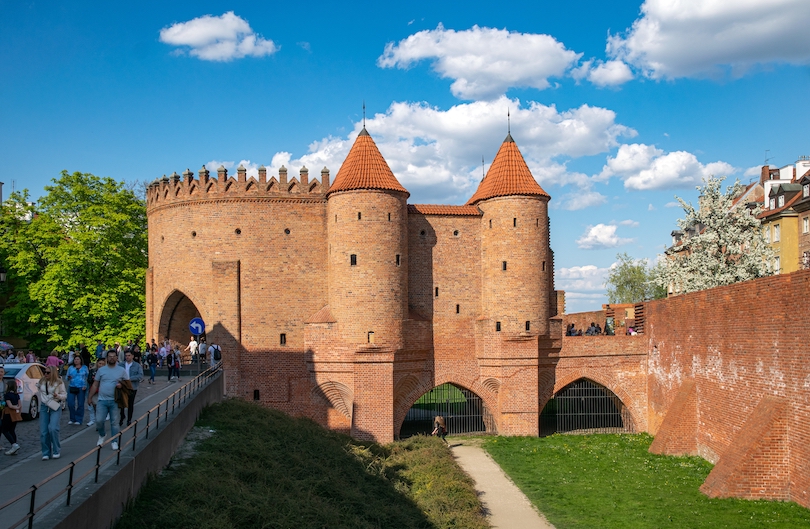
One of your first ports of call in Poland’s capital should be The Warsaw Barbican.
Built in the 16th century, this impressive defensive structure formed part of the fortifications surrounding Warsaw’s Old Town. It comprises thick walls and a series of watchtowers, that remain one of Europe’s last remaining preserved examples of such military architecture.
The structure also features turrets and a distinctive red-brick facade, which showcases Gothic and Renaissance architectural elements. It can be reached by traversing the iconic bridge that leads to it.
Inside the Barbican is a museum with exhibits that detail its history and significance. It provides a good insight into the city’s resilience and enduring spirit.
16. St Anne’s Church
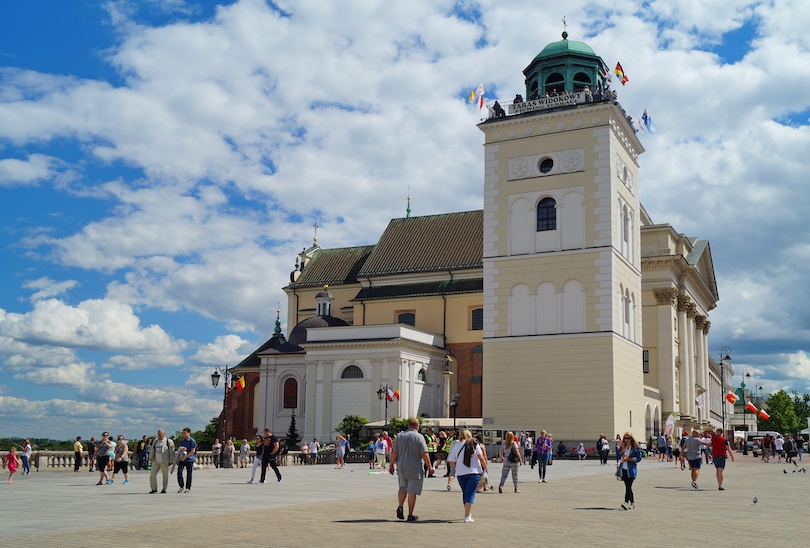
Poland is one of the world’s most religious countries and it houses several centuries-old cathedrals and churches. One of the best of them is St. Anne’s Church.
Founded in the 15th century, the church incorporates both Baroque and Gothic designs. It also features a striking facade that instantly captivates with intricate sculptures, reliefs and other ornate details.
If you like the outside of the church, you should find its interior just as compelling. The remarkable altarpiece and its intricately carved wooden decorations are just two of the features that dominate its layout. Come as soon as it opens to appreciate them at the quietest time.
Moreover, it’s worth climbing to the top of the church’s tower. From there, you’ll get superb panoramic views of Warsaw’s skyline – which you can take plenty of beautiful photos of.
15. Zlote Tarasy
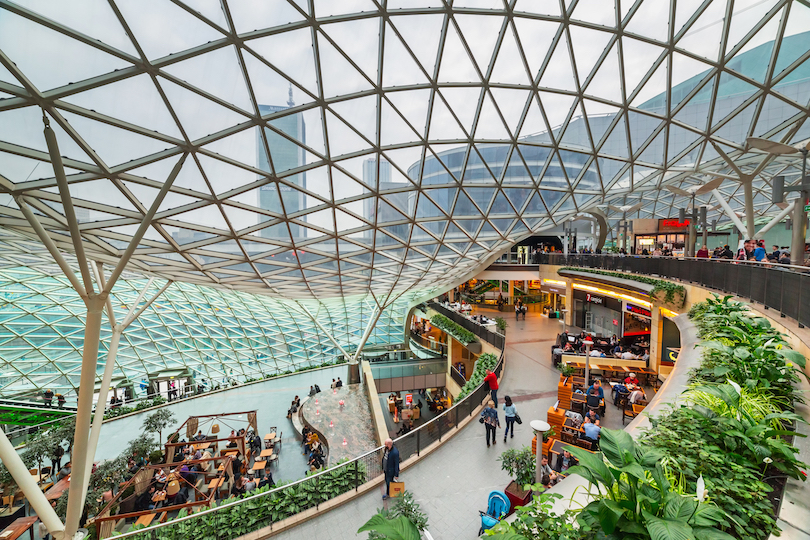
Złote Tarasy is one of Warsaw’s premier complexes for shopping and entertainment. So, if you fancy some retail therapy or want to watch a performance of note, this is the place to come.
Opened in 2007, this architectural marvel is renowned for its undulating glass roof, which is reminiscent of sea waves. It integrates seamlessly with the surrounding urban landscape and accommodates various shops, restaurants and entertainment venues. It also hosts a multi-screen cinema and a fitness center for those who fancy a workout.
As it is near the Warsaw Central Station, the Złote Tarasy is easily accessible. Its design, which features a mix of contemporary and innovative materials, reflects Warsaw’s dynamic spirit of renewal.
14. Chopin Monument
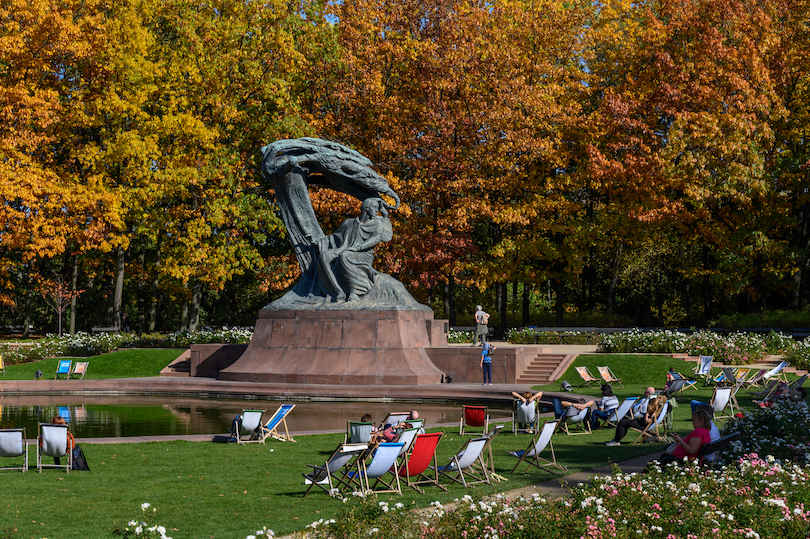
One of Poland’s most famous sons is the composer Frédéric Chopin. If you are a fan of his classical music or happen to be in the lush surroundings of Łazienki Park, it’s worth checking out the Chopin Monument.
This poignant tribute takes the form of a bronze statue that captures Chopin in a contemplative pose. It was sculpted by Wacław Szymanowski and first unveiled to the public in 1926. Surrounding the sculpture is a circular stone bench where you can sit and enjoy the serenity of his music. If you happen to do this around sunset, it is a magical experience.
Having survived the ravages of World War II, the monument has become an endearing symbol of Warsaw’s cultural identity and resilience. In the summer, regular open-air concerts are held here.
13. Castle Square
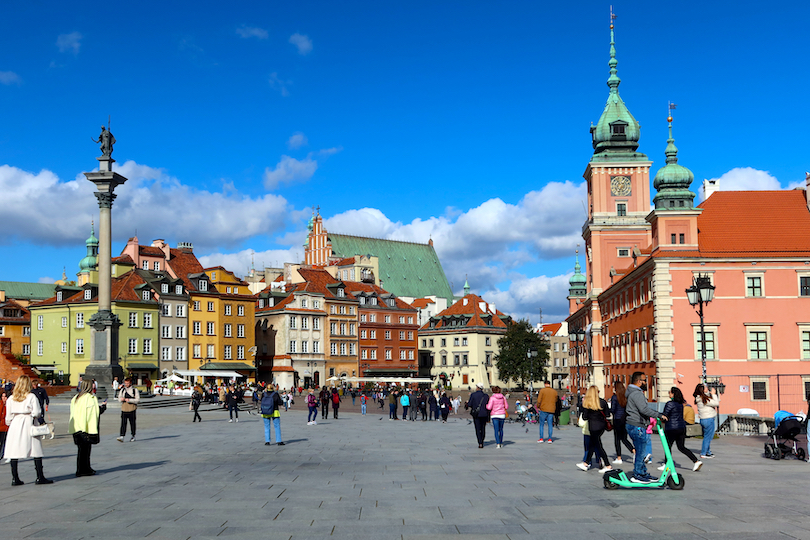
Situated right in front of the Royal Castle is Castle Square. Locally known as Plac Zamkowy it serves as a starting point for exploring the historic Old Town. At the same time, it is a popular meeting place for locals and tourists.
Surrounded by colorful townhouses, the square dates back to the 17th century. Although it was heavily damaged during World War II, both the square and the castle have been painstakingly reconstructed.
Overall, the square is a vibrant hub of charming cobblestone streets, buzzy cafes and interesting souvenir shops, which makes it a pleasant place to explore. At the center of it is Sigismund’s Column, a prominent landmark that pays homage to King Sigismund III Vasa.
12. Warsaw Uprising Monument
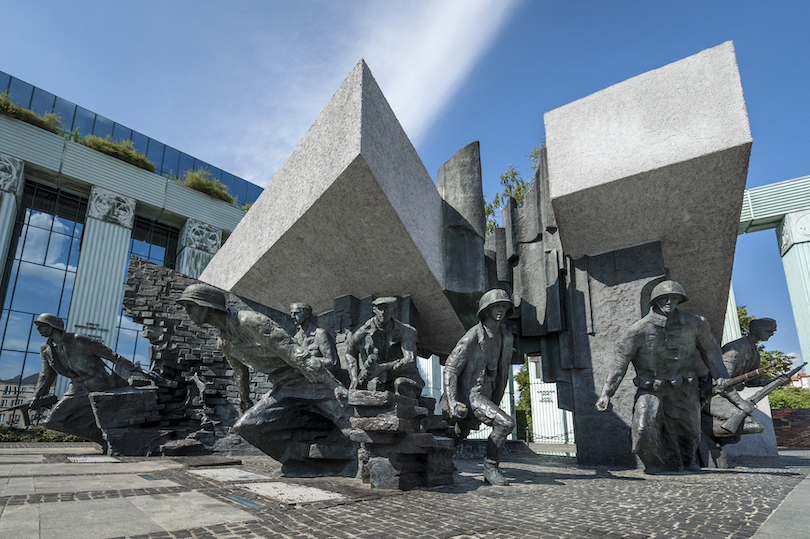
Another intriguing monument to see during your time in the city is the Warsaw Uprising Monument. It provides a solemn tribute to the resilience and sacrifice that the Polish people made during the Warsaw Uprising of 1944.
The bronze memorial was unveiled in 1989 on the 45th anniversary of the uprising. It was created by Wincenty Kućma and honors the brave men and women who fought against Nazi occupation. To see it, you’ll have to make your way to the southern end of Krasinski Square.
The memorial site also includes an underground museum that provides more information about the finer points of the uprising. Whilst there, visitors can witness the stark reality of wartime struggles and pay respects to those who endured unimaginable hardships.
11. Chopin Museum
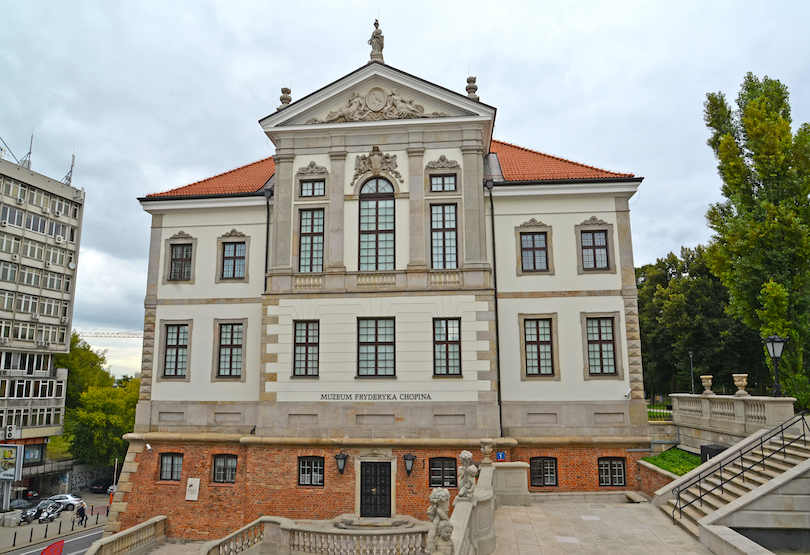
As well as the Chopin Monument, it is worth checking out The Chopin Museum if you are a fan of classical music.
This brilliantly thought-out and well-maintained museum takes you on a captivating journey through the life and works of this genius composer. It is housed in the Ostrogski Palace and opened its doors in 2010 after an extensive renovation.
The museum features interactive exhibits that provide an immersive experience to visitors. They allow them to explore Chopin’s world through multimedia displays, original manuscripts and even his personal belongings.
Showcasing the composer’s life from childhood to his international acclaim, the museum offers a profound insight into his creative process and the cultural context of his time.
Thanks to innovative audio-visual installations and touch-sensitive screens, you should get a really good understanding of the man and his music.
10. Krakowskie Przedmieście
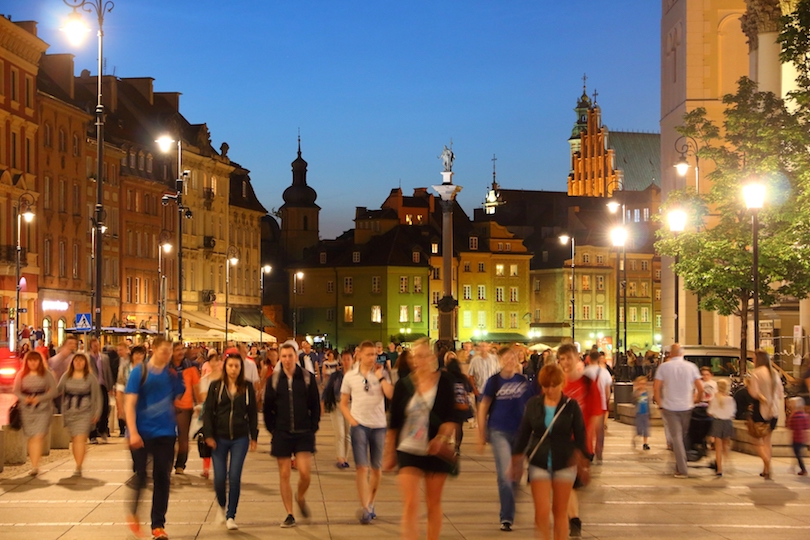
Connecting the historic Old Town with Wilanów Palace, Krakowskie Przedmieście forms part of the northern section of the famous ‘Royal Route’. It is renowned for its regal history and incredible architecture, including a parade of aristocratic residences, palaces, churches and elegant townhouses that exude a timeless charm.
For centuries, this grand boulevard has been a focal point of Warsaw’s cultural and social life and you get a real sense of this as you traverse the street. Notable landmarks like the Presidential Palace, the University of Warsaw and St. Anne’s Church can all be easily visited. Don’t be surprised if you spend a lot of quality sightseeing time here.
9. Copernicus Science Centre
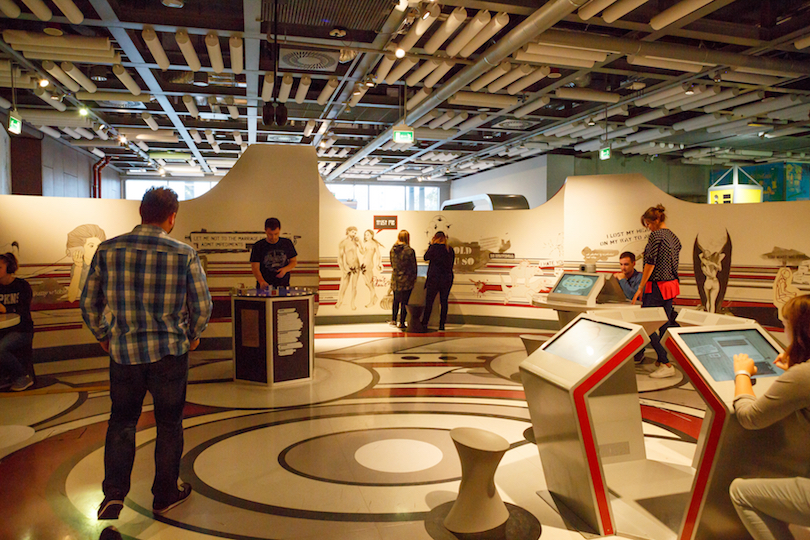
If you are into science, you’ll want to visit The Copernicus Science Center. This cutting-edge institution is named after the renowned astronomer Nicolaus Copernicus and is dedicated to promoting scientific curiosity and education.
The center boasts modern architecture that features a distinctive spherical structure. It also houses more than 450 interactive exhibits that span various scientific disciplines.
Wandering through the center, visitors can engage in hands-on experiments, explore the wonders of physics, biology and technology and participate in live demonstrations. The center is particularly family-friendly and encourages visitors of all ages to discover the joy of learning through play.
The planetarium and robotic theater are two must-visit destinations at the center.
8. POLIN Museum of the History of Polish Jews
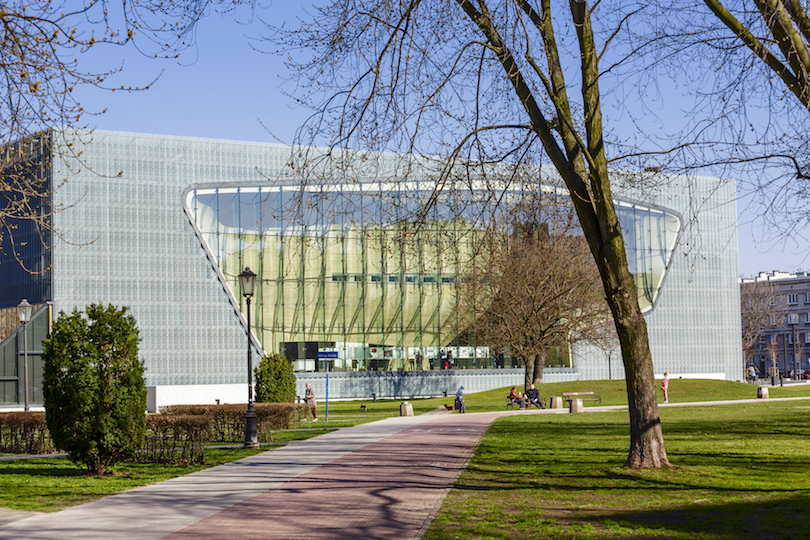
One of the most fascinating attractions in Warsaw is The POLIN Museum of the History of Polish Jews.
Located on the site of the former Warsaw Ghetto, the institution is the first and only one of its kind in the country. It focuses on honoring the memory of the community created by Jews in Poland. It opened in 2013 and is notable for its unique design, which resembles an open book that symbolizes a dialogue between past and present.
Once inside the museum, you’ll find immersive exhibitions that trace the history of Polish Jews from medieval times to the present day. They highlight the contributions, struggles and cultural richness these people brought.
Overall, the multimedia displays, artifacts and interactive installations provide a comprehensive and emotionally evocative experience for the visitor. The museum also hosts cultural events, lectures, and workshops regularly throughout the year.
7. Palace of Culture and Science
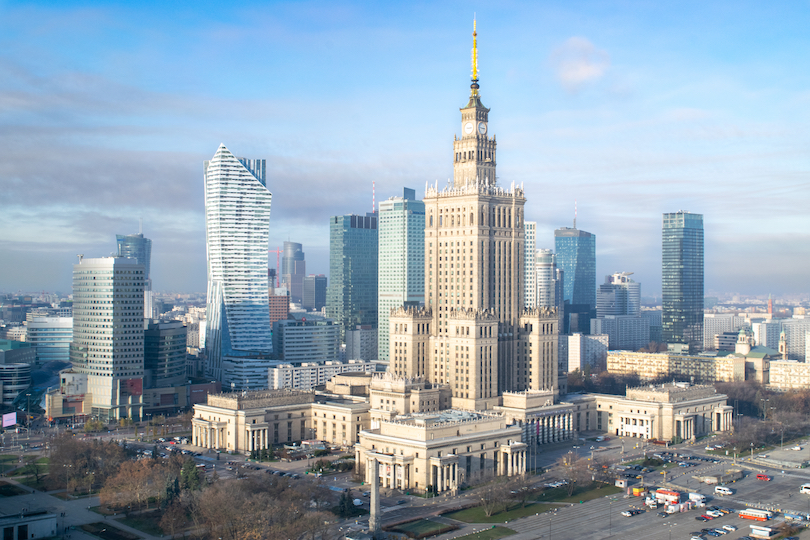
Dominating the skyline in Warsaw is the Palace of Culture and Science, which just happens to be the second tallest building in the country.
Completed in 1955 the structure was designed by Soviet architect Lev Rudnev, who blended various architectural styles, including Socialist Realism. Its design was inspired by the high-rise Art Deco buildings of America and historical Polish architecture.
It was previously known as ‘Joseph Stalin’s Palace of Culture and Science’, however, this name was later dropped during the time of destalinization.
Today, it houses various cultural institutions, theaters, museums and conference halls which you can visit. Tourists can also ascend to its panoramic terrace to enjoy breathtaking views of Warsaw.
6. Warsaw Uprising Museum
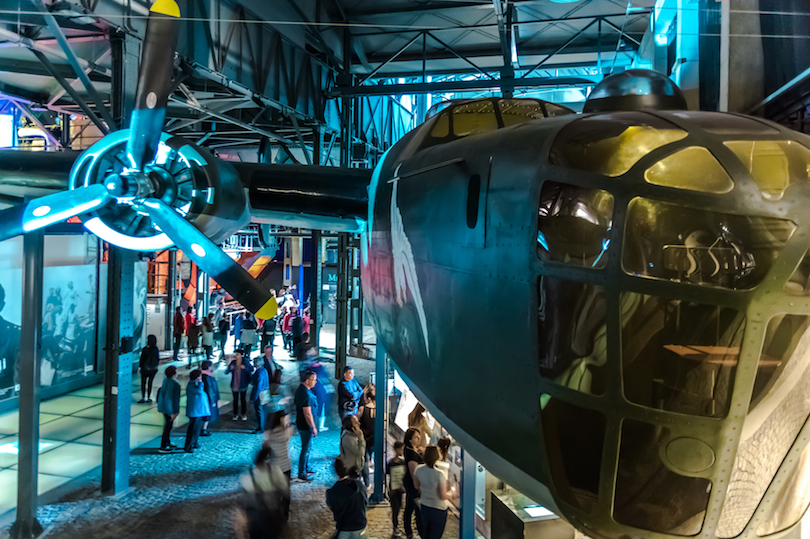
If you know your World War II history, you will understand how important the Warsaw Uprising Museum will be to visit. If you don’t, then that is all the more reason to go there.
As its name implies, the museum pays a poignant tribute to the heroic spirit of the Polish resistance during the Warsaw Uprising of 1944. It is housed in a former tram power station and features exhibits that depict the daily life, struggles, and sacrifices of the insurgents.
Through multimedia displays, personal testimonies, and a replica of the underground city where the resistance operated, you’ll gain a good understanding of their experiences.
Visitors can explore an extensive collection of artifacts, including weapons, documents and photographs. At the same time, a reconstructed B-24 Liberator bomber aircraft is a notable highlight.
5. Wilanow Palace
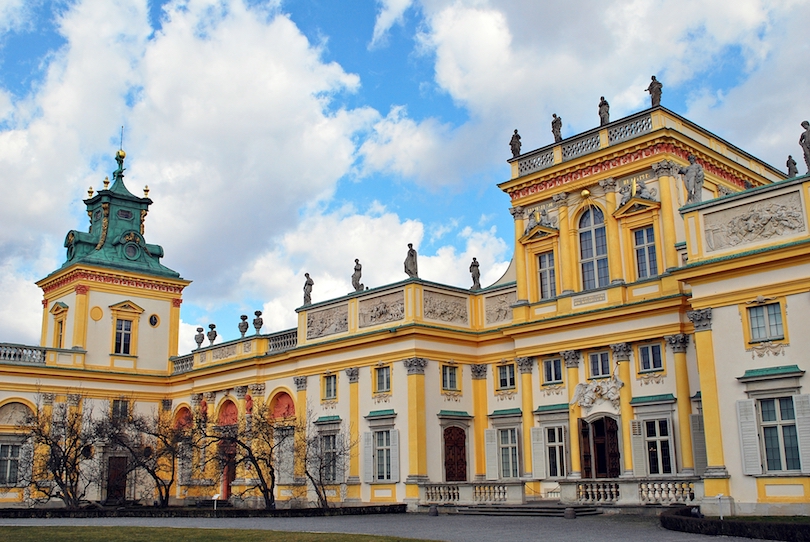
Nestled in the Wilanów district of Warsaw resides one of the country’s most significant historical buildings – Wilanów Palace.
Commissioned by King John III Sobieski in the late 17th century, the palace served as a royal residence and embodied the splendor of Poland’s golden age. It is beautifully set among stunning gardens and parks replete with fountains, sculptures and manicured lawns that are an attraction in themselves.
What makes Wilanów Palace immediately stand out is its seamless blend of Baroque, Rococo and Neoclassical architectural styles. You’ll want to snap plenty of photos from different angles to capture its true beauty.
Once inside, you’ll see an impressive collection of art, furnishings and period artifacts that offer a glimpse into the opulent lifestyle of Polish royalty.
4. Nowy Swiat
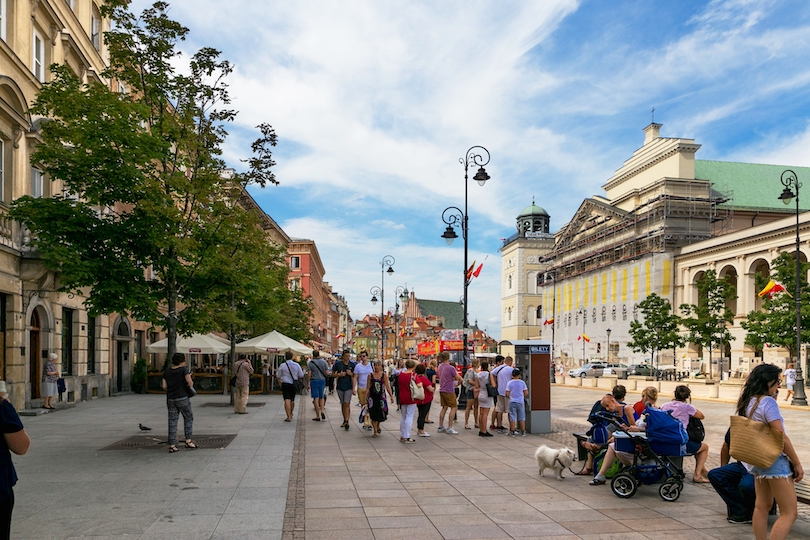
Dating back to the 17th century Nowy Świat is one of the main thoroughfares in Warsaw. Its name translates to ‘New World Street’ in English and it connects Castle Square with Charles de Gaulle Roundabout.
Noted for its historic buildings, boutique shops and inviting cafes, Nowy Świat boasts a cosmopolitan atmosphere. It also provides a picturesque route to navigate your way through the heart of the city.
Surviving wars and countless reconstructions, the street possesses an architectural diversity that features styles from different periods. It also has many restaurants that provide excellent opportunities to try local delicacies like Kopytka (dumplings) and Gulasz (stew). In addition, you’ll find plenty of shops that will enable you to do a bit of retail therapy.
3. Royal Castle
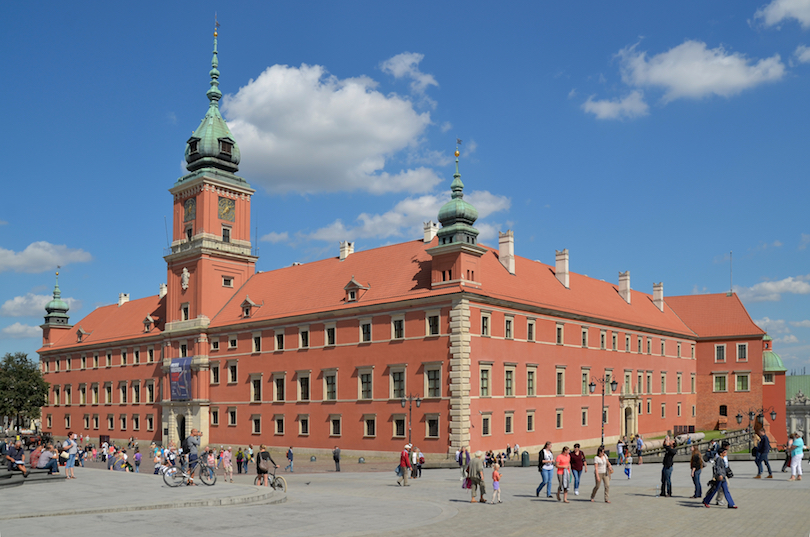
Perched atop Castle Square in the heart of the Old Town is Warsaw’s famous Royal Castle. Originally built in the 14th century, it stands as a symbol of Poland’s regal heritage and resilience.
Over the years it has witnessed centuries of Polish history, serving as the residence of monarchs and as a political center. Unfortunately, it was severely damaged during World War II. However, it has been meticulously restored to its former glory, thanks to reconstruction efforts.
Tourists can explore opulent chambers, like the Great Apartment and the Throne Room, which are adorned with period furnishings and artwork. They can also enjoy the castle’s impressive collection of paintings, sculptures and royal memorabilia that relate the story of the city’s cultural legacy.
2. Lazienki Park
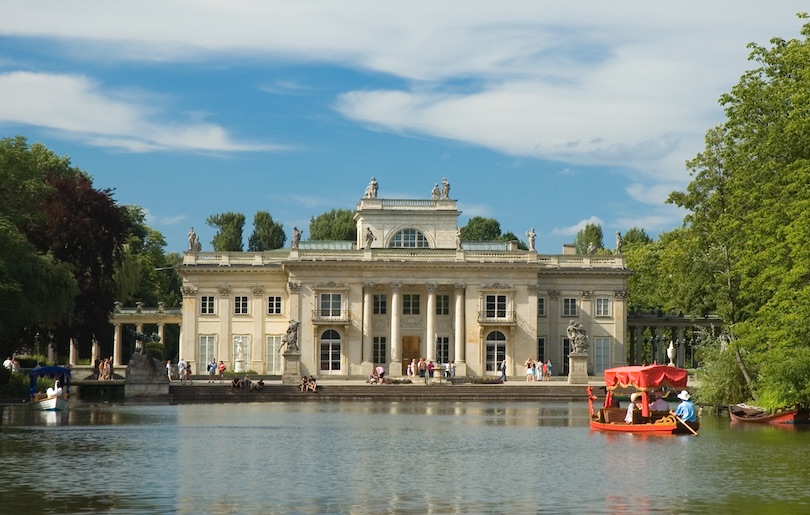
Warsaw doesn’t just have splendid architecture, it also accommodates beautiful greenspace too. One of the finest examples is Łazienki Park, which resides in the Downtown district, just off of Ujazdów Avenue.
Also known as ‘Royal Baths Park’, it is the largest park in the city and is celebrated for its scenic beauty and cultural significance. It was originally designed in the 17th century and later transformed into a summer residence for King Stanisław August Poniatowski.
The park encompasses the neoclassical Palace on the Isle, a picturesque amphitheater and charming pavilions scattered amidst lush landscapes. It also hosts outdoor concerts, cultural events and the annual Chopin Concerts – which take place at the foot of the monument which resides within it.
1. Old Town Market Square
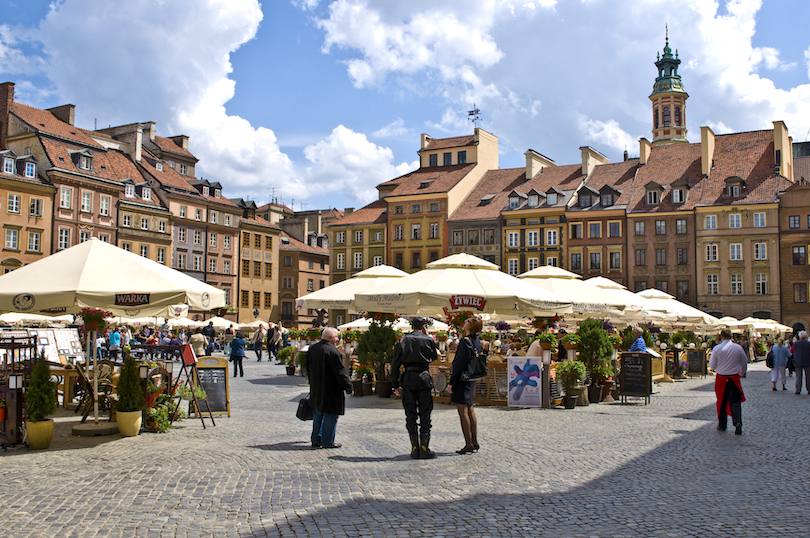
For most visitors to Warsaw, the Old Town Market Square (Rynek Starego Miasta) is somewhere they will spend quite a bit of time.
This remarkable square bristles with charm, historical and cultural significance. Originally it was constructed in the 13th century, but much of the city was destroyed during World War II. However, the area has been so well restored it’s almost impossible to tell it was previously damaged.
The square is surrounded by colorful townhouses and boasts a lively ambiance with outdoor cafes, restaurants and various street performers. It also features the imposing Warsaw Mermaid statue and is home to landmarks like the Adam Mickiewicz Museum and the Historical Museum of Warsaw.
While the square is buzzy all day, it is worth heading down there in the evening, as that is when things really liven up.
Best Time to Visit Warsaw
Straddling the Vistula River, Poland’s capital Warsaw enjoys a continental climate with cold, cloudy winters and relatively warm, sunny summers. May to September is the most popular time to visit when temperatures average from 18 to 24°C (64 to 75°F).
While July and August are the busiest, most expensive months, there are lots of fun events like the Warsaw Summer Jazz Days and Chopin Summer Concerts to attend. The whole city has a lovely vibe with its numerous parks and green spaces looking their best.
Either side of summer, Warsaw is still very pleasant to visit though huge crowds still throng about the center. As October sees the prestigious Warsaw Film Festival take place, it is only in the much-colder November that the city finally falls quiet.
December, however, immediately sees a return to business as people flock here for its cozy, traditional Christmas market – one of the biggest and best in Poland. The city then slumbers until spring when the fresh flowers make its river and parks very pretty to walk about again.
Where to Stay in Warsaw
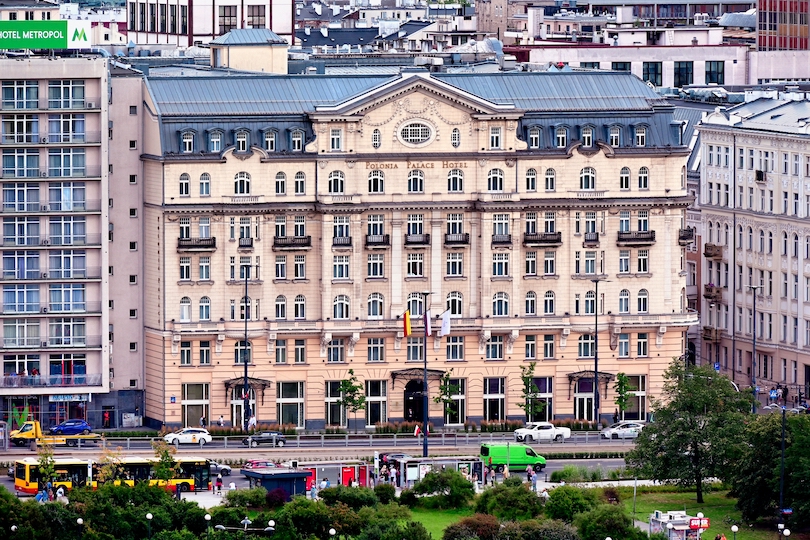
When it comes to finding somewhere to stay in Warsaw, there are plenty of options available to you.
But if it is your first time in the city, you should base yourself in Śródmieście, or more specifically the Old Town. This area is the heart of Warsaw and you’ll be close to lots of art galleries, theaters, museums, restaurants, shops and some of the city’s main attractions.
The historic Hotel Polonia Palace is a terrific accommodation choice in this area. It is located directly opposite the Palace of Culture and Science and features an excellent restaurant that serves European and Polish cuisine. It also has comfortable rooms and a nice lobby bar to relax and unwind.
Not far from the Hotel Polonia Palace is the Hotel Metropol . This budget option is just a 5-minute walk from the Palace of Culture and Science. It is known for its superb breakfasts and dinners which you can get from the on-site Metro Jazz Bar & Bistro Restaurant. It also has rooms with ensuite bathrooms.
How to get there
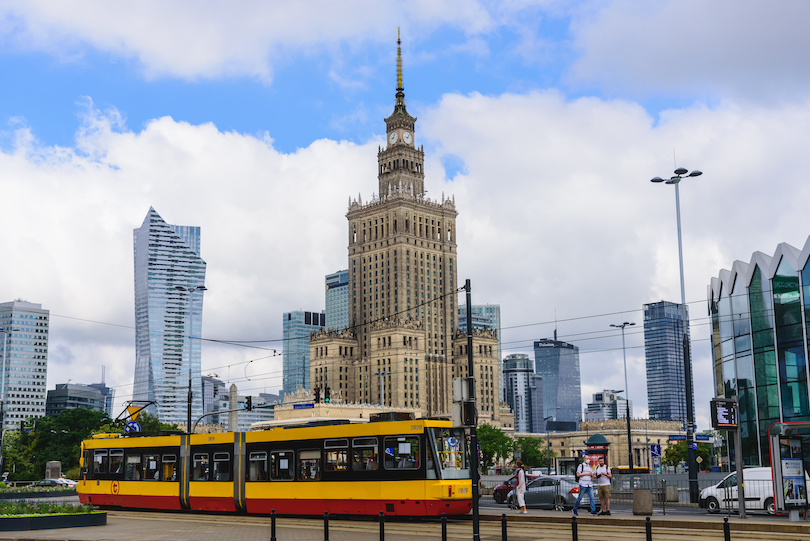
Like most capital cities in Europe, Warsaw is a relatively easy destination to get to via air and rail.
Warsaw Chopin Airport is the primary international gateway to fly into. It is situated about 10 km southwest of the city center and receives multiple flights a day from Europe, the USA and Asia.
American Airlines, British Airways, Lufthansa and Qatar Airways are some of the many airlines that fly there. Additionally, for budget carriers like Easyjet and Ryanair, Modlin Airport is another point of entry – about 40 kilometers north of Warsaw.
If you would prefer not to fly, the city is well-connected by an extensive train network. Warszawa Centralna (Warsaw Central Station) serves as the major hub for domestic and international rail travel.
Map of Tourist Attractions in Warsaw
Share this post:
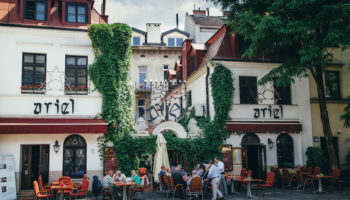
Where to Stay in Krakow: Best Neighborhoods & Hotels
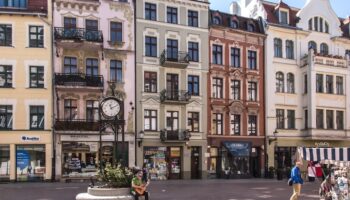
14 Best Things to Do in Torun, Poland
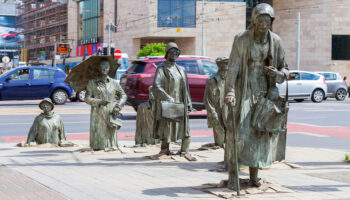
17 Best Things to do in Wroclaw, Poland
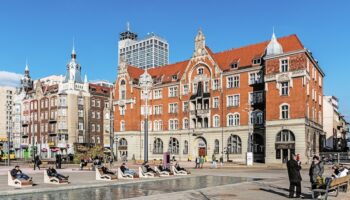
17 Best Things to do in Katowice, Poland
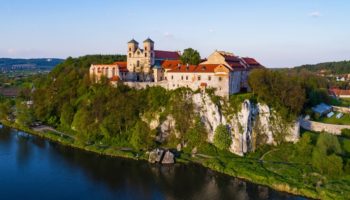
8 Best Day Trips from Krakow
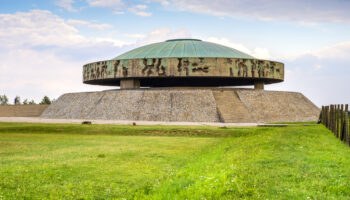
16 Fun Things to Do in Lublin, Poland
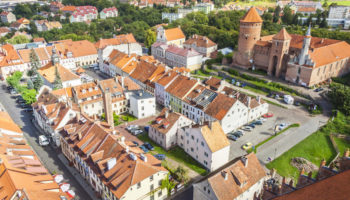
14 Stunning Small Towns in Poland
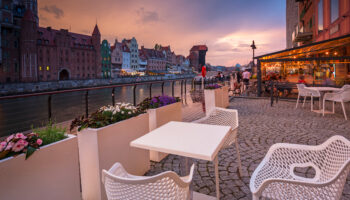
17 Fun Things to Do in Gdansk, Poland
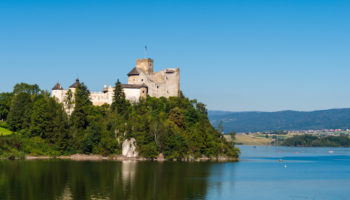
16 Most Beautiful Castles in Poland
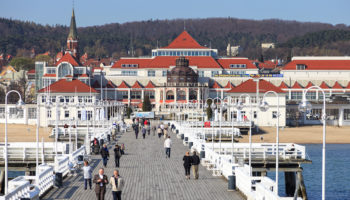
15 Best Cities to Visit in Poland
Reader interactions.
December 15, 2019 at 4:43 am
What bout Warsaw and its nightlife? I’ve been to Warsaw twice and it was the most crazy time in my life! I can recommend you mazowiecka street and new orleans in the centre!
Leave a Reply Cancel reply
Your email address will not be published. Required fields are marked *
This site uses Akismet to reduce spam. Learn how your comment data is processed .

19 Top Things to do in Warsaw: Museums, History and Travel Guide
December 30, 2023 | Posted in: Poland
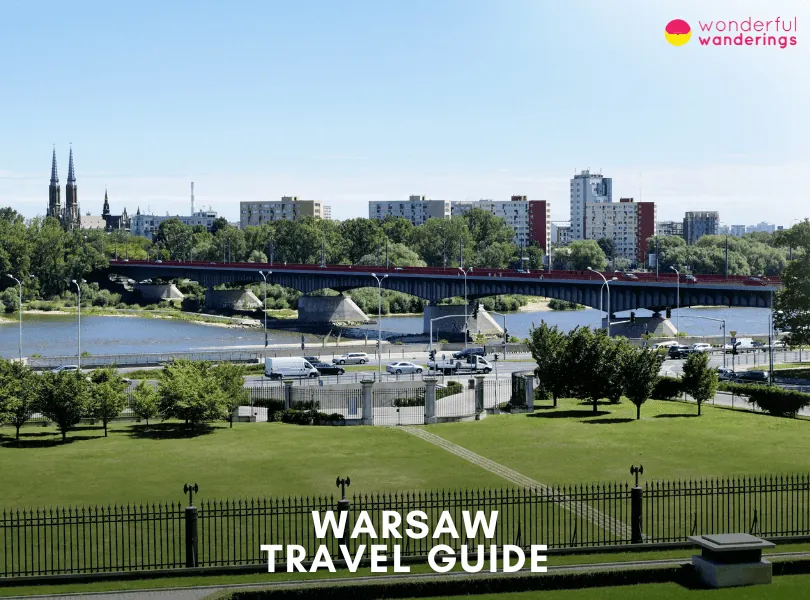
Warsaw is the capital and largest city of Poland. It is located in east-central Poland, 300 kilometers (186 miles) from the Baltic Sea coast and 260 kilometers (161 miles) from the Carpathian Mountains. Warsaw lies on the Vistula River, roughly halfway between Berlin, Germany and Moscow, Russia. Warsaw is the country's important political, economic and cultural center, with a total population of 1,747,155 as of 2023.
Warsaw originated as a small 13th-century fishing village but grew to prominence when it became the capital of the Duchy of Masovia in 1413. It then developed into the de facto capital of the Polish-Lithuanian Commonwealth in the 1600s, becoming a center of culture and the arts under the patronage of its kings. Warsaw endured many hardships over the centuries, including foreign invasions, plagues, fires and crackdowns on independence movements when it was partitioned and occupied by Prussia and Russia in the 18th and 19th centuries. Over 85% of Warsaw was completely razed by the Nazis after the Warsaw Uprising in 1944. Varsovians rebuilt the city from rubble after World War II. Warsaw has undergone an economic rebirth, becoming a thriving center of business, finance and technology in Central Europe today while preserving its long, culturally rich history.
Warsaw features top attractions such as the Old Town, which allows visitors to explore reconstructed medieval architecture and landmarks like the Market Square and the Museum of Warsaw. The Royal Route links streets, palaces, churches, parks and more that Polish kings once traveled. Łazienki Park features 75 hectares of palace grounds and gardens, with sights like the Chopin statue. The Warsaw Rising Museum's immersive exhibits commemorate the 1944 uprising against Nazi occupation. The Copernicus Science Centre delights visitors with 400+ interactive scientific experiments. The National Museum houses Poland's most extensive art collection spanning centuries, leading Polish artists across mediums and other top attractions only this city offers. Warsaw lies in the Central European Time zone (UTC+1). It observes Central European Summer Time with daylight saving time from late March through October, shifting clocks 1 hour forward to UTC+2.
Listed below are the things to do in Warsaw.
- Warsaw Old Town. The Warsaw Old Town is in the city center district of Warsaw, Poland. It has a history dating back to the 13th century when the area grew around the castle of the Dukes of Mazovia. Key landmarks include the Market Square with the iconic Mermaid statue, St. John's Cathedral, the city walls and defense fortifications and the Museum of Warsaw, presenting the city's 1000-year history. The area was severely damaged in World War II but meticulously rebuilt to restore its historic architecture and role as the city's heart. Visitors can explore sites like the Royal Castle, wander picturesque alleys, visit museums and dine at outdoor cafes and restaurants while soaking in the medieval atmosphere.
- Royal Route in Warsaw. The Royal Route is a historical pathway spanning major streets to connect landmarks across central Warsaw. It begins at the Royal Castle in the Old Town and ends at Wilanów Palace to the south, lined with elegant residences, churches, palaces, squares and sites associated with Polish royalty. Key areas include Krakowskie Przedmieście and Nowy Świat streets, home to sights like the Presidential Palace, Warsaw University and numerous churches. Visitors can admire the preserved Renaissance, Baroque and Neoclassical architecture along the route, do upscale shopping and dining and access green spaces like Saxon Garden and Łazienki Park.
- Łazienki Park. Łazienki Park is a 76-hectare park located in downtown Warsaw, originally built as a baths park for nobleman Stanisław Lubomirski in the 17th century. Its main landmark is the Palace on the Isle residence of King Stanisław August Poniatowski, set amidst gardens, lakes and peacock sanctuaries. Other architectural gems include the Myślewicki Palace, White House, Old Orangery Theater and statues like the Chopin Monument. Visitors can tour the lavish royal residences, stroll through different styled gardens from the 18th century, attend Chopin recitals and theater performances, rent boats and observe wildlife like roaming peacocks.
- Old Town Market Place. The Old Town Market Place is a reconstructed central square located in Warsaw's Old Town, lined with colorful Baroque and Renaissance-style townhouses. Landmarks include the bronze Warsaw Mermaid statue, St. Kazimierz Church and a memorial to Warsaw Uprising heroes. Visitors can shop, dine at cafes and restaurants around the perimeter, explore sights like St. Kazimierz Church, take photos of the Mermaid statue and experience events like summer concerts and crafts markets. It offers a glimpse into Warsaw’s history before the extensive destruction of WWII.
- POLIN Museum of the History of Polish Jews. The POLIN Museum presents the 1000-year history of Polish Jews before the Holocaust through a 4000 sq meter interactive exhibition. Set on the former Warsaw Ghetto site, key displays include films, objects like religious items and folk costumes, oral histories and an enormous replica 17th-century painted synagogue roof illustrating the diversity of Polish Jewish culture largely destroyed in WWII. Visitors can journey through galleries exploring the community’s early days, Golden Age, interwar years, tragedy in the Holocaust and Jewish revival today.
- Warsaw Uprising Museum. This modern multimedia museum commemorates the 1944 Warsaw Uprising against Nazi occupation during WWII. Its key features include a replica bomber aircraft, sewer passageways, insurgent artifacts and weapons, survivor testimonies, timelines and photographs documenting the 63-day struggle when Polish resistance forces unsuccessfully tried to liberate Warsaw, leading to the city's destruction. The museum offers an immersive experience conveying the desperate realities for resistance fighters and civilians during this seminal period in Warsaw’s history.
- Wilanów Palace. Wilanów Palace dates back to 1677 as a grand royal summer residence built for King John III Sobieski and styled after the Palace of Versailles. The Baroque architecture and lavish interiors contain priceless furnishings, paintings and other art spanning civilizations from ancient Rome to 17th-century China and Japan. The grounds are home to scenic gardens, fountains and greenery. Highlights include the preserved baroque royal apartments, temporary exhibits, opportunities for garden strolls and summer cultural events and concerts.
- Copernicus Science Centre. This modern, interactive science museum features over 400 hands-on exhibits spread across galleries with physics, light, environmental science and civilization themes based on experimentation and discovery rather than passive observation. Facilities include a planetarium, theaters, gardens and varied labs and workshops. Visitors pilot spaceships, race robots, build structures, paint with light, see physics phenomena in their bodies and engage with all aspects of science first-hand in an open “Experimental Zone” through games and challenges suited for all ages and interests.
1. Warsaw Old Town (Stare Miasto)
Warsaw Old Town (Polish. Stare Miasto Warszawskie), also known as Old Town Warsaw, is at Plac Zamkowy 4, 00-277 Warsaw, Poland. It is within Warsaw's Śródmieście (City Center) district, surrounded by the Vistula River. Warsaw Old Town has a long and tumultuous history. The settlement dates back to the 13th and 14th centuries when it was fortified with brick city walls. It grew up around the castle of the Dukes of Mazovia, which later became the Royal Castle. The Market Square (Rynek Starego Miasta) was laid out by the end of the 13th century. During World War II, the Old Town was severely damaged by Nazi German bombings and demolitions, which targeted Warsaw's historic areas. The reconstruction project was recognized as an outstanding example of rebuilding a historic city core, leading to Warsaw Old Town's inscription as a UNESCO World Heritage Site in 1980.
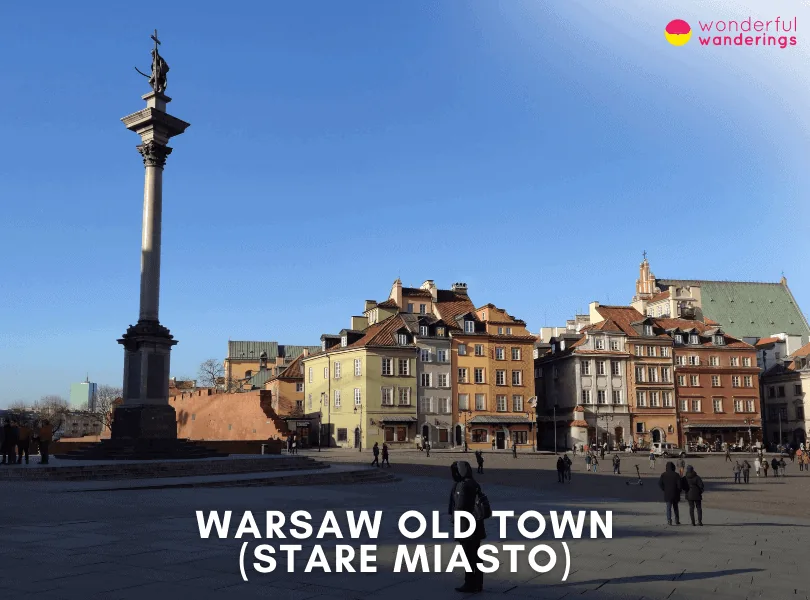
Warsaw Old Town contains many historic buildings and landmarks showcasing Renaissance, Baroque and Gothic architecture. Key sites include the Royal Castle, St. John's Cathedral, the city walls and defense fortifications like the Barbican, the narrowest house in Warsaw on Kanonia Street and the iconic Mermaid statue in the Old Town Market Square. Visitors can explore the Old Town Market Square and Castle Square and meander through atmospheric alleys and medieval basements. The Old Town is also home to the Museum of Warsaw, which presents the city's 1000-year history. Warsaw Old Town offers activities for all visitors. Families can take kids to the colorful townhouses, visit the whimsical Mermaid statue and walk along the medieval city walls. History buffs can tour sites like the Royal Castle, learn about Polish royalty and politicians buried in St. John's Cathedral and see Warsaw's oldest monuments. Foodies will enjoy the many cafes and restaurants with outdoor dining in summer. Photographers have endless opportunities to capture Warsaw's iconic sites. The district also hosts cultural festivals, winter Christmas markets and summer nightlife.
Visitors can take the S2 or S3 train directly to Warsaw Śródmieście station. The Warsaw Centralna is linked by tram and bus to the Old Town. The Old Town can be accessed on foot within Warsaw from hotels or attractions in the City Center district. Entry to Warsaw Old Town is free, requiring no admission tickets.
2. Royal Route in Warsaw
The Royal Route (Trakt Królewski) is in Warsaw, Poland's capital and largest city. It spans several major streets and connects the Old Town with the southern districts, passing various historic landmarks along an 11 kilometers (6 miles) route. The Royal Route has a long history dating back to the 16th century, when Warsaw became the capital under the Polish King Sigismund III Vasa. It began as a communication route linking the Royal Castle in Old Town to the king's Wilanów Palace residence further south. Aristocrats and wealthy citizens built magnificent homes, palaces, churches and squares along this prestigious route. Warsaw's golden age in the 17th and 18th centuries was when Polish kings and nobles would travel along the Royal Route during coronation processions or on other ceremonial occasions.
The central section of Warsaw's Royal Route runs along Krakowskie Przedmieście and Nowy Świat streets in the borough of Śródmieście. Key sites include St. Anne's Church, Presidential Palace, Warsaw University and churches like St. Joseph's and the Holy Cross Church, where the heart of composer Frederic Chopin is sealed inside a pillar. The route connects Old Town's Castle Square to Three Crosses Square, Łazienki Park and Wilanów Palace grounds.
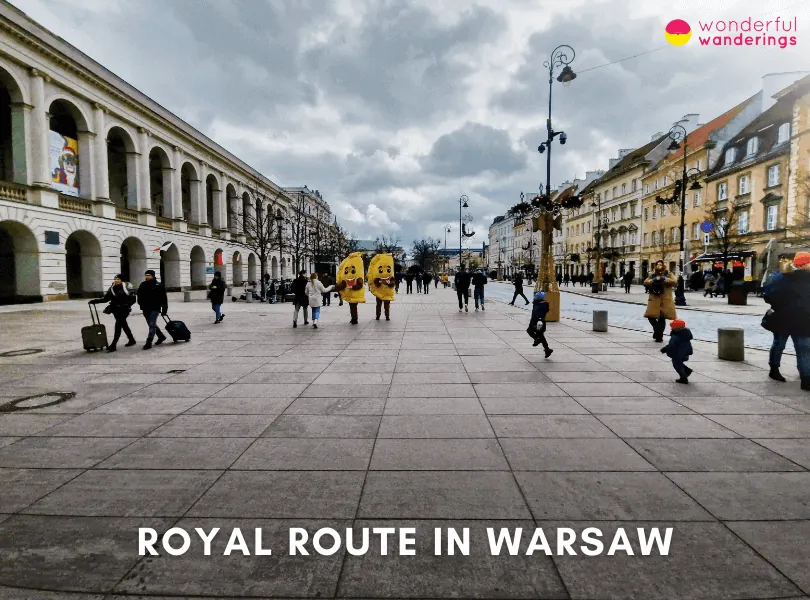
The Royal Route offers much for tourists to see and do. Visitors can admire the elegant Renaissance, Baroque and Neoclassical architecture along the route. History and architecture buffs will especially appreciate sites like the Royal Castle, St. John's Cathedral, historic townhouses and the University of Warsaw library. Many museums, galleries, cultural institutions, shops, cafes and restaurants are also dotted along the route. People strolling along the pedestrian sections can do upscale shopping or souvenir hunting on streets like Nowy Świat. The route also connects green spaces like Saxon Garden and Łazienki Park, allowing visitors to take scenic strolls past palaces and gardens. Free Chopin concerts are performed at Łazienki Park on Sundays from May to September. Those traveling with kids can visit the Copernicus Science Centre and enjoy the interactive exhibits.
The Royal Route is very accessible via public transportation. The central train station Warsaw Centralna offers trams and buses to Śródmieście district. Many buses run along the Royal Route, while the nearest metro stations are Centrum and Świętokrzyska. Visitors can also take taxis or walk from hotels situated along the route. Entry to the Royal Route streets is completely free. Visitors only need to pay admission fees for certain attractions like the Royal Castle Museum, Copernicus Science Centre or Wilanów Palace. Combo tickets are available for discounted entry to multiple sites. Guided walking tours along the Royal Route are also available.
3. Łazienki Park
Łazienki Park, known as Royal Baths Park, is in Warsaw, Poland's capital and largest city, at Ul. Agrykoli 1, 00-460 Warsaw. It lies in Warsaw's central Śródmieście (City Center) district, on Ujazdów Avenue, which links the Old Town with Wilanów to the south. Łazienki has a long history dating back to the 17th century when it was built as a bath park for nobleman Stanisław Herakliusz Lubomirski. In the 18th century, it was transformed by Poland's last monarch, King Stanisław August Poniatowski, into a setting for palaces, villas, pavilions, temples and monuments. Its 76 hectares contain a palace, amphitheatre, gardens, water features and peacock sanctuary. Key sites include the Palace on the Isle, Myślewicki Palace, the White House, the Old Orangery Theater and statues like the Chopin Monument.
Visitors can explore the regal Palace on the Isle, King Stanisław August Poniatowski’s home, see peacocks roaming freely and experience venues for arts and culture. The park is also home to the Botanic Garden and the Museum of Scouting. Visitors can tour historic palaces and museums like the Palace on the Isle, admire monumental sculptures by prominent artists and wander through different garden styles from the 18th century. The park offers lively spaces like the Old Orangery Gallery and quiet retreats within secluded garden nooks or the king’s former hermitage residence. The activities at Łazienki Park cater to all visitors, families, couples, culture aficionados, photography enthusiasts and nature lovers. The peacocks, row boats and Chopin recitals especially appeal to kids. The palace museums, art galleries and summer theater performances draw cultured crowds. The preserved historic interiors give architectural fans a glimpse into 18th-century royal life. The park’s scenic natural beauty makes it popular for wedding photo shoots.
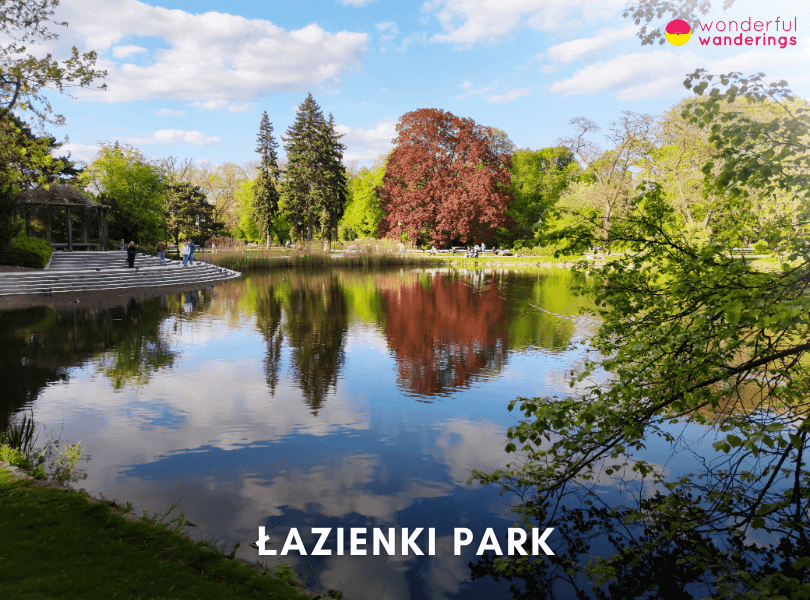
Łazienki Park is easily accessible by public transport or taxis from Warsaw city center. Visitors can take the S2 or S3 train directly to Warsaw Śródmieście station. The central train station Warsaw Centralna also offers buses and trams to Łazienki Park. The nearest bus stop within the park is Łazienki Królewskie. Visitors can also reach by foot or bike from nearby attractions like Wilanów Palace (30 mins) or the Old Town (50 mins). Entry to Łazienki Park is free, with no admission tickets required.
4. Old Town Market Place
The Old Town Market Place (Polish. Rynek Starego Miasta) is located in the heart of Warsaw's Old Town, in the Śródmieście (City Center) district of Warsaw, Poland. The full address is Plac Rynek Starego Miasta 2, 00-272 Warsaw. The Old Town Market Place has a long history dating back to the 13th century, when Warsaw was first founded. It originated as a central square where guilds would meet, merchants would trade and public events would be held. Immediately after World War II, it was systematically destroyed by the Nazis as retaliation after the Warsaw Uprising. After the war, the Old Town Market Place was meticulously rebuilt to recreate its former glory. It is one of Warsaw's top tourist attractions.
Old Town Market Place has historic significance as the heart of Old Warsaw. The square is lined with colorful reconstructed townhouses exemplifying Baroque, Renaissance and Gothic architecture. Key landmarks include the bronze Warsaw Mermaid statue in the center, St. Kazimierz Church and the monument to the Warsaw Uprising heroes. Visitors can explore historic sights, dine al fresco, people-watch or soak in street performances and events at the square. Visitors can tour St. Kazimierz Church, admire the architecture of the reconstructed townhouses, take photos of the iconic Warsaw Mermaid statue, wander around the square, shop for souvenirs, dine at one of the restaurants around the square or simply sit and people-watch. The square hosts lively cultural events on summer weekends, like concerts and historical reenactments. The activities at the Old Town Market Place cater to all visitors. families, couples, historians, architecture enthusiasts, photographers, etc. Kids especially enjoy seeing the colorful buildings, wandering around the square and spotting the mermaid statue. Historians appreciate sites like the Warsaw Uprising Museum located just off the square. Foodies flock to the restaurants and cafes lining the square. The lively atmosphere draws tourists and locals alike.
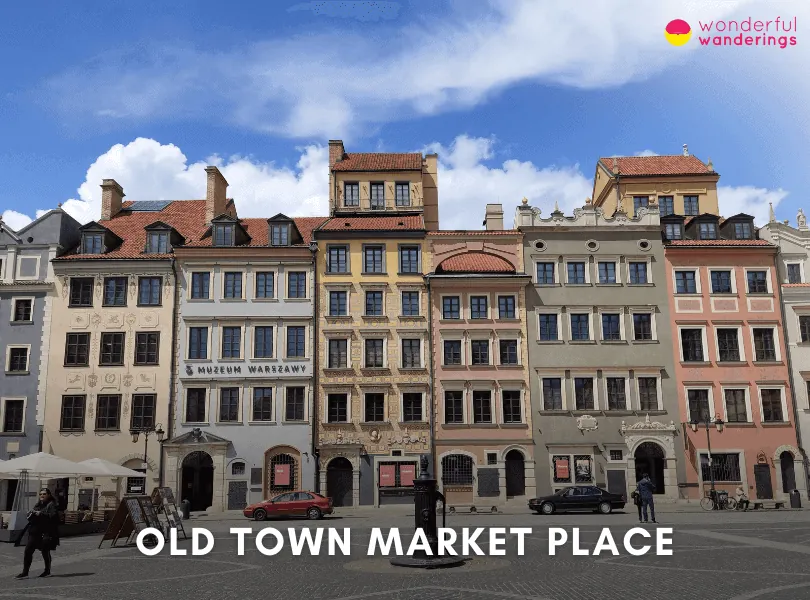
The Old Town is located in Warsaw's City Center and is easily accessible via public transport, taxi or walking. Visitors can take the S2 or S3 train directly to Warsaw Śródmieście station to the Old Town Market Place. The central train station, Warsaw Centralna, also offers buses, trams and metro trains to the Old Town area. Many buses and trams run along the nearby Krakowskie Przedmieście street. The Old Town area is also very walkable from hotels and attractions in central Warsaw districts like Śródmieście. Entry to the Old Town Market Place is free, with no admission tickets required. Visitors only need to pay for dining at the restaurants/cafés around the square or optional attractions like the Warsaw Uprising Museum.
5. POLIN Museum of the History of Polish Jews
The POLIN Museum of the History of Polish Jews (Polish. Muzeum Historii Żydów Polskich) is located in the Muranów district of Warsaw, Poland, at 6 Anielewicza Street, 00-157 Warsaw.
The museum has a deeply symbolic location, situated on the site of the former Warsaw Ghetto, where hundreds of thousands of Polish Jews tragically perished during the Holocaust. The museum was established to honor the memory of Polish Jewish life and culture in Poland, spanning over 1000 years before it was largely destroyed in the Holocaust. Its unique Core Exhibition documents the social, religious and cultural worlds of Polish Jewry. Construction began in 2009 on a site specially designated by the Warsaw City Council. The museum building was designed through an international architectural competition, ultimately won by the Finnish studio Lahdelma & Mahlamäki Architects.
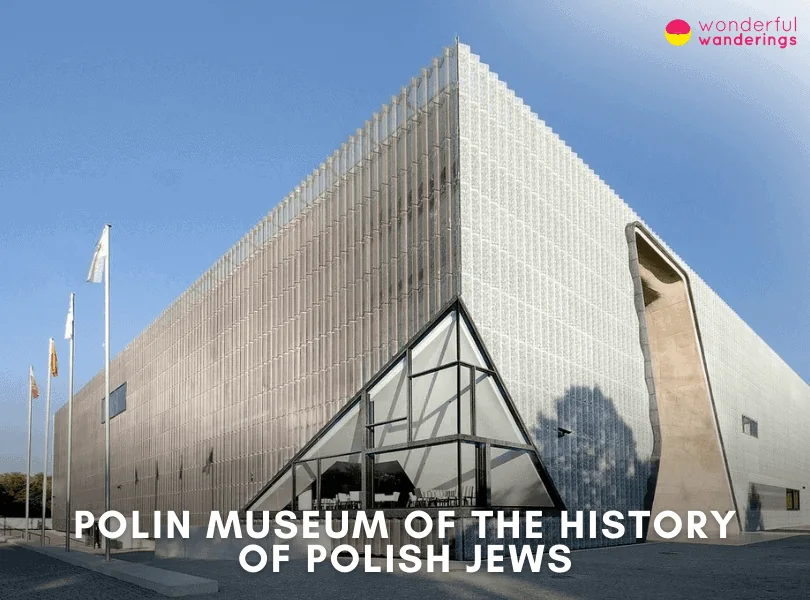
POLIN Museum features an immersive Core Exhibition spanning over 4000 sq meters, recounting the epic 1000-year history of Poland's Jewish community using multimedia installations, paintings, films, reconstructions and hundreds of original artifacts. The galleries vividly showcase the diversity of Polish Jewish life, from early settlement to the community's ‘Golden Age', the interwar years, the tragedy of the Holocaust and finally, the Jewish revival today. One of the exhibition's showstoppers is an enormous replica of the intricately painted ceiling and roof beams of a 17th-century wooden synagogue. Visitors to the POLIN Museum can journey through the Core Exhibition's eight galleries displaying a thousand years of Polish Jewish arts, culture and heritage. Visitors can view films, listen to oral histories, explore interactive maps and installations and admire a multitude of precious objects like folk costumes, religious items, books, paintings and Jewish folk art illuminating the lost world of Polish Jews. The POLIN Museum offers activities catering to all visitors, families, school groups, researchers, culture lovers and anyone interested in learning about the long and culturally rich history of Polish Jewry. The museum also hosts workshops, debates, concerts, festivals and holiday events like Hanukkah celebrations.
The POLIN Museum is easily accessible using Warsaw's excellent public transportation system. Visitors can take a 25-minute train directly to Warsaw Śródmieście station, then transfer to tram #15, #18 or #35 for the short ride to the POLIN Museum stop. The museum is situated close to the city center and major hotels. Parking is available for visitors driving to the museum. Entry tickets to the POLIN Museum's Core Exhibition cost 25 PLN ($6, 6€, 4£) with extra fees for temporary exhibits, workshops and family activities. The museum is closed on Mondays and certain public holidays.
6. Warsaw Uprising Museum
The Warsaw Uprising Museum (Polish. Muzeum Powstania Warszawskiego) is located in the Wola district of Warsaw, Poland, at 79 Grzybowska Street, 00-844 Warsaw. The museum is dedicated to commemorating the Warsaw Uprising of 1944, when Polish resistance forces led by the Home Army rose against the Nazi German occupation for 63 days. The idea to build a museum originated in 1983, but construction only began in 2003. The museum opened on July 31st, 2004, to coincide with the 60th anniversary of the start of the uprising. Its creation was seen as a tribute to the fallen heroes and the enormous sacrifice of Warsaw's residents.
Warsaw Uprising Museum features modern architecture and an immersive, multimedia approach to presenting history. The building features a cracked glass facade, symbolizing the rupture between pre-war and contemporary Warsaw. Inside, the museum spans over 3000 sq meters with hundreds of exhibits and installations reflecting different aspects of life during the uprising. Key highlights include the replica of a Liberator B-24J bomber used in supply drops, sewer tunnels recreating the insurgent passageways, an interactive map plotting troop movements and chilling video testimonies of survivors. Visitors to the Warsaw Uprising Museum can view films and video displays, listen to audio recordings of insurgents and survivors, explore underground passageway replicas, see artifacts like homemade weapons and medical equipment, admire photos and documents from the uprising and occupation of Warsaw, learn about key figures and witness events through maps and timelines. The multimedia exhibits and artifacts at the Warsaw Rising Museum cater to visitors of all ages and interests.
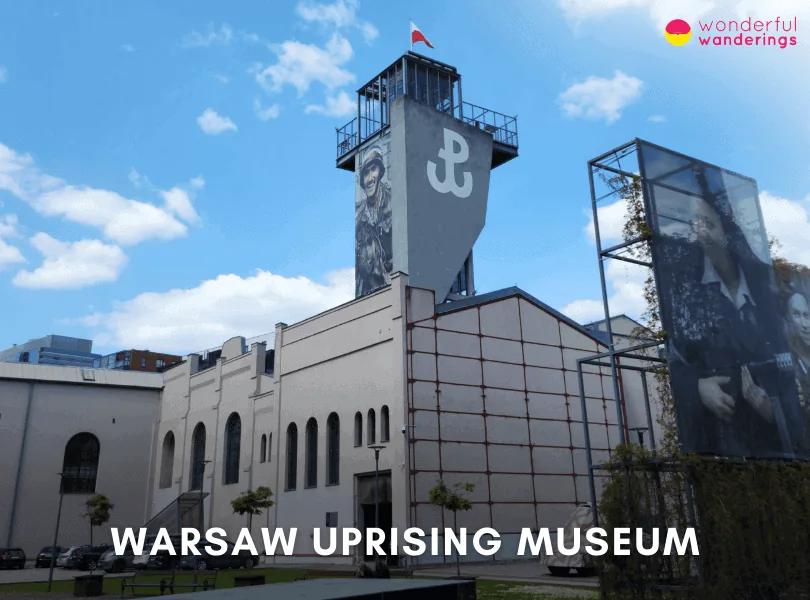
The Warsaw Uprising Museum is easily accessible by public transport, located close to the city center. Visitors can take the S2 or S3 train to Warsaw Śródmieście station, then either walk 15 minutes or take any eastbound trams along Marszałkowska Street to the museum stop. The museum is also within walking distance from hotels in the Śródmieście district. Entry tickets to the permanent exhibition cost 25 PLN (6€, $6, £4) with discounts for students and seniors.
7. Wilanów Palace
Wilanów Palace is located in the Wilanów district of Warsaw, Poland's capital and largest city. The full address is Stanisława Kostki Potockiego 10/16, 02-958 Warsaw. It is 10 kilometers (6.2 miles) south of Warsaw's city center. Wilanów Palace has a long and storied history. Construction began in 1677 under the commission of King John III Sobieski, who wanted a grand suburban residence resembling the Palace of Versailles. The initial design was by Augustyn Wincenty Locci in a style combining elements of Polish nobility architecture with an Italian suburban villa. After Sobieski died in 1696, the palace changed hands multiple times, with various owners adding their flourishes. Wilanów Palace is one of Poland's best-preserved royal residences, having survived the country's tumultuous history.
Visitors to Wilanów Palace can explore the lavish royal apartments on the main floor, including the Baroque-era King's quarters and the later 18th-century suites of various noble residents. People can admire the works of great painters like Rembrandt, along with antique furnishings and art from civilizations spanning ancient Rome to 17th-century China and Japan. The upper floors host temporary exhibits. The gardens, orangerie and park offer opportunities for scenic strolls. The palace hosts cultural events, summer concerts and an annual Royal Garden of Light show during winter. The activities at Wilanów Palace cater to varied visitors, from history and architecture buffs to families and photography enthusiasts. Kids can enjoy spotting whimsical garden sculptures, rowing on the lake and watching the peacocks wandering the lawns. The museum appeals to art aficionados, while the preserved 17th-century interiors give a glimpse of royal life for history fans. The beautiful grounds suit leisurely walks for nature lovers. Wedding parties frequently take photos on the grounds.
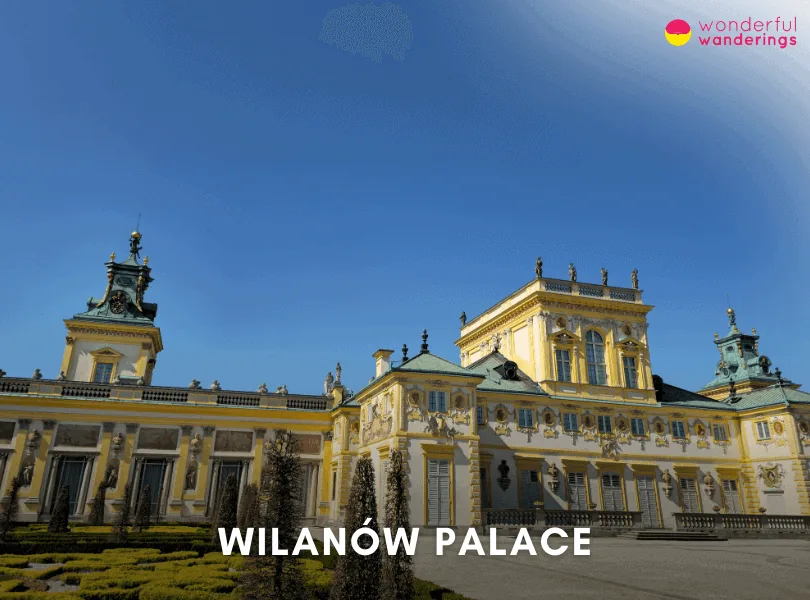
Wilanów Palace is easily reached from central Warsaw via public transit, taxi or bike. Visitors can take a 25-minute S2 or S3 train to Warsaw Śródmieście station, then transfer to bus #116, #180 or #516 directly to the Wilanów stop. The nearby Wilanowska metro station is set to open in 2023. The palace is also accessible on foot or bike from the Łazienki Park area (30 mins).
Entry tickets to the Palace Museum cost 25 PLN (6€, $6 £4). Combo tickets for the museum plus park are available. Special events like the Royal Garden of Light have additional fees. Through its well-preserved architecture, royal connections, and art collections, Wilanów Palace offers an elegant glimpse into Poland's past.
8. Copernicus Science Centre
The Copernicus Science Centre (Polish. Centrum Nauki Kopernik) is located in Warsaw, Poland, along the Vistula River at Wybrzeże Kościuszkowskie 20, 00-390 Warsaw. It lies in the Powiśle district, near the Warsaw University Library. The origins of the Copernicus Science Centre date back to the 1990s when Polish Radio began organizing outdoor science-themed picnic events for families. The concept eventually grew into plans for a permanent interactive science museum. Construction on the ultra-modern glass and steel building began in 2008, led by young Polish architects from the RAr-2 Architecture Laboratory. The first section opened in November 2010 and additional galleries, a planetarium, labs and other facilities opened over the next year. It spans over 15,000 square meters.
Copernicus Science Centre is one of Europe's most advanced interactive science museums. It contains over 400 hands-on exhibits demonstrating scientific principles that visitors can experiment with. There are no glass cases or traditional museum displays. This focuses on sparking curiosity to explore natural phenomena through games, challenges and first-hand discovery. Exhibits are spread over galleries with themes like Humans and Environment, Light and Vision, Physics and Roots of Civilization, unified by an open “Experimental Zone”. Other facilities include laboratories, a planetarium, theaters, workshops, conference spaces and a rooftop garden. Visitors can pilot a spaceship, build bridges, see a flying carpet in action, race a hippo, try out artistic illusions, conduct robotic excavations, explore the physics of their bodies and countless other exhibits. There are also chemistry, physics, biology and robotics labs for supervised experiments. In the on-site planetarium, visitors can immerse themselves in films about space or the cosmos on its 360-degree screen. The interactive exhibits at the Copernicus Science Centre cater to visitors of all ages and backgrounds. Kids can enjoy age-specific galleries like “Bzzz!” for visitors under five, while teens have the “Re. Generation” area. Families, students, tourists, etc., can all tailor their visit based on interests ranging from art to space to engineering. Visitors typically spend 2-4 hours but can easily stay longer across the extensive exhibition space and facilities.
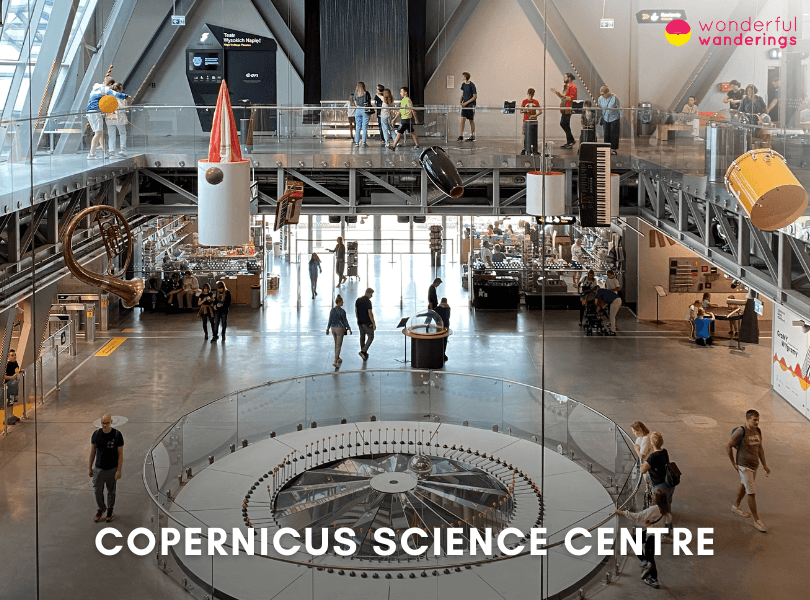
The Copernicus Science Centre has excellent transport links in central Warsaw near the Vistula River. Visitors can take the S2 or S3 train to Warsaw Śródmieście station (8 mins walk) or the metro line M2 to Centrum Nauki Kopernik station right by the museum. Many buses and trams also stop directly outside or nearby. Garage parking and bicycle racks are also available on-site.
Entry tickets to the permanent exhibitions cost 40 PLN (9€, $10, £7). The planetarium has separate ticket pricing of 28 PLN (6€, $7, £5). Discounted annual family memberships are available.
9. Warsaw Zoo
The Warsaw Zoological Garden, known simply as the Warsaw Zoo, at Ratuszowa 1/3, 03-461 Warsaw. It lies on the right bank of the Vistula River in central Warsaw. The Warsaw Zoo has a long history dating to its opening on March 11, 1928. The current zoo was established by a resolution of the Warsaw City Council in 1927. The first director was Wenanty Burdziński, former founder of the Kiev Zoo. In its early years, the Warsaw Zoo acquired animals from older closed zoos through purchases and donations. It quickly became a beloved institution among Warsaw residents. During World War II, the zoo suffered heavy damage from bombing and demolitions. Remarkably, zoo directors Jan and Antonina Żabiński saved hundreds of Jews by hiding them within the zoo grounds. The zoo was rebuilt and reopened in 1949. It houses over 11,000 animals representing over 500 species, spread across 40 hectares of green space.
Warsaw Zoo is right in the heart of the city center, allowing urban residents easy access to nature. Visitors can see a diverse collection of animals worldwide, displayed in thoughtfully designed enclosures resembling natural habitats as much as possible. Highlights include the elephant house, hippo pavilion with shark tank, reptile house, ape enclosure, aviaries and more. The zoo also runs conservation and breeding programs for endangered species. And its free-roaming peacocks wandering the grounds add a whimsical touch. Visitors can observe and learn about animals ranging from tiny insects to large mammals like elephants and rhinos. In indoor enclosures, people can tour the elephant, hippo, ape and reptile houses for close-up views of exotic species. Outdoor spaces like the bear habitat, seal pond and large bird aviaries allow seeing other animals in more natural settings. Interactive displays provide info about species and conservation. The Warsaw Zoo offers fun and engaging activities for visitors of all ages and interests. Families with kids can enjoy seeing all the varied animals while learning about wildlife. Interactive elements appeal to children. There is much to discover for adults interested in zoology, conservation and biodiversity.
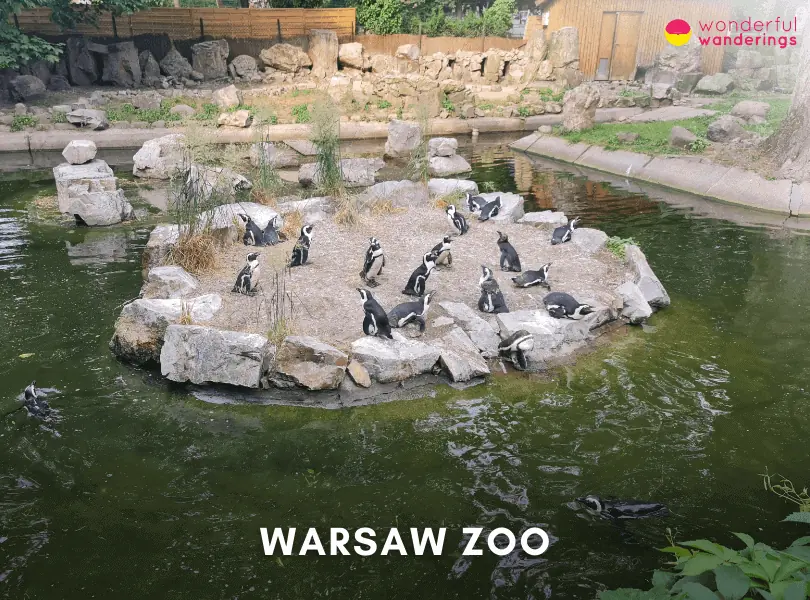
The Warsaw Zoo has excellent public transportation links, given its prime location in Warsaw's city center. It is within walking distance from attractions like the Old Town. Visitors can take the S2 or S3 train to Warsaw Śródmieście station, walk for 15 minutes or take tram #24 or #33 to the zoo's Ratuszowa stop. Warsaw Centralna train station also offers trams and buses to the zoo. The zoo has two gates on Ratuszowa and Jagiellońska Streets. Entry tickets to the Warsaw Zoo cost 10 PLN ($2, 2€, 1£). Discounted family and group rates are available.
10. Palace of Culture and Science
The Palace of Culture and Science (Polish. Pałac Kultury i Nauki) is located in central Warsaw, Poland, at Plac Defilad 1, 00-901 Warsaw. It lies in the Śródmieście (City Center) district of Warsaw. The Palace has a contentious history dating back to its construction from 1952-1955, when it was built as a “gift from the Soviet people” during Poland's communist era. The Palace was personally commissioned by Soviet leader Joseph Stalin and designed by Soviet architect Lev Rudnev in a monumental “socialist realist” style, resembling several similar Stalinist skyscrapers built across the Eastern Bloc. Over 3,500 Soviet workers assisted in erecting the 237 meters (778 ft) tall structure using high-quality materials and lavish decorations that were scarce in still war-ravaged Poland.
The Palace of Culture and Science is immense and has an instantly recognizable silhouette on Warsaw's skyline. Though controversial for its ideological symbolism, the Palace has, over time, become an iconic fixture of the city. Visitors can ascend to its 30th-floor viewing terrace 114 meters (374 ft) high for panoramic views of Warsaw. The Palace also houses many public facilities, including museums, theaters, cinemas, galleries, bookshops, restaurants, a large congress hall and a swimming pool. Surrounding the building are socialist realist sculptures of figures from fields like science and arts. The Palace has a memorable illuminated facade from far across the city at night. Visitors can view the expansive Congress Hall, see panoramic views from the 30th-floor terrace, visit the Museum of Technology or Poster Museum, watch a show at one of its theaters, see films at its multiplex cinema, go shopping at its bookstores, dine at its restaurants or simply admire the monumental architecture and decor. The activities at the Palace cater to varied visitors, tourists, families, culture aficionados, photographers, etc. The terrace view appeals to all ages for its wow factor. Events like concerts or theater shows suit nightlife-lovers. Museums and architecture interest culture fans, while the iconic facade provides endless photo-ops.
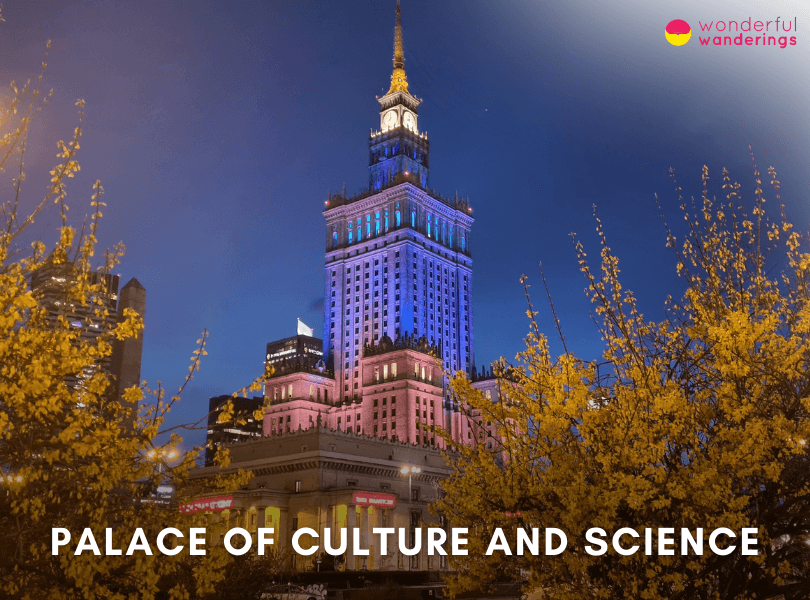
The Palace of Culture and Science has excellent public transportation access in Warsaw's thriving downtown. The nearby Centrum metro station, multiple buses and Warsaw Centralna train station provide links. Visitors can take the S2 or S3 train to Warsaw Śródmieście station (12 mins walk) or metro line M2 to Centrum station by the Palace. The central location also makes walking an option from nearby hotels or Old Town (25 mins). Entry to the Palace building is free, with charges only for certain attractions like the observation terrace, movies and events.
11. National Museum in Warsaw
The National Museum in Warsaw (Polish. Muzeum Narodowe w Warszawie) is located at Aleje Jerozolimskie 3 in the downtown area of Warsaw, Jerozolimskie 3, 00-495 Warsaw. The National Museum has a history dating back to 1862 when a Society for the Encouragement of Fine Arts was established in Warsaw. Its goal was to promote Polish arts and culture and help establish a national museum. The Museum opened to the public in 1864, though its early collection was small. Its current imposing building, constructed in 1927-1938, was inspired by Neoclassical architecture. Designed by architects Tadeusz Tolwiński and Antoni Jawornicki, it exemplifies Polish monumental style with imposing columns and a decorative facade.
The National Museum has a vast collection of Polish and international paintings dating from the 16th through 20th centuries, counting over 830,000 exhibits in total. Poland's most famous paintings are housed there, including Jan Matejko's enormous “Battle of Grunwald”. Other highlights include Gothic altarpieces, Orthodox icons, genre & portrait paintings from the 16th-18th centuries, a cabinet of prints and drawings and extensive collections of sculptures and decorative arts. Temporary exhibitions are also mounted in galleries on the 2nd floor.
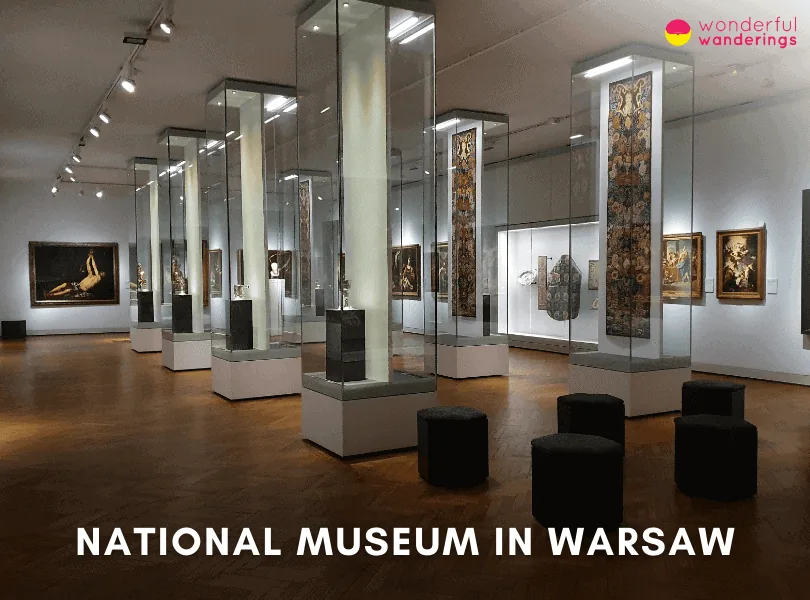
Visitors can tour multiple galleries chronologically showcasing the expansive collection, from medieval altarpieces to 20th-century Polish paintings. People can admire iconic large-scale Polish history paintings, view precious icons, see rare Renaissance portraits and discover works by leading international Old Master painters. The collection and activities at the National Museum cater to varied visitors, including art aficionados, history buffs, tourists and anyone interested in Polish cultural heritage. School groups, families and international tourists frequent the galleries due to the museum's central location and collection highlights familiar to worldwide art history.
The National Museum is conveniently located in Warsaw's city center on Aleje Jerozolimskie, a major street. It is within walking distance from attractions like the Old Town and easily reached by public transit. Visitors can take a 25-minute train to Warsaw Centralna station, walk for 15 minutes, or take any eastbound bus at five stops. Regular admission tickets to the permanent National Museum galleries cost 20 PLN (5€, $5, £3). Open Tuesday-Sunday, closed Mondays, and major holidays.
12. Warsaw Citadel
The Warsaw Citadel (Polish. Cytadela Warszawska) is in Warsaw, Poland. The full address is ul. Czerniakowska, 00-715 Warsaw. It lies in the Żoliborz district, on the west bank of the Vistula River. The Warsaw Citadel has a long and turbulent history. It was built between 1832 and 1834 by order of Russian Tsar Nicholas I, following the suppression of the November Uprising in 1830. The fortress was intended to bolster imperial control and intimidate Polish nationalists. Designed by Russian general Ivan Dehn, it covers 36 hectares and originally housed over 16,000 Russian troops. The imposing brick structure features high outer walls and bastions surrounding barracks, arsenals and prisons. The Warsaw Citadel is one of the best-preserved 19th-century fortress complexes in Poland. It is a monument to the complex story of Russian domination and Poland's struggle for independence.
Visitors can explore parts of the formidable historic defenses and learn more at on-site museums. The Citadel grounds are also home to two other museums, the Katyn Museum and the Museum of Polish Military Technology. The sprawling site offers scenic riverside walks with panoramic views of Warsaw. Viisitors can take self-guided tours along sections of the brick defensive walls, view historic guardhouses and fortifications and visit on-site museums. The activities at Warsaw Citadel cater to varied visitors, including history and military buffs, culture aficionados, sightseers and nature lovers. The fortress ground's scenic location makes it a nice spot for walking or running along the Vistula River. Families can enjoy the outdoor areas and take kids to the historic walls and cannons. Museums appeal most to adults and older youth interested in Polish history and Warsaw's WWII suffering under occupation. The summer music festivals also draw lively crowds.
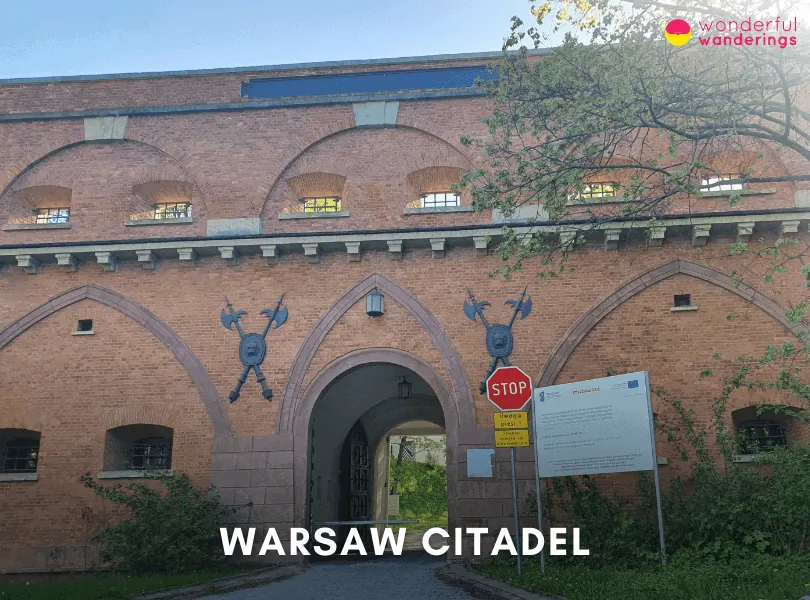
The Warsaw Citadel sits close to Warsaw's city center on the west bank of the Vistula River. It can be reached via buses #102, #105, #111, #117, #127, #175, #507 and #517, which stop right by the Citadel. Visitors can take the S2 or S3 train to Warsaw Śródmieście station, then transfer to bus #111, #127 or #517 directly to the Citadel stop. Entry to the Citadel grounds is free. The Warsaw Citadel is open year-round, but some museums are closed on Mondays or Tuesdays.
13. Neon Museum in Warsaw
The Neon Museum (Polish. Muzeum Neonów) is located in the Praga district of Warsaw, Poland, at 25 Mińska Street, 03-808 Warsaw. The museum is inside the Soho Factory, a revitalized former factory complex that now contains galleries, shops and restaurants. The Neon Museum has a unique history dating back to 2005 when British graphic designer David Hill and Polish photographer Ilona Karwińska began a project to document Warsaw's fading Cold War-era neon signs. Their “Polish Neon” exhibition showcased these forgotten signs and sparked renewed public interest. The couple's collection outgrew their storage spaces as more neon signs were donated. In 2012, they established the Neon Museum to provide a permanent home for these artifacts of Warsaw's history.
The Neon Museum features a collection of over 200 neon signs, tubes and letterforms from Poland between the 1960s and early 1990s. The signs were produced during the “neonization” of Polish cities, a state campaign to install colorful, avant-garde neon decorations designed by famous artists. The museum has iconic signs like the swirling flower shop insignia, a neon centaur from a cinema, a mermaid symbolizing a library and many unique lettering styles. Each sign has been preserved and restored, with the stories behind their original locations. The Neon Museum is one of just a few museums of its kind worldwide dedicated to preserving this Cold War art form. Visitors can observe the striking colors, shapes and letterforms that made these neon creations iconic during Warsaw's “neon renaissance”. The museum also houses a vast archive of related photographs, documents and blueprints. The Neon Museum appeals to visitors of all ages and backgrounds. The retro neon designs, illuminating stories and hands-on displays engage kids and adults alike. Photographers flock to capture the dazzling colors. Historians and city culture enthusiasts appreciate learning about Warsaw's neon history. Design and architecture buffs admire the mid-century styles and avant-garde lettering. The museum often hosts events like concerts or movie nights showcasing neon art, with something for everyone.
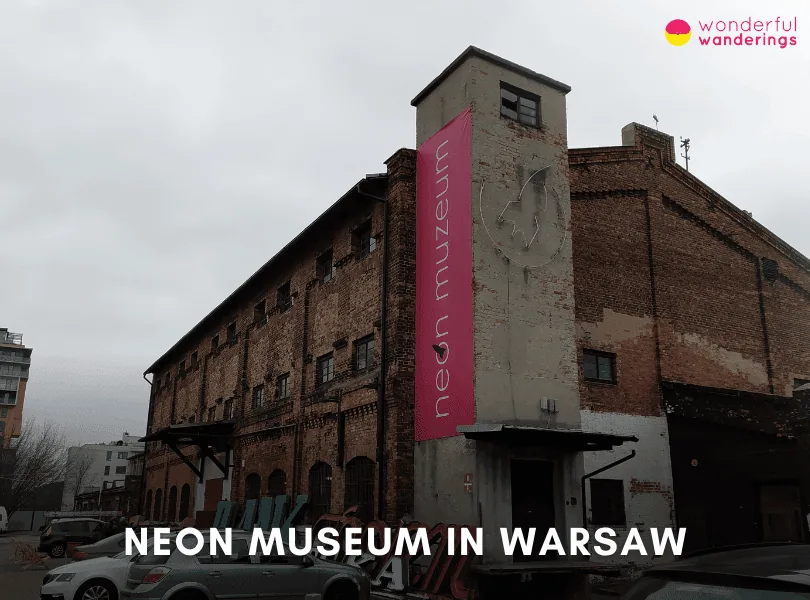
The Neon Museum has convenient public transport connections despite its industrial location. Visitors can take the S2 or S3 train to Warszawa Wschodnia station (12 mins), walk for 15 minutes or take trams #4, #15, #18 or #35 to the Mińska stop right by the museum. The museum is also accessible by buses #154, #160, #190 and #517. Entry tickets to the Neon Museum cost 18 PLN ($4, 4€, 3£). The museum is open from 12 pm to 6 pm, Monday to Saturday and Sundays from 11 am to 5 pm. Guided tours have additional fees.
14. Chopin Museum
The Fryderyk Chopin Museum (Polish. Muzeum Fryderyka Chopina) is located at 1 Okólnik Street in Warsaw, Poland. It is in the historic Ostrogski Palace in Warsaw's Śródmieście (City Center) district, near the Vistula River escarpment. The museum has a history dating back to the 1930s when the Fryderyk Chopin Institute began collecting Chopin memorabilia. The museum officially opened in 1954. It houses the world's largest collection of artifacts related to the renowned Polish composer and pianist Frédéric Chopin (1810-1849). The museum contains over 5,000 exhibits spanning Chopin's life from birth to death. The Chopin Museum uses innovative multimedia technology to bring Chopin's world to life.
Visitors can explore rooms dedicated to different periods in Chopin's life, from his youth in Poland to later years in Parisian exile. Visitors can view original manuscripts, listen to his works and learn about his turbulent romance with French writer George Sand. The museum traces Chopin's journey from a child prodigy playing organs in Warsaw churches to a fragile virtuoso performing in European concert halls. Through the innovative multimedia exhibits, screens and audio stations, visitors can fully immerse themselves in Frédéric Chopin's world. The multimedia activities at the Chopin Museum cater to all visitors, music fans, history buffs, families, tourists, etc. The variety of exhibits, listening stations and interactive screens provide engaging content for children and adults alike. The museum hosts piano recitals, concerts, lectures and special events like outdoor summer Chopin concerts. Guided tours are available for groups.
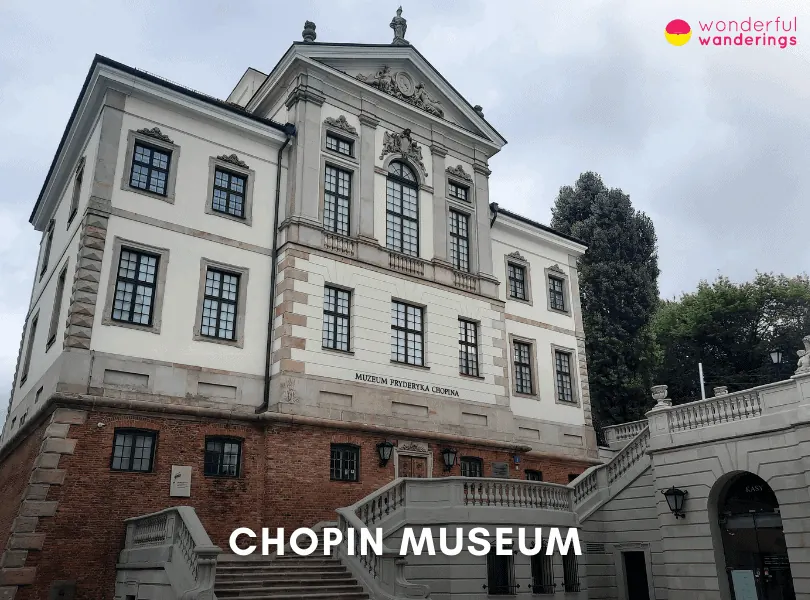
The museum enjoys a convenient central location in downtown Warsaw. Visitors can take a 25-minute train to Warsaw Central Station and then transfer to bus #180, #195, or #518. The Chopin Museum is a must-see attraction using modern technology to immerse visitors in his genius. Regular admission tickets cost 25 PLN (6€, $6 £4). Entry is free on Wednesdays. Discounted tickets are available for students, seniors, etc. The museum is open Tuesday-Sunday, 10 am to 8 pm. It provides an unforgettable interactive showcase of the life and music of Poland's most celebrated classical composer, Fryderyk Chopin.
15. Praga District
The Praga District is located in Warsaw, Poland, on the east bank of the Vistula River. Its boundaries roughly align with two administrative districts. Praga Północ (Praga North) and Praga Południe (Praga South). The area spans neighborhoods like Pelcowizna, Szmulizna and Grochów. Praga has a long history dating back to the 1400s as a separate settlement across the river from Old Warsaw. It derived its name from the Polish word “prażyć” meaning “to burn or roast”, referring to the burning of trees to clear space for the village. Praga was granted its city charter in 1648 but remained separate from Warsaw, only connected by ferries and ice crossings. Wars and fires repeatedly damaged it over the centuries before being officially incorporated into Warsaw in 1791. Praga retains more original pre-war architecture than most Warsaw districts.
Praga's “authentic” atmosphere contrasts with the touristy Old Town – the pedestrian streets feel lived-in versus a museum. Another draw is Praga's dynamic arts and entertainment scene, from neon-lit bars to repurposed factories hosting galleries and shows. Visitors can explore historic churches like the Baroque Our Lady of Loreto and neo-Gothic St. Florian Cathedral, wander atmospheric backstreets lined with pastel houses, shop at the vintage Różycki Bazaar and tour museums like the Warsaw Praga Museum for insights into local life. The Soho Factory complex hosts events in its industrial halls-turned-arts venues. Nightlife hotspots include the famous “11 Listopada 22” courtyard with cool clubs. Parks like Skaryszewski offer leafy escapes while the zoo entertains families. The activities in Praga cater to varied visitors, from history buffs to party people. Families appreciate the zoo, park spaces and laidback local vibe. Nightlife lovers flock to the offbeat bars and clubs. Nostalgic types enjoy retro shopping as they glimpse a vanishing way of life. Photography fans find endless inspiration in the gritty streetscapes and murals.
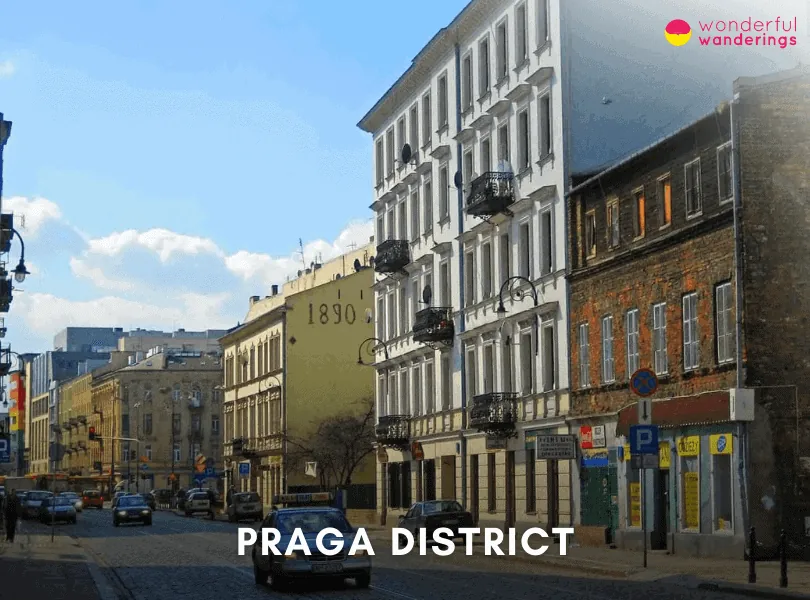
Reaching Praga is easy using Warsaw's excellent public transit. The S2 or S3 train reaches Warsaw Śródmieście station in the center. From there, metro line M2 runs directly to Dworzec Wileński station in the heart of Praga. Trams #4, #15, #18, #35 also cross the river. Buses #160 and #190 run frequently from Old Town. Praga offers visitors an eye-opening walk off Warsaw's beaten path. Entry to Praga's streets, parks and churches is free. Paid admission applies at specific attractions.
16. Powązki Cemetery
Powązki Cemetery (Polish. Cmentarz Powązkowski) is in the Wola district, Powązkowska 14, 01-797 Warszawa, Poland. Powązki Cemetery has a long history dating to its establishment on November 4, 1790, on land donated by Polish nobleman Melchior Szymanowski. It was consecrated on May 20, 1792. During World War II, the cemetery suffered heavy damage. Remarkably, zoo directors Jan and Antonina Żabiński saved hundreds of Jews by hiding them within the zoo grounds located nearby. After the war, the cemetery was rebuilt and restored. Powązki Cemetery covers 43 hectares (110 acres) and is the burial place of over 1 million people. Powązki Cemetery is one of Warsaw's most famous and historically significant cemeteries. Many famous Poles are buried here, with some interred along the “Avenue of the Distinguished” – Aleja Zasłużonych, created in 1925 to honor Poland's eminent cultural, scientific and military figures.
Visitors can explore the grounds, view the many ornate tombstones and statuary, visit graves of famous Poles buried here, like composers Frederic Chopin and Witold Lutosławski, pay respects to loved ones and take in the cemetery’s atmosphere of serenity. The Avenue of the Distinguished section makes for an especially memorable walk. The cemetery appeals to varied visitors, including history fans, those with family buried here, photography enthusiasts or anyone wishing to take a quiet walk surrounded by nature. Its elaborate tombstones and celebrity burials make it a popular tourist attraction. The scenic grounds are also suitable for respectful jogging or dog walking.
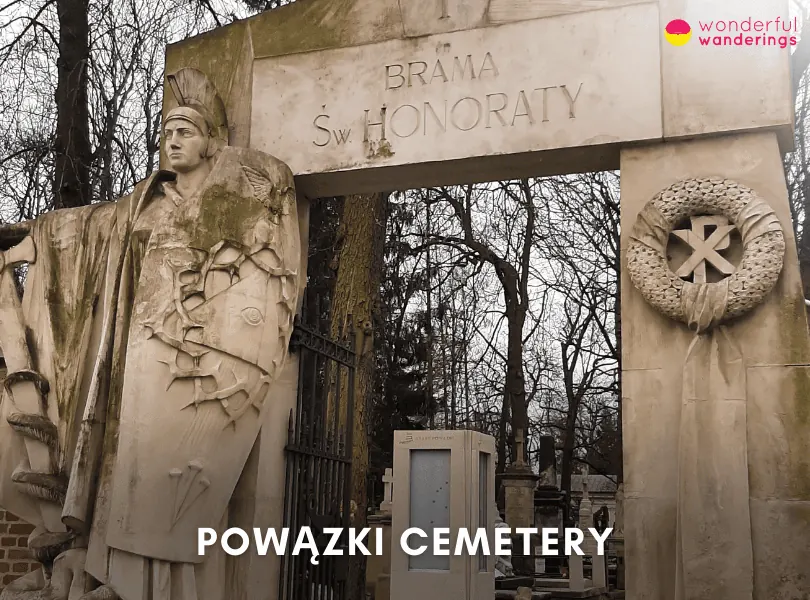
Powązki Cemetery is located in western Warsaw and is easily accessible by public transport. Visitors can take bus #175, which stops at the cemetery entrance. The nearby metro stop is Pole Mokotowskie. Buses and trams connecting the city center to the Mlociny metro station also pass by the cemetery. Entry to Powązki Cemetery is free and open to visitors daily. The historic Powązki Cemetery is a must-see for visitors wanting to pay their respects while taking in elaborate Polish tombstone architecture and art.
17. University of Warsaw Library Roof Garden
The University of Warsaw Library Roof Garden is in Warsaw, Poland, at Dobra 56/66, 00-312 Warsaw. The garden sits atop the library building, part of the historic main campus of the University of Warsaw located along Krakowskie Przedmieście Street in central Warsaw.
The roof garden has an interesting history, opening recently on June 12, 2002. It was designed by acclaimed Polish landscape architect Irena Bajerska to utilize the library's expansive roof space. At over 1 hectare (10,000 square meters), it ranks among the largest roof gardens in Europe. The garden features two main sections – a lower garden and an upper garden connected by a cascading fountain and several smaller thematic gardens. Its creation also included installing proper waterproofing, drainage, irrigation and other infrastructure to support a garden.
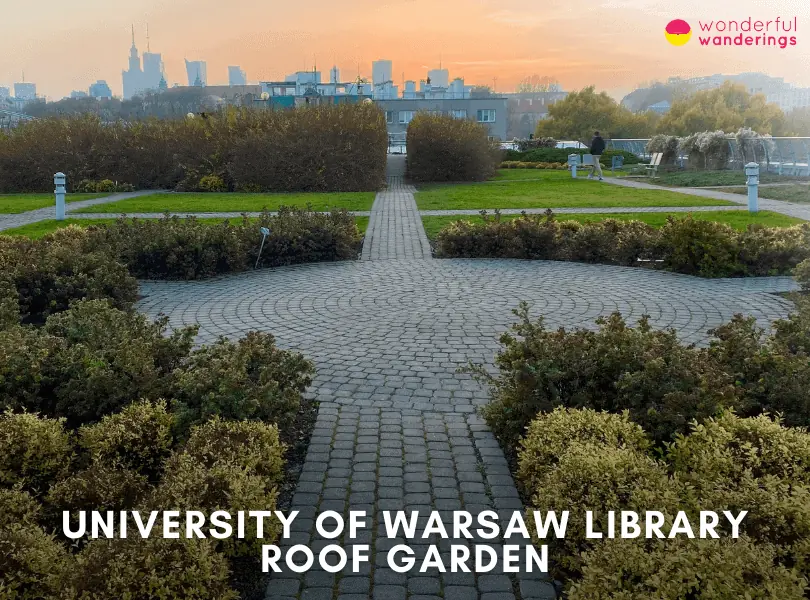
The University of Warsaw Library Roof Garden has extensive greenery, scenic vistas and imaginative landscaping above the streets. Visitors can ascend from the lower garden to discover secluded garden spaces divided into color-themed sections like the Silver Garden or Crimson Garden. The garden includes nearly 100 tree varieties and over 4,000 shrubs like spirea, barberry and lavender that bloom in waves of color. Other garden features include granite sculptures, streams, pergolas, observation decks and even a duck pond. From the garden vantage points, one can take in panoramic city views of Warsaw's skyline and the Vistula River. The garden has many benches to sit, read or relax amidst the urban respite. The garden attracts various visitors, from the University of Warsaw students seeking study breaks to tourists and families exploring its playful landscape. The garden also hosts university events, summer gardening workshops for kids and outdoor theater performances.
The University of Warsaw Library Roof Garden enjoys a very central and convenient location from the Metro Centrum Nauki Kopernik station. It sits close to popular attractions like the Copernicus Science Centre, the Warsaw University campus and the Vistula Riverfront. Visitors can take the S2 or S3 train to Warsaw Śródmieście station, then either walk 15 minutes through downtown or take any eastbound trams along Marszałkowska Street to the garden's Dobra Street entrance. The best part is that no admission tickets are required to enter the University of Warsaw Library Roof Garden. Visitors can explore the gardens year-round. The upper garden is only open from April through October.
18. Warsaw Mermaid Statue
The Warsaw Mermaid Statue (Polish. Pomnik Syrenki Warszawskiej) is located in the very heart of Warsaw's Old Town, in front of the Old Town Market Place at Plac Zamkowy 4, 00-277 Warsaw, Poland. The mermaid statue has a history intertwined with Warsaw's very origins. A mythical female creature first appeared on the city's coat of arms in the 14th century, initially with a bird's torso and dragon tail. Over the next centuries, her form gradually transformed into the mermaid we recognize today. Legends arose about how the mermaid settled in Warsaw, fell in love with the local fishermen and pledged to defend the city. Konstanty Hegel designed the most famous statue depicting Warsaw's mermaid.
The Warsaw Mermaid statue has been a significant city symbol for over six centuries. The mermaid statue ties together Warsaw's coat of arms, the legends of the city's founding and the iconic Old Town where she resides. Her prominent placement in the Market Square makes her the most visited and photographed mermaid sculpture in Poland's capital. She can be seen gracing everything from official city documents to souvenir trinkets. The statue portrays the mermaid as a beautiful, busty woman and warrior, ready to defend Warsaw with her raised sword and shield. Visitors can admire the sculpture up close, pose for photos of the distinctive landmark and appreciate why she was chosen as the protector of Warsaw. The Mermaid Statue appeals to all visitors, families, couples, historians and first-time Warsaw tourists. Kids especially enjoy spotting the mermaid and reading about her legends. Historians appreciate the site's significance, which stretches back seven centuries. Photographers flock to capture images of the distinctive sculpture with old townhouses as a backdrop.
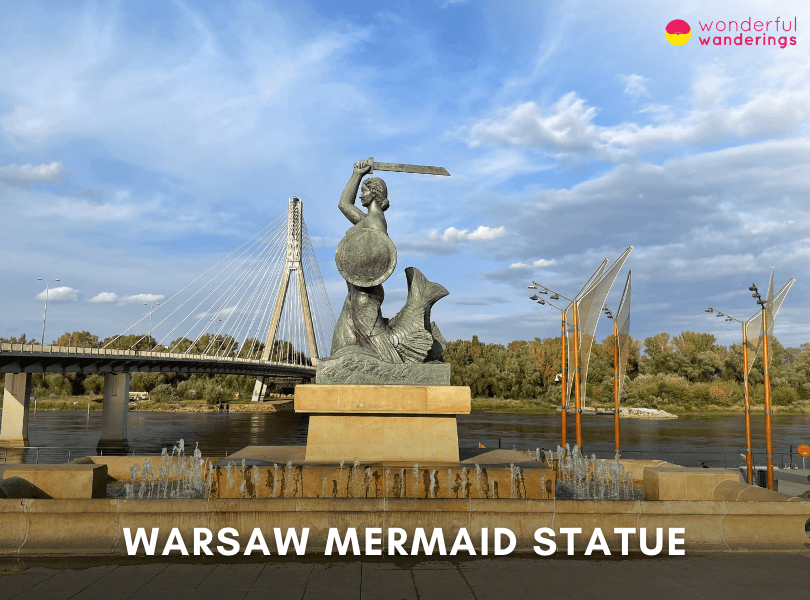
The Mermaid Statue is within walking distance from hotels and attractions in the Śródmieście district. Visitors can take the S2 or S3 train to Warsaw Śródmieście station (8-minute walk) or metro line M2 to Ratusz Arsenał station (4 minutes). The best part is no admission tickets are required to see the Mermaid statue. Visitors can freely view and photograph the sculpture year-round as they explore Warsaw's atmospheric Old Town center.
19. Pub Crawl Warsaw
The Pub Crawl Warsaw is located in the city center of Warsaw, Poland. The full address of the meeting point is Club Makulatura, in the backyard of Chmielna 5 Street, 00-021 Warsaw. The Pub Crawl Warsaw has over ten years of history, having started organizing party tours in Warsaw in 2011. It was created by local guides seeking to showcase the best of Warsaw's nightlife to visitors in a fun and affordable way. Over 15,000 international crawlers have since joined their pub crawls. The local guides are carefully selected for their energy, friendliness and nightlife expertise to deliver tourists an epic party experience discovering local bars and clubs.
Visitors can enjoy an hour-long open bar of unlimited beer, wine and mixed drinks, with the chance to mingle and play drinking games. They will then tour three more standout local bars, receiving a free shot at each venue. Guides encourage crazy challenges to get outside comfort zones before ending at an exclusive club with complimentary VIP access. Nightlife hotspots showcase Warsaw's best venues for drinking and dancing. The social atmosphere facilitates befriending fellow crawlers from different countries. The pub crawl activities cater to various nightlife lovers, including tourists, study-abroad students, backpackers, young professionals and locals looking to discover new hotspots. The party vibe appeals especially to 20-35 year olds. Solo travelers can easily meet new people. Budget-conscious drinkers appreciate the included drinks and specials. Extroverts are drawn to the sociable challenges. The crawling community bonds over their zest for nightlife regardless of background.
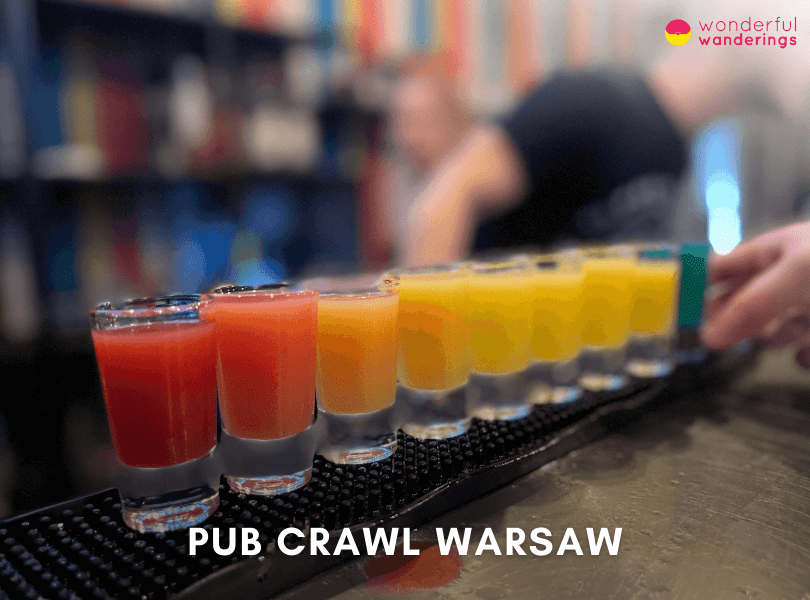
The Pub Crawl Warsaw meeting point at Club Makulatura enjoys a convenient central location in downtown Warsaw near popular attractions. It is within walking distance from hotels and sites in the Śródmieście district. Visitors can take the S2 or S3 train to Warsaw Śródmieście station (8 minutes walk) or metro line M2 to Centrum station (10 minutes). It has introduced over 15,000 visitors to the city's legendary nightlife scene. The Pub Crawl Warsaw offers the chance to party like a local VIP on a journey into Warsaw's nightlife.
What are the best museums to visit in Warsaw?
Listed below are the best museums to visit in Warsaw.
- Museum of Warsaw. The Museum of Warsaw immerses visitors in the city's extensive history through 6 floors of highly engaging and interactive audio-guided exhibitions depicting Warsaw from its founding days to the present, including panoramic vistas of Old Town Square from the top-floor viewpoint.
- The POLIN Museum of the History of Polish Jews. This museum is spread over eight state-of-the-art galleries. The POLIN Museum's award-winning permanent exhibition utilizes multimedia technology to vividly trace 1000 years of Jewish life in Poland, from reconstructed synagogues and a detailed Warsaw Ghetto model recreating poignant moments in time, ultimately winning the prestigious European Museum of the Year award in 2016 for its innovative approach.
- Warsaw Rising Museum. This museum utilizes videos, photographs, replica resistance sites, personal accounts and artifacts. The Warsaw Rising Museum depicts the tumultuous 1944 uprising against Nazi occupation over several emotionally impactful floors dedicated to the various facets of this pivotal historical event.
- The National Museum. The National Museum houses Poland's most extensive art collections gathered over centuries, spanning ancient civilizations and medieval religious artifacts through multiple galleries dedicated to the country's most influential 19th and 20th-century artistic masters across painting, sculpture and more.
- Copernicus Science Centre. The Copernicus Science Centre contains over 400 interactive, hands-on science exhibits and activities, allowing visitors to actively explore principles of physics, chemistry and more, as well as panoramic Vistula River views from its rooftop gardens and journeys through the cosmos in its high-tech planetarium. This museum is also great for families.
- The Wilanów Palace Museum. The Wilanów Palace Museum is housed in a lavish former royal residence with opulent baroque architecture and ornate interiors, containing interesting collections of 18th and 19th-century paintings alongside Chinese artifacts that provide insights into the tastes of past Polish aristocracy and royalty. The sprawling palace grounds feature beautifully landscaped gardens in the French style with scenic ponds and pathways that allow visitors to experience the luxurious lifestyles of Polish nobles.
- Royal Castle in Warsaw. Royal Castle in Warsaw takes visitors through the storied history of this important seat of Polish royalty over the centuries via engaging tours of the ornate throne room, royal apartments and grand halls that have been carefully recreated based on paintings and historical accounts to replicate their original splendor before the castle's destruction in World War II. Guides bring the castle's dramatic history to life with vivid tales of royal ceremonies, political intrigue and wars played out within its walls through extensive multimedia and interactive exhibits.
What are the best things to do in Warsaw with kids?
Listed below are the best things to do in Warsaw with kids.
- The Copernicus Science Centre. The Copernicus Science Centre offers over 400 interactive exhibits spread across multiple floors that allow kids ages five and up to explore principles of physics, chemistry and more through supervised hands-on experiments, 3D movies in the on-site planetarium and rooftop gardens with nice views of the Vistula River and Warsaw skyline.
- Warsaw Zoo. Warsaw Zoo is the largest and oldest zoo in Poland. It was founded in 1928 and is home to over 4,700 animals across 500 species that kids of all ages can observe up close, including tigers, polar bears and giraffes. It also features playgrounds, an on-site amusement park and a direct opportunity to feed certain animals.
- Old Town Market Square. The historic Old Town Market Square provides a family-friendly atmosphere for toddlers and elementary school-aged children to chase pigeons, take photos by the iconic mermaid statue, wander through cafes, shops and restaurants and enjoy free entertainment from buskers and musicians performing in the square.
- Royal Baths Park. Royal Baths Park features vast gardens, lakes and playgrounds where toddlers and young children can feed ducks, enjoy outdoor concerts and shows on the dedicated Chopin stage and spot peacocks roaming the grounds of this large public green space free to enter central Warsaw.
- Wilanów Palace. Wilanów Palace is a lush Victorian-style Palm House containing over 200 exotic plant species and fish ponds with a tropical ambiance that allows kids ages five and up to observe rare birds and fish during a short and relaxing stroll, accessible by strollers and free with palace admission.
What are the best activities for a business traveler in Warsaw?
Listed below are the best activities for a business traveler in Warsaw.
- POLIN Museum of the History of Polish Jews. The POLIN Museum is at 6 Anielewicza Street in central Warsaw near the site of the former Warsaw Ghetto. This award-winning modern museum traces 1000 years of Jewish history in Poland through multimedia and interactive exhibits, including a reconstructed painted synagogue and a model of the Warsaw Ghetto. Business travelers can take a break from work to learn about Warsaw's Jewish culture and the city's rebirth after World War II at this museum, which caters to adults interested in history, culture and architecture.
- Lazienki Park. Lazienki Park is a large green space at Agrykola 1 in central Warsaw, featuring gardens, lakes, peacocks and neoclassical landmarks. Nice spots for business travelers include the Palace on the Water, which can provide a relaxing walk or jog, fresh air and glimpses of historic royal residences perfect for individual travelers or small groups. Lazienki Park is free, but fees are charged for specific attractions.
- Warsaw Spire Building. The Warsaw Spire Building is a modern glass office building located at Plac Europejski 1 in Warsaw's business district. It is distinguished as the tallest building in Poland with unique architecture. Business travelers can visit the free panoramic viewing deck on the 49th floor of the Warsaw Spire for nice views of the city and photos appealing to adult travelers interested in architecture and city views from unique vantage points.
- Craft Beer Pub Spiż. Spiż is a popular pub located at Bracka 20 in Warsaw's city center, serving Polish and international craft beers with a relaxed vibe conducive to chatting over drinks. This pub can be a nice spot for business travelers to casually network or discuss work matters over a pint. It is best suited for adult travelers after work hours or evenings.
Where is Warsaw?
Warsaw is the capital and largest city of Poland. It is located in east-central Poland, 300 kilometers (186 miles) from the Baltic Sea coast and 260 kilometers (161 miles) from the Carpathian Mountains. Warsaw lies on the Vistula River, roughly halfway between Berlin, Germany and Moscow, Russia. It has historically been at the crossroads between Western and Eastern Europe. Warsaw spans both banks of the Vistula, although the city center and oldest neighborhoods are mostly on the western side. It covers 517 square kilometers (199 square miles) and also serves as the capital of the Masovian Voivodeship or province. Although some hills and escarpments exist, Warsaw lies on a plain with little topographic relief. Its average elevation is about 100 meters above sea level.
What is the history of Warsaw?
Warsaw has a long and turbulent history spanning over 1400 years. It originated as a small fishing village in the 13th century but grew to prominence when it became the capital of the Duchy of Masovia in 1413. Warsaw then developed into the de facto capital of the Polish-Lithuanian Commonwealth and saw great prosperity and growth in the 1600s under the patronage of its kings. Warsaw became a center of culture and the arts. Warsaw had also endured many hardships, including numerous plagues, foreign invasions, devastating fires and violent crackdowns on independence movements in the 18th and 19th centuries when it was partitioned and occupied by Prussia and Russia. Over 85% of Warsaw was razed to the ground by the Nazis after the Warsaw Uprising in 1944 and Varsovians rebuilt the city brick by brick after World War II. Since the fall of communism, Warsaw has experienced an economic rebirth and become a thriving center of business, finance and high technology in Central Europe while preserving links to its long, culturally rich history.
What language is spoken in Warsaw?
The official and predominant language spoken in Warsaw is Polish. As a major port city and center of trade and immigration over centuries, the city has also had historical minorities of Germans, Dutch, Scots, French, Swedes and Kashubians influencing the local dialect of Polish. After WWII, most of the German minority were expelled. Polish is the common language used by the government, businesses, education and daily life. Due to tourism, history and commercial ties, many locals also speak English, German and Russian as second languages.
What time zone is Warsaw in?
Warsaw is in the Central European Time zone, UTC+1. It observes Central European Summer Time (UTC+2) when daylight savings time is in effect. Poland and the rest of the European Union shift clocks forward 1 hour to CEST on the last Sunday of March and revert to 1 hour on the last Sunday of October. Warsaw uses CET in the winter months and CEST in the summer months. The time in Warsaw is the same as most of Poland, Germany, France and other Central European countries.
How many people live in Warsaw?
The population of Warsaw is 1,747,155 as of 2023. There are 846,350 men and 900,804 women residing in the city. Looking at Warsaw by age groups, there are 257,990 people aged 0-14. This includes 132,329 boys and 125,660 girls in this youngest age bracket. For the 15-29 age range, there are 267,336 total people, with 135,995 men and 131,339 women. In the middle age groups, 396,139 people aged 30-44 and 348,999 aged 45-59. Warsaw has 134,789 senior citizens between 75 and 89 years old and 16,811 inhabitants over 90 years old.
What are the most interesting facts about Warsaw?
Listed below are the most interesting facts about Warsaw, Poland.
- Currency. The official currency of Poland and Warsaw is the Polish złoty (PLN). Banknotes come in 10, 20, 50, 100 and 200 złoty denominations. Coins come in 1, 2, 5, 10, 20 and 50 groszy.
- Time Zone. Warsaw is in the Central European Time Zone, UTC+1. It observes daylight saving time, shifting clocks forward 1 hour to UTC+2 in the summer. Warsaw is 1 hour ahead of GMT/UTC in Winter. It is 2 hours ahead of GMT/UTC in summer.
- Language. The official and predominant language spoken in Warsaw is Polish. Facts about Poland are that many locals also speak English, German, Russian, or Kashubian (regional dialect). English is widely understood in restaurants/cafes.
- Power Plugs. Poland uses the Type E power plug, which has two round prongs. The standard voltage is 230V and the standard frequency is 50Hz. Visitors from countries like the USA will need an adapter and possibly a voltage converter to charge devices.
How many days are needed to see Warsaw?
It is recommended to stay for 2 to 3 days to see what Warsaw offers. Warsaw offers several fascinating sights between its historical sites and contemporary attractions. Its museums honor both national heritage and the difficult 20th-century history. The city's food, entertainment and nightlife are thriving today. Blending past and present, Warsaw's dual vibrancy makes it an engaging destination for tourists as it continues to grow in prestige.
Is Warsaw worth visiting?
Yes, Warsaw is worth visiting. Warsaw is considered one of Europe's most underrated capital cities. Warsaw was destroyed in World War II and was dreary under communism for decades; the city has re-emerged since 1989 with colorful, restored architecture and a cosmopolitan vibe. The meticulously rebuilt Old Town offers a glimpse into Warsaw's past glory, with its Gothic churches, burgher houses and grand palaces reconstructed using historical paintings and plans. The Royal Route's aristocratic palaces, churches and mansions also provide insight into the city's history as the seat of royalty. Contemporary Warsaw also beckons with its modern towers, corporate headquarters, luxury shopping and trendy bars that signify its current status as an economic hotspot in Central Europe.
Is Warsaw expensive to visit?
No, Warsaw is considered affordable for travelers on a budget compared to most European capitals. Costs for accommodation, transportation, sightseeing, and dining out are cheaper than in cities like London, Paris, or Amsterdam. Budget hotel rooms can be found for 50€ ($35, £43) per night, public transit for under 1€ ($1, £0.86), and meal prices average 9€ ($10, £7) at modest restaurants. Museums, palaces, and some tours also have very reasonable entrance fees. Higher-end hotels, Michelin-star dining, and luxury shopping can still add cost, but Warsaw has plentiful budget-friendly options to experience the city without breaking the bank.
Is Warsaw safe to visit?
Yes, Warsaw is very safe to visit. Warsaw’s rate of violent crime is low, with incidents like homicide, rape or assault being rare compared to other European capitals. Petty crimes like pickpocketing or bag snatching can occur in crowded tourist areas, on public transit or at the central train station, but violent attacks are uncommon. Warsaw has a very walkable city center where most attractions like the Old Town, Royal Route, parks and museums are found. This area feels secure to explore on foot during the day or night. Public transportation like trams, buses and the metro system are efficient and affordable and have good coverage of the main tourist zones, allowing visitors to easily access sites across the central districts.
Is Warsaw easy to visit with kids?
Yes, Warsaw is easy to visit with kids. Warsaw can be a very family-friendly city to visit with children. Factors that make Warsaw accommodating for kids include its walkable Old Town with attractive sights, numerous parks and playgrounds, an interactive science museum, family-friendly restaurants and cafes and affordable attractions compared to other European capitals. Warsaw's Old Town has a small-scale ambiance with colorful architecture, cafes and ice cream shops that appeal to kids. Lazienki Park has playgrounds, paddle boats and free weekend Chopin concerts at its palace. The Copernicus Science Centre offers hundreds of interactive exhibits to spark young imaginations. The Warsaw Zoo and smaller zoos feature animals that fascinate children. Family-friendly Polish restaurants provide budget-friendly kids' menus while accommodating dietary needs.
What is Warsaw famous for?
Warsaw is most famous for being the epicenter of Jewish life and culture before World War II and for its residents' dramatic but doomed uprising against Nazi occupation during the war. Secondly, the Warsaw Ghetto and its resistance figure prominently in Holocaust history and lore. The Warsaw Uprising of 1944 also highlights Polish defiance despite the rebels' defeat against overwhelming odds. Thirdly, the city's phoenix-like reconstruction and rebirth following the war's devastation symbolizes Polish resilience. Contemporary Warsaw is renowned as Central Europe's business, technology and academic center. Lastly, it is well-known for its Old Town architecture, green spaces, cuisine, music and nightlife. Warsaw continues to be a cosmopolitan capital, attracting tourists and expatriates alike.
Who are the most important people born in Warsaw?
Listed below are the most important people born in Warsaw.
- Maria Skłodowska-Curie (1867-1934). She was a famous scientist who conducted pioneering research on radioactivity and discovered the elements polonium and radium; she was the first woman to win a Nobel Prize and the only woman to win two Nobel Prizes, one in physics and one in chemistry. Born in Warsaw but lived in Paris as an adult.
- Frédéric Chopin (1810-1849). World-renowned composer and virtuoso pianist considered one of the great masters of Romantic music, best known for works like mazurkas, polonaises, waltzes and etudes; born in a village near Warsaw then moved to the city as an infant, he later lived and worked in Paris for most of his adult life though his heart is buried in Warsaw.
- Pope John Paul II (1920-2005). Born Karol Józef Wojtyła near Warsaw, he was elected Pope in 1978 as the first non-Italian Pope in over 400 years; he played a key role in ending communist rule in his native Poland and across Europe and visited Poland 9 times over his long papacy.
- Irena Sendler (1910-2008). Polish humanitarian who saved over 2,500 Jewish children from the Warsaw Ghetto during WWII, risking her life to rescue Jews during the Holocaust; she was born and lived in Warsaw for nearly a century until her death at age 98, later honored as Righteous Among the Nations.
- Robert Lewandowski (born 1988). Captain of the Poland national football team and star striker for FC Barcelona, considered one of the best footballers playing today; has won many trophies and goalscoring records in the Bundesliga and Champions League, born and still living in Warsaw when not abroad for matches. Robert Lewandowski is considered one the top sportsmen in Poland .
What to eat in Warsaw?
Listed below are what you can eat in Warsaw.
- Sledzie po kaszubsku. Sledzie po kaszubsku features pickled herring, a specialty of the Kashubian region surrounding Warsaw, topped with hard-boiled eggs, potatoes, onions and oil for a light appetizer. The dish is a celebration of local seafood and cultural traditions. It is one of the best food to eat in Poland .
- Goldwasser. Warsaw's famous Goldwasser liqueur has been produced in the city using secret herbal formulas since 1598 and is still made today with flakes of 22-karat gold for visual brilliance. The Goldwasser distillery in Warsaw continues centuries-old traditions by offering tours and tastings of the signature sweet and spicy spirit.
- Fresh seafood. Warsaw's seaside location on the Baltic makes it a prime destination for fresh seafood like salmon and herring caught right off the coast. Restaurants across Warsaw take full advantage by serving simply prepared fish to highlight the fresh flavors or incorporating the bounty into rich seafood stews.
- Pierogi. Filled dumplings like meat, potato and cheese pierogi are extremely popular across Poland, but Warsaw has developed its own unique regional varieties using local ingredients. Warsaw pierogi may feature fillings of Baltic seafood like herring, salmon or cod blended with onions and herbs for a taste of the Pomeranian coast. The pierogi are still boiled and then crisped up through pan-frying or baking as is tradition.
- Warsaw gingerbread. Gingerbread baking with honey and spices has been a generations-old craft tradition in Warsaw, resulting in elaborately decorated gingerbread sold across the city.
- Bigos. Bigos is a beloved Polish hunter's stew and Warsaw's proximity to Kashubian forests and farmland provides easy access to ingredients like pork, mushrooms and sauerkraut. Restaurants across Warsaw simmer their bigos for hours, allowing the flavors of meat, cabbage and spices to mingle into the hearty, comforting dish the city is known for.
What are the best places to eat in Warsaw?
Listed below are the best places to eat in Warsaw.
- Restauracja Belvedere. Restauracja Belvedere is a luxurious European restaurant located in the exotic Warsaw Royal Bath Gardens that features a regally decorated interior perfect for celebrating special occasions; with cuisine praised by Warsaw's discerning clientele and even recommended by the prestigious Michelin guide, this restaurant offers an exquisite menu ranging from starters to mains to decadent desserts in a one-of-a-kind lush setting. Restauracja Belvedere is one of the best restaurants to eat in Warsaw.
- Hala Koszyki. The trendy renovated market hall Hala Koszyki houses multiple restaurants serving everything from dedicated vegan fare to juicy meat dishes. The restaurant features boutiques, cultural events, and tempting street food options. This bustling enclosed spot has something to satisfy all tastes, from the adventurous foodie to the comfort food seeker. It is especially great for large groups looking to sample a variety of cuisines in Warsaw.
- U Fukiera. U Fukiera is a Polish restaurant in Warsaw with an aristocratic old-world atmosphere that serves up updated versions of some of Poland's most cherished traditional dishes like flavorful soups, tender dumplings and hearty meats by atmospheric candlelight, enhancing the romantic ambiance of this special-occasion venue.
- Stary Dom. The restaurant Stary Dom features a rustic wooden decor and exposed beams stretching across its lofty ceiling, offering a cozy yet upscale environment known for elevated takes on classic Polish cuisine that combines heritage with innovation, resulting in a distinct dining experience that artfully melds history with culinary expertise.
- Różana. Różana is a sophisticated vintage-style restaurant exuding authenticity through its Polish delicacies consisting mainly of expertly prepared meats, potatoes and veggies and its small antique piano that entertains guests by playing live music adds old-world charm to the already quaint atmosphere.
What are the best areas to stay in Warsaw?
Listed below are the best areas to stay in Warsaw.
- Old Town (Stare Miasto). This historic neighborhood, with its cobblestone streets and medieval architecture reconstructed after WWII, is perhaps the most popular area for tourists. The Old Town Square, restaurants and shops put visitors close to many top attractions with its proximity to the Royal Castle. The ambiance and accessibility make Old Town a safe, convenient choice for solo travelers.
- City Center (Śródmieście). The bustling heart of Warsaw, along the Royal Route, houses luxury hotels, museums, theaters, dining and nightlife. Neighborhoods like Powiśle on the riverside also offer trendy bars and cafes. With so much to see and do, the City Center keeps tourists in the mix. Its public transit options also make it solo traveler-friendly.
- Mokotów. This upscale residential district has a modern yet relaxed vibe. Travelers can stroll through parks and bike paths, providing various accommodation options. Mokotów's restaurants, malls and nightlife give tourists something to enjoy while ensuring safety with foot traffic. The metro and buses also provide solo convenience.
- Praga. Paraga features historic churches, Soviet-era buildings and an underground arts scene. This neighborhood east of the river fascinates visitors as “real Warsaw”. Once edgy, Praga now balances grit with lively bars, galleries and markets. As an up-and-coming area, tourists mingle with welcoming locals during the day, but solo nightlife is less advised.
- Żoliborz. North Warsaw's greenery accompanies Old Town in this quiet neighborhood. Żoliborz delights visitors with its leafy squares, independent cafes, historic architecture and local vibe. It makes travelers feel part of Warsaw's life. It is accessible near Old Town, buses/trams and solo exploration is manageable.
What are the best accommodations to stay in Warsaw?
Listed below are the best accommodations to stay in Warsaw.
- Hotel Bristol. Hotel Bristol in Warsaw features elegant rooms steps adjacent to the Presidential Palace, which features Art Deco-style furnishings, fine art and marble bathrooms, while amenities extend to a rejuvenating spa, pristine indoor pool and several high-end restaurants and bars on the premise. Bristol is a refined retreat frequented by celebrities and sophisticated travelers seeking premium accommodations. It is one of the best hotels to stay in Warsaw.
- Westin Warsaw Hotel. Westin Warsaw Hotell is an ideal location in the heart of the business and shopping district, with elegant rooms featuring city views, marble bathrooms and a refined blend of classic and contemporary decor for a luxurious atmosphere. The hotel amenities include a rejuvenating spa, a pristine indoor pool, multiple restaurants with international cuisine and modern conference facilities.
- Polonia Palace. The historic Polonia Palace Hotel in Warsaw provides spacious, classically elegant rooms outfitted with marble bathrooms, as well as a generous breakfast buffet praised by guests, an onsite wellness center for relaxation and a stately restaurant serving Polish and European specialties in an upscale, old-world ambiance befitting its heritage.
- Safestay Hostel Warsaw. Safestay Hostel Warsaw is located right on Warsaw's historic Royal Route and is known for being impressively clean and tidy, as well as having a social yet relaxed vibe with its modern bar and lounge for meeting other travelers; it features a mix of both dorms and private rooms to meet different budgets and preferences.
- Novotel Centrum Warsaw. Novotel Centrum Warsaw’s convenient central location and modern rooms equipped with rainfall showers, the 4-star appeal to business and leisure guests seeking amenities like the 24/7 fitness center all-day international restaurant with seasonal menus. This lively hotel bar and family rooms comfortably accommodate children, all in a contemporary style.
How to get from Warsaw to Warsaw Chopin Airport WAW?
There are a few ways to get to Warsaw Chopin Airport from Warsaw. These are by train, bus, taxi, and rideshare services. Firstly, take the S2 or S3 train from Warsaw Central Station (Warszawa Centralna) to the Warsaw Chopin Airport train station. The journey takes 20 minutes, trains run every 30 minutes, and tickets cost 4.40 PLN (1€, $1, £0.86). Secondly, take the 175 bus to the airport from Warsaw city center near the Palace of Culture and Science. The bus takes 35 minutes, and tickets cost 4.40 PLN (1€, $1, £0.86). Thirdly, take a taxi from central Warsaw to the airport that costs 50 to 70 PLN (11€, $12, $9) to (16€, $17, £15); the journey takes 30 minutes, depending on traffic. Reputable taxi companies include Ele Taxi and Super Taxi. Ask for the fare estimate before starting the journey. Lastly, rideshare service apps like Uber, Bolt, and FreeNow also operate in Warsaw. The fare from the city center to the airport is usually 40-60 PLN (9€, $10, £7) to (13€, $14, £10).
Where to go shopping in Warsaw?
There are several great places to go shopping in Warsaw. These are Złote Tarasy, Arkadia, Westfield Mokotów, Galeria Młociny and Blue City. Firstly, Złote Tarasy is a large, modern mall next to Warsaw's Central Train Station that houses over 200 shops, restaurants and amenities. Popular international brands mix with local boutiques across four floors and the glass roof floods the open interior with natural light. Secondly, Arkadia caters to over 400 stores, restaurants and entertainment options, Arkadia is one of Poland's biggest malls. Anchor stores like IKEA and major fashion brands sit in this spacious complex alongside a cinema, food court and children’s play zones. Thirdly, Westfield Mokotów is known for its airy architecture. This upscale shopping center features high-end fashion alongside more mainstream shops. The glass roof and multiple open spaces give it an airy vibe. The 3rd floor houses many dining options, from fast food to high-end. Fourthly, Galeria Młociny is a large, modern mall at the end of the metro line containing popular international apparel brands like H&M and Reserved and electronics, books, sports gear and more. The beautiful architecture, spacious layout and amenities like restaurants and cinemas draw crowds. Lastly, Blue City was built on the site of a former brewery. Blue City uniquely mixes shopping with dining, entertainment, office space and apartments, all under one glass roof. Over 200 stores and services, including many dining options and a cinema, can be found inside.
What festivals or events are taking place in Warsaw?
Listed below are the festivals or events that are taking place in Warsaw.
- The Orange Warsaw Festival. The Orange Warsaw Festival is one of Poland's largest music festivals, featuring Polish and international artists from various genres like rock, pop, hip-hop and electronic. It takes place every June at Warsaw's National Stadium and Służewiec Racecourse over the course of 3 days. The festival attracts around 100,000 music fans each year.
- The Warsaw Film Festival. The Warsaw Film Festival is an annual international film festival held every October that showcases full-length features and short films by Polish and foreign directors. Hundreds of films are screened over the course of 9 days at several theaters and cultural institutions across Warsaw. It's considered one of Europe's leading film festivals, attended by over 90,000 people annually. It is also one of the top festivals in Poland and Warsaw .
- The Warsaw Christmas Market. The Warsaw Christmas Market transforms Castle Square in Warsaw's Old Town into a festive winter wonderland from late November through December. Visitors can browse the wooden stalls selling handmade holiday ornaments and decorations, sample Polish Christmas treats like gingerbread and mulled wine and enjoy free concerts and activities like ice skating. Over 1 million people visit Europe's largest Christmas market each year.
- Wianki. Wianki is a midsummer festival celebrating the summer solstice along Warsaw's Vistula River every June. Thousands of revelers gather to float flower wreaths on the river, symbolizing bidding farewell to spring and welcoming summer. The festival also features open-air concerts, fairs and parades. Upwards of 200,000 typically attend Wianki festivities annually.
- The Warsaw Uprising Remembrance Day. The Warsaw Uprising Remembrance Day on August 1 commemorates the Warsaw Uprising of 1944 against Nazi occupation during WWII. It is marked by wreath-laying ceremonies, Catholic masses, military parades and historical reenactments attended by Poland's top officials and remaining uprising veterans. Over 10,000 people observe the solemn occasion each year.
PIN FOR LATER
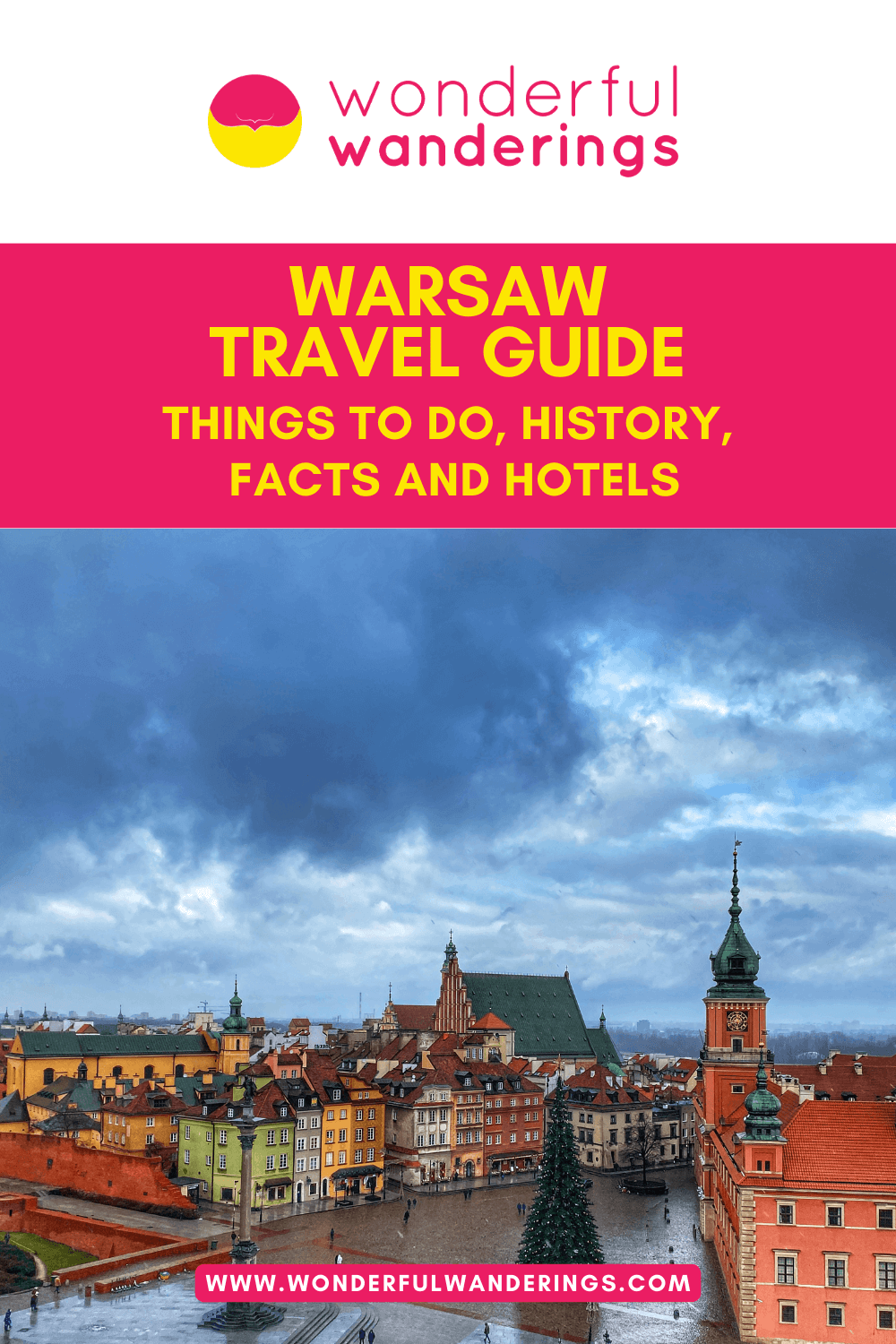
Find below our best travel guides about Poland.

24 Interesting Facts about Poland

18 Best Beaches to Visit in Poland

Renting a Car in Poland: 34 Important Tips (2024)

18 Best Castles to Visit in Poland

Prices in Poland: Is Poland Expensive?

25 Traditional Polish food and Where to Eat Them in Warsaw

36 Most Famous Polish people: Artists, Chefs and Scientists!

Dates of Holidays in Poland 2024 [Annually updated]

22 Top Festivals to Attend in Poland for 2024

Driving in Poland: Road Safety, Driving Etiquette and How to Rent a Car

Transportation Guide in Poland: Which One Is Best for You?

20 Wonderful Things to do in Gdansk: Museums, History and Travel Guide

17 Fabulous Things to do in Bydgoszcz: Museums, History and Travel Guide

19 Impressive Things to do in Krakow: Museums, History and Travel Guide

17 Best Things to do in Gdynia: Museums, History and Travel Guide

17 Best Destinations in Poland to visit all year round!

Auschwitz tour review: an Auschwitz tour from Krakow

Poland Vacation Guide – Everything to plan your trip

The editorial team at Wonderful Wanderings brings together travel experts with backgrounds in travel writing, web development and digital marketing. The team, through their collaborative effort, provides readers with relevant travel experiences and up-to-date digital content. The vast expertise within the team ensures an informative blend of travel stories and useful online travel guides and trip experiences, built on a foundation of both industry recognition and hands-on global adventures. Learn more about Wonderful Wanderings
Your email address will not be published. Required fields are marked *
Join 58,000+ other Wonderful Wanderers!
As an Amazon Associate I earn from qualifying purchases.

The 15 Best Things to do in Warsaw, Poland
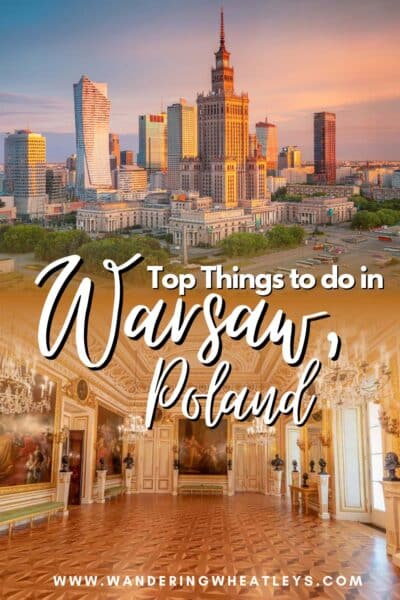
Take a stroll through historic sites in the Old Town or walk beneath the modern skyscrapers and brutalist buildings in central Warsaw. Then try to imagine the Polish capital as a tiny fishing village on the banks of the River Vistula. It’s impossible to see it so today, but until Warsaw’s big break came in 1596, it was little more than an insignificant mark on the map.
Things changed when King Sigismund III, who ruled over much of present-day Poland, Lithuania, Sweden , and Finland , transferred his seat of power from Krakow to Warsaw, transforming a trading outpost into a royal capital in an instant. The king began building the palaces, churches, and fortifications you’ll see today in Warsaw’s restored Old Town, and Warsaw quickly became a center for religion, culture, and the arts in eastern Europe.
Fast forward to 1944, and it’s equally difficult to imagine how Warsaw was almost erased from the map entirely. Prolonged years of German occupation, followed by the Warsaw Uprising toward the end of World War II, led to the systematic destruction of the city.
You can learn more about this harrowing era at the Warsaw Uprising Museum or POLIN: Museum of the History of Polish Jews. But from the ashes, Warsaw rose again, and the Polish capital was rebuilt through the communist decades that followed.
Today, Warsaw is one of Europe’s largest and most exciting destinations. Discover Polish history, explore the legacy of famous Poles like Copernicus and Chopin, and explore alternative districts like Praga, where beer and vodka flow freely until the early hours of the weekday mornings.
With so many things to see and do, you might not know where to begin. So we’ve compiled our list of the absolute best things to do in Warsaw for you. Stick to these fun and unique Warsaw bucket list recommendations, and there’s no doubt you’ll have an amazing time exploring the gorgeous Polish capital!
Disclaimer: This post may contain affiliate links. If you make a purchase or booking through one of our links we may earn a small commission (don’t worry, it’s at no extra cost to you).
15 Fun and Unique Things to do in Warsaw
1. start with a walking tour of warsaw’s old town.
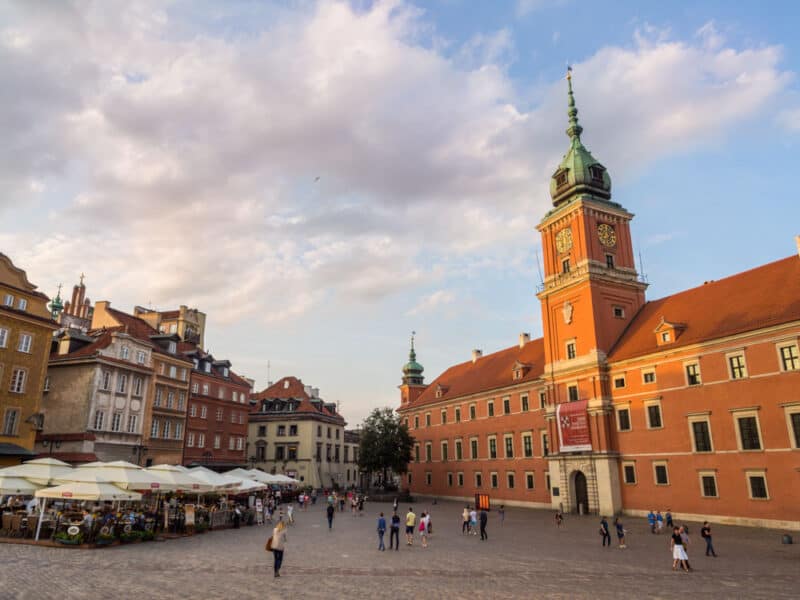
Warsaw’s Old Town is a testament to the city’s past and present. This is the oldest part of Warsaw, and the history has been recognized not only by the vast number of tourists you’ll see here but also by the area’s listing as a UNESCO World Heritage Site.
Many of the oldest parts of the city wall date back to the 13th century when Warsaw was just a little fishing and trading community. The Royal Palace was added later and became the home of King Sigismund III when he made Warsaw his capital in 1596. The best way to explore the cobblestone streets is on a walking tour, and you can meet your guide by Sigismund’s Column right in the middle of Castle Square.
The real heart of the Old Town is Market Place, where you’ll see the 15th-century town hall. It’s here where you’ll learn how Warsaw’s Old Town was completely razed during the Warsaw Uprising in 1944. Angered by the Polish resistance, the German occupiers set about destroying the cultural legacy of Warsaw, and they started with Market Place.
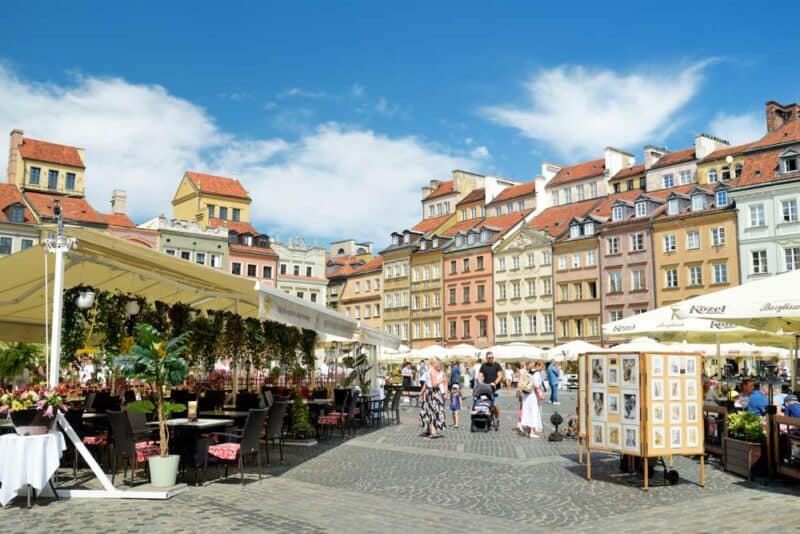
On your walking tour, though, you’ll also learn how the Old Town was painstakingly rebuilt from the rubble. Original plans were followed as bricks were salvaged from the destruction, and today, the Old Town is as much a signifier of the city’s resolute will to survive as it is a historical attraction.
There are multiple walking tour companies offering tours of the Old Town, with daily departures all throughout the year. We recommend joining a “Free Walking Tour” if you’re in any doubt since you only pay what you feel the experience was worth at the end of the tour.
Book an Old Town Walking Tour
2. Reach into Regal History at the Royal Castle
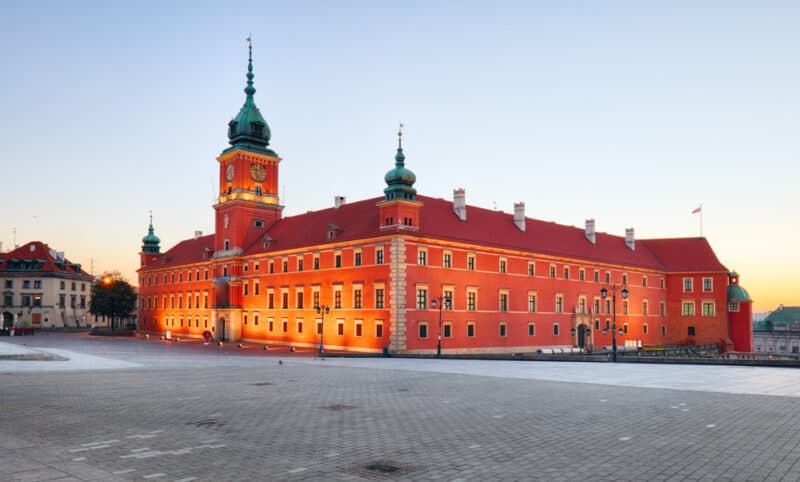
A visit to the Royal Castle is one of the best things to do in Warsaw. While you’ll see the castle’s fabulous exterior on your walking tour of the Old Town, come back later to see the inside.
The Royal Castle is one of Warsaw’s oldest sights, with parts of the towers and walls dating back to the 14th century. Take a tour of the castle or stroll around its ramparts, and you’ll learn that the stately rooms and grand regal chambers were built by none other than Sigismund III from 1596 onwards (who else?). The king needed a new royal castle worthy of his ambitions, and the Royal Castle in Warsaw became the seat of Poland’s monarchy for centuries to come.
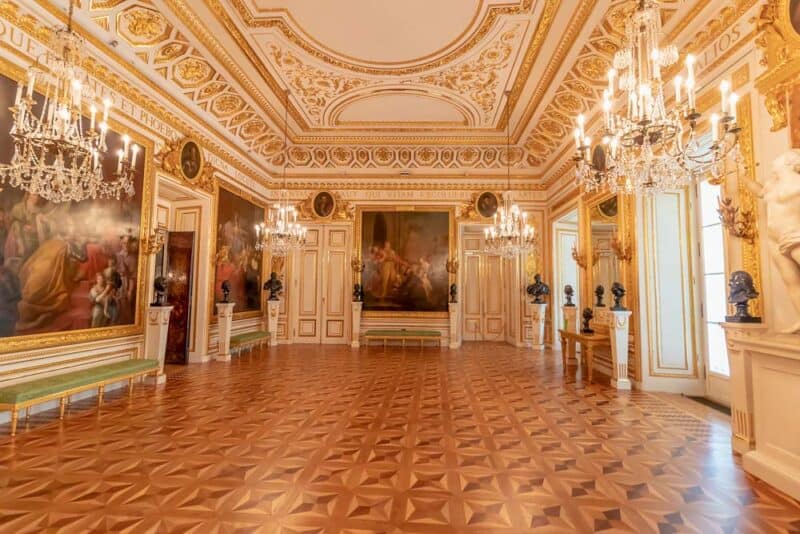
Successive rulers added their mark, with the distinctive Baroque elements being added in the 1700s. The German army blew the palace up in 1944, and everything was rebuilt brick by brick from the pile of rubble left behind. Today, you can explore the rebuilt royal apartments, stroll through the landscaped royal gardens, and visit the Lanckoroński Collection, a donated art collection that includes a Rembrandt.
Book a Royal Castle Guided Tour
3. Escape to the Palace on the Isle in Warsaw’s Łazienki Park
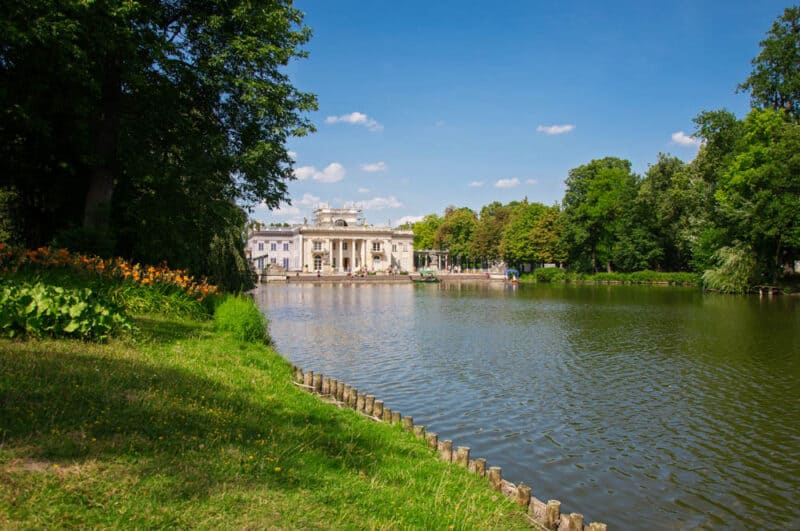
Although the Polish monarchy was abolished in 1795, Warsaw has preserved a surprisingly large number of royal relics. If you’re into your regal history, then make your way to Łazienki Park, where you can escape to the Palace on the Isle.
Łazienki Park is Warsaw’s largest public park, with 76 hectares of greenery, trees, and historic monuments and palaces for you to explore. The park is located right in the center of Warsaw, because, originally, it was set aside as a private park for the Polish monarchy.
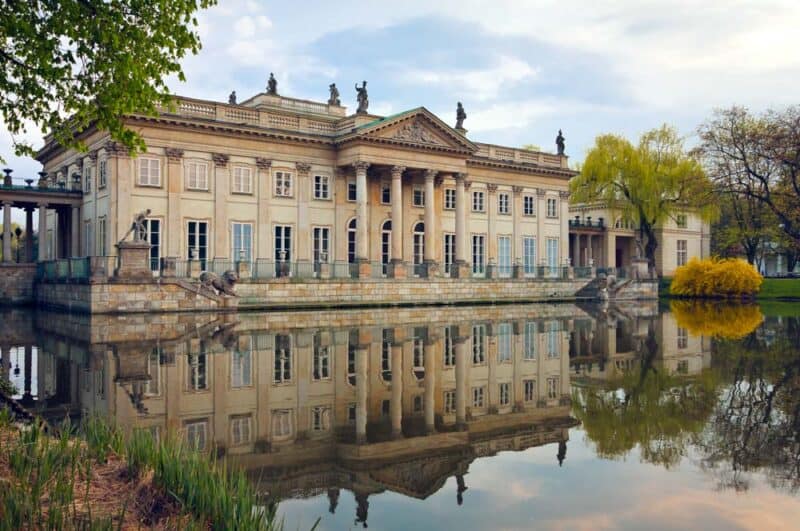
Also known as Royal Baths Park, Polish kings had elaborate bathhouses and palaces built here for their personal enjoyment. The largest bathhouse was extended into a regal palace, which you can visit today. The original marble bathhouse was constructed in the 17th century, and the baroque palace was built around this a century later.
Surprisingly, the Palace on the Isle survived World War II intact, although the interiors were looted and burned by the retreating Germans. Take a tour of the palace, enjoy magnificent views from its waterfront location, then visit sights like the Chopin Monument in the surrounding park.
Lazienki Park & Palace Tour and Cruise
4. Take the Elevator to the 30th Floor of the Palace of Culture and Science
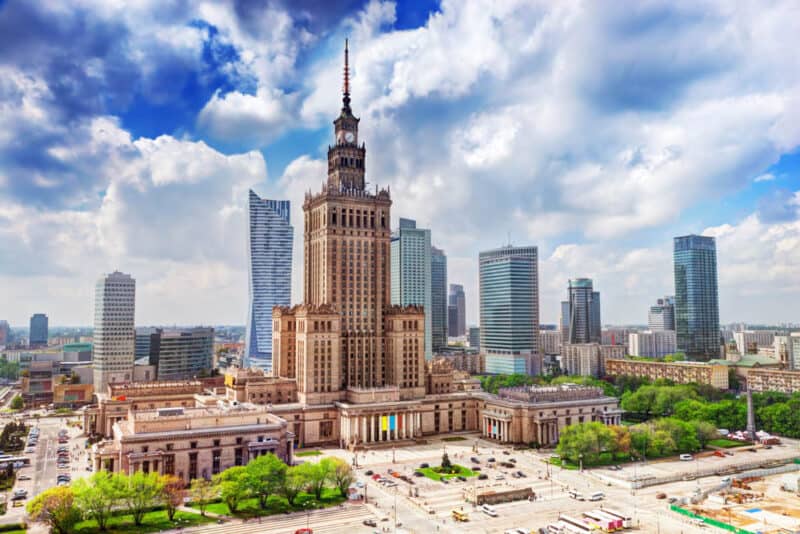
Visit Warsaw’s modern city center, and you can’t miss the brutalist skyscraper rising high above the city. This distinctive building, with its tall and rectangular shape, is the Palace of Culture and Science , and it was built in 1955 to emulate the style of socialist realism inspired by Stalin.
The Palace of Culture and Science stands 237 meters tall, and it’s currently the second-tallest building in Poland. It’s a stark reminder of the country’s communist era and is often described as an “unwanted gift” from the USSR. Regardless, the tower is here to stay, and visiting the 30th-floor observation deck for sweeping views is one of the best things to do in Warsaw.
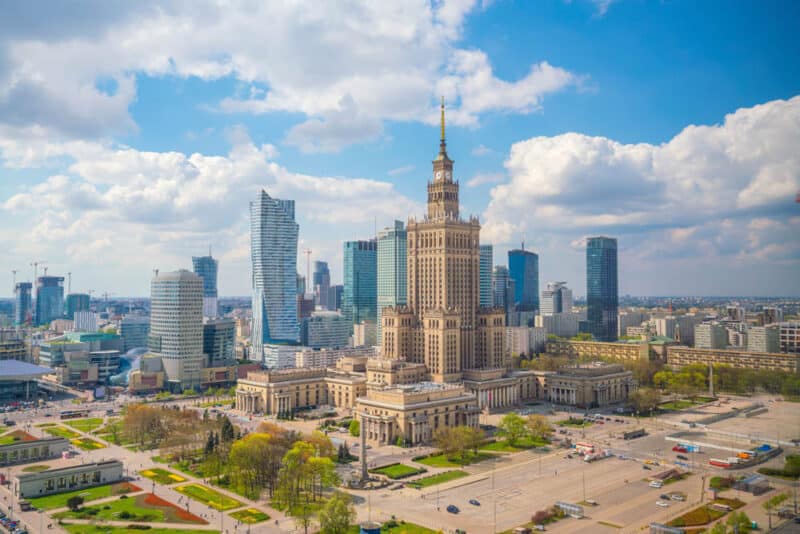
True to its name, the Palace of Culture and Science continues to be an important cultural attraction. Inside the brutalist skyscraper, you’ll find cinemas, conference halls, and even a swimming pool.
Book a Palace of Culture and Science Tour
5. Jump in a Retro Van for a Communist Tour of Warsaw
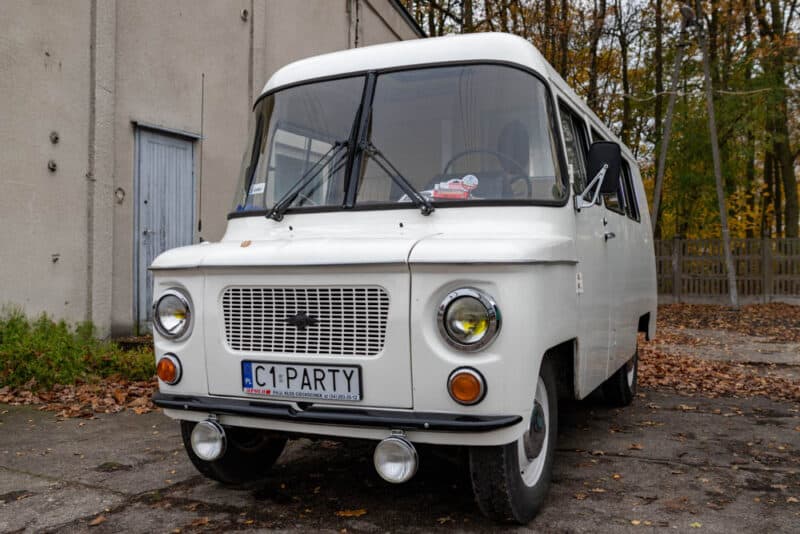
Want to learn more about Poland’s communist past? Then jump in a retro van for a communist tour of the city.
Adventure Warsaw operates unique tours in the back of a communist-era Nysa 522, a classic minivan that once plied the streets of Poland. This is one of the top things to do in Warsaw, and you’ll be whisked around the city’s major communist sights as you learn about the country’s 20th-century history.
The tour ends at the Museum of Life Under Communism , where you’ll chat with locals who lived under communism. You’ll also get to try some Polish vodka – because this is Poland, of course.
If you don’t like the idea of a retro van tour, then you can also consider joining communist walking tours. These take you to many of the major sights and provide an insight into what life was like behind the Iron Curtain until the fall of communism in Poland in 1989.
Experience a Private Tour by Communist Van
6. Explore Art and History at the National Museum in Warsaw
The National Museum in Warsaw is home to some of Poland’s greatest historical and cultural treasures, and it’s a must-see attraction when you’re exploring the nation’s capital. This is the largest museum in Warsaw, in fact, and you can easily spend hours delving into the extensive art history collections arrayed across its multiple floors and galleries.
The National Museum in Warsaw was originally founded in 1862 as a fine art museum, but its remit has expanded greatly since then. Today, you can see a famous collection of art created by early Nubian Christians almost 2,000 years ago. Ancient Greek and Roman sculptures are even older, while the medieval and modern galleries are not to be missed.
7. Find Chopin’s Heart in Warsaw
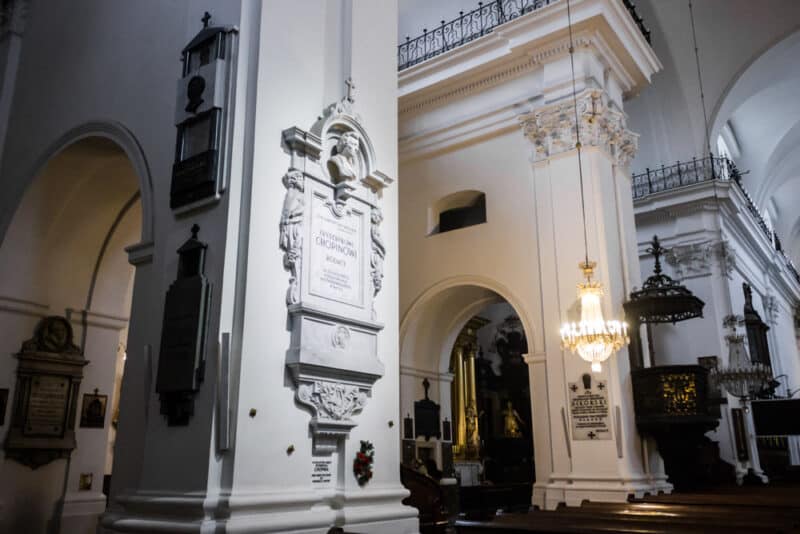
Frederic Chopin is one of Poland’s most famous sons. The 19th-century musician was one of the finest composers and pianists of his age, but he was forced to spend much of his life in exile.
Although he was born and raised in Warsaw, Polish nationalist uprisings against the Russian Empire saw Chopin moving to Paris when he was 20. He died young of tuberculosis, although you’ll hear in Warsaw that he died of a broken heart, longing to see his beloved Poland once more.
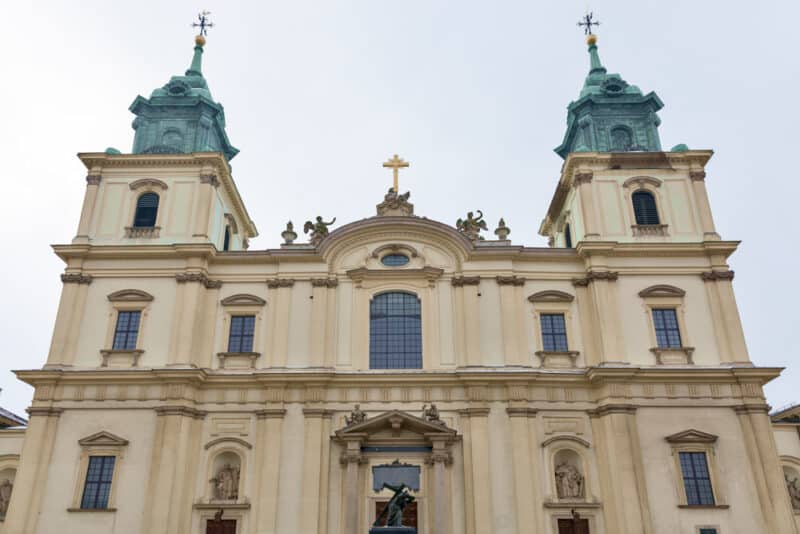
Rather strangely, Chopin asked that his heart be cut from his dead body, as he feared being buried alive. Eventually, his pickled heart found its way back to Poland, where it now rests in the Church of the Holy Cross in Warsaw. You can go and find it, if you’re feeling macabre.
Alternatively, you can visit the Museum of Frederic Chopin to learn more about the life of Poland’s famed composer. The museum is located in the house where Chopin was born, and it’s one of the must-do things in Warsaw for music lovers.
8. Get Interactive at the Copernicus Science Center
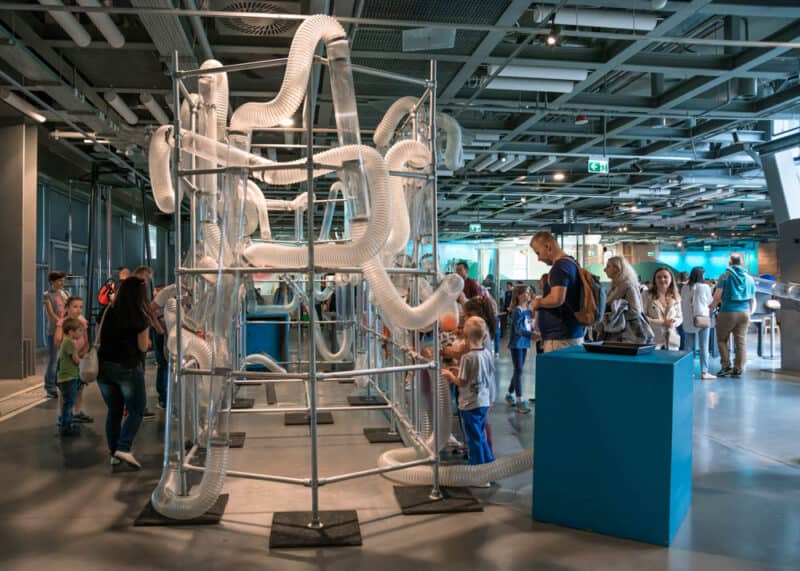
For kids, families, and lovers of science, one of the best places to visit in Warsaw is the Copernicus Science Center .
The center is, of course, named for Nicolaus Copernicus, another of Poland’s most famous sons. Copernicus was a renaissance era astronomer, and he famously developed a theory that the earth revolved around the sun and not the other way around.
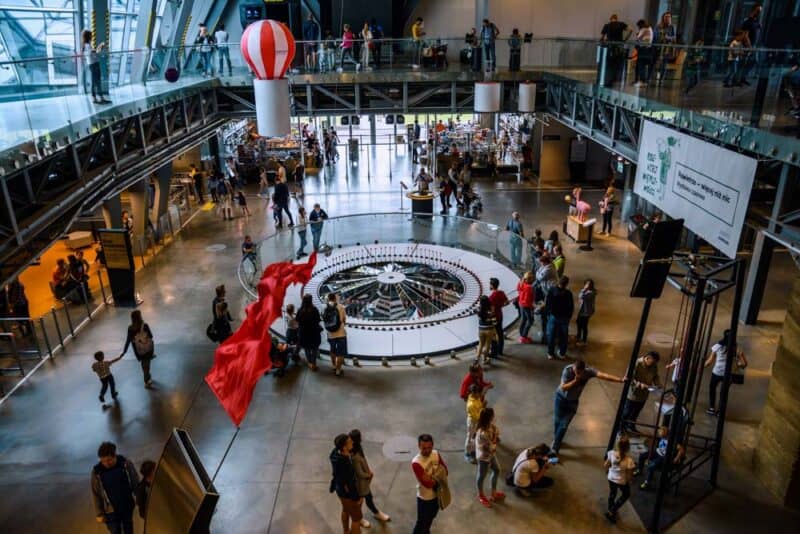
Inside the Copernicus Science Center, you’ll find an entire floor dedicated to the stars and astronomy. But the Planetarium is just one of the exhibitions you can get interactive with at this huge science museum.
The permanent exhibitions include over 400 interactive exhibits, which explore everything from the beginnings of human civilization to science experiments, robotics, and much, much more.
9. Delve into World War II History at the Warsaw Uprising Museum
For history lovers, one of the best sights in Warsaw is the Warsaw Uprising Museum . Warsaw spent long years under German occupation during the Second World War, but as the Soviets advanced across eastern Europe in 1944, the time finally came for the city to rebel.
Visit the excellent Warsaw Uprising Museum, and you’ll learn how the city fought back for 63 days. The Warsaw Uprising began on August 1, 1944, and bloody fighting rocked the city until the rebel army surrendered on October 2, 1944, before the Soviets reached them.
After the defeat, Warsaw was systematically destroyed, and little remained once the Germans eventually retreated. The event scarred Warsaw forevermore, and inside the museum, you can delve deeper into the individual human stories of those who fought in the battle and the Allied leaders who strategized and argued as Warsaw burned.
After your trip to the museum, make sure to visit the moving Warsaw Uprising Monument, which is a lasting tribute to those who lost their lives in the fight.
10. Uncover the Origins of Vodka at the Polish Vodka Museum
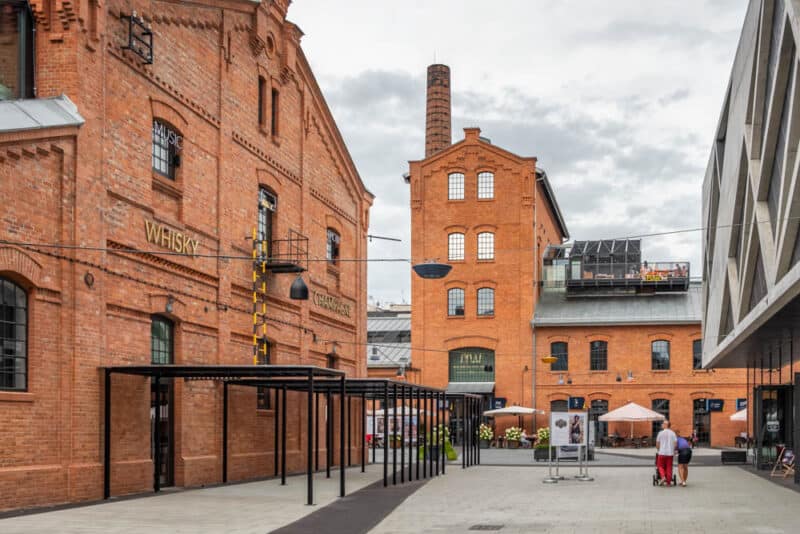
If you’re looking to enjoy a few lighthearted hours in the city, then one of the best places to visit in Warsaw is the Polish Vodka Museum .
Vodka is Poland’s national drink, and the humble spirit distilled from grains is said to date back to at least the 14th century. The origins are disputed, with many surrounding nations claiming vodka to be theirs, but you can see the Polish side of the story at the museum.
The Polish Vodka Museum is located in an old red brick factory that used to distill vodka. You’ll learn the centuries-old history of this fiery alcoholic tipple, see the different ways it can be distilled, and explore the different ingredients that can be used to make it.
You can then try your hand at preparing your own vodka recipes before enjoying a tasting session in the bar. There is even an on-site restaurant where you can try local Polish dishes while sampling more vodkas from around the country.
Book a Polish Vodka Museum Tour
11. Learn about Poland’s Neon Love Affair at the Neon Museum
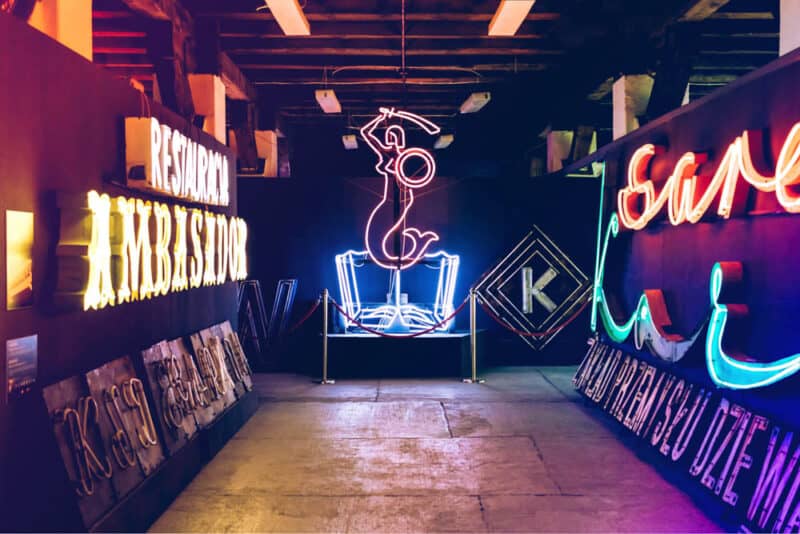
Visiting the unusual Neon Museum is one of the coolest things to do in Warsaw. Located in the city’s alternative Praga District, the Neon Museum has been wowing visitors with its garish collection of neon artworks and advertising signs since it first opened in 2012.
Yes, the concept does seem highly irregular, but you’ll be instantly drawn to the fascinating story of Poland’s love affair with neon lighting the moment you walk through the doors.
Neon signs were popular during the communist era, and while they didn’t necessarily advertise products as you’d expect them to in capitalist countries, they were a fixture of streets across Warsaw. Their role was often to inform rather than sell products to potential customers.
The Neon Museum saved many from being lost when the country transitioned to capitalism, and it now holds 200 nostalgic neon signs on display in an old factory in Praga. It’s a fascinating look at communist history through a unique lens and easily one of the best things to do in Warsaw.
12. Explore Warsaw’s Alternative Side in Praga
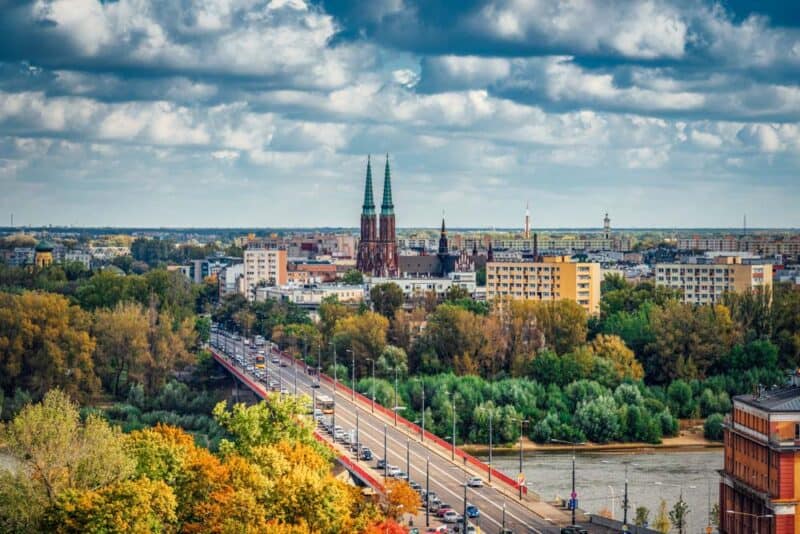
Cross over the Vistula River from Warsaw’s Old Town, and you’ll find yourself in Praga. The eastern bank of the river is home to the city’s alternative district, where you can not only find the Neon Museum but the Museum of Praga , Warsaw Zoo , Praga Park, and many more top Warsaw attractions.
Take a walking tour, and you’ll learn how Praga was a separate city from Warsaw for much of its history. Divided by the river, Praga was an independent entity with its own character, government, and institutions. Praga survived World War II almost untouched because of this, and it’s fascinating to compare both sides of modern Warsaw during your stay.
Today, Praga is home to many of Warsaw’s best underground clubs, craft beer bars, and independent cinemas, making it an excellent alternative base in the city (it’s a great place for a night out!).
13. Learn How to Cook Pierogi in Warsaw

A cooking class is one of the most fun things to do in Warsaw, and nothing quite beats learning (or trying to learn) how to make pierogi when you’re in the Polish capital.
Pierogi are dumpling-like parcels of delicious joy, and you’ll find them on menus all over Poland. They’re a national favorite, and they can be filled with sweet and savory delights ranging from sweet cheese to potatoes and sauerkraut.

Join a cooking class, and you’ll learn how to roll out the dough (prepared using flour, water, and possibly egg) before cutting it into dumpling-sized portions. You’ll then wrap up your fillings, crimp the edges, and then boil or pan-fry the pierogi to perfection. Add a dollop of sour cream, and you’ve got yourself a feast to enjoy!
14. Visit POLIN, the Museum of the History of Polish Jews
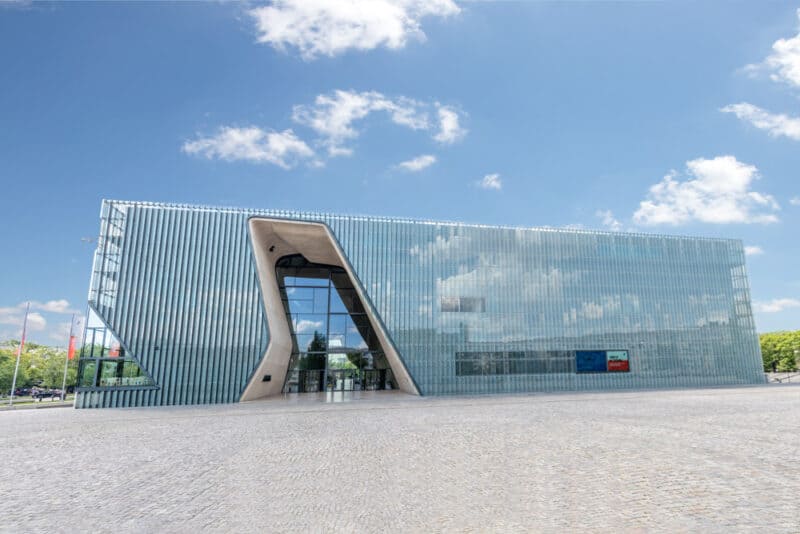
One of the most important Warsaw attractions is POLIN , or the Museum of the History of Polish Jews. This excellent and, at times, emotional museum takes a staggeringly deep dive into Jewish history, and it’s a must-visit when you’re in the city.
POLIN is an ambitious project that attempts to tell centuries of history as you walk through its informative yet moving exhibition floors. The museum itself is located on the ruins of the Warsaw Ghetto, where the city’s Jewish population was mercilessly quartered during the German occupation in World War II.
As you arrive at the museum, you’ll see the Warsaw Ghetto Uprising Memorial, a lasting tribute to the Jewish fighters and civilians who died in an ill-fated rebellion launched in 1943. But the story begins long before this, as you start by learning the origin stories of Poland’s Jewish population, who are said to have migrated here from the 10th century onwards.
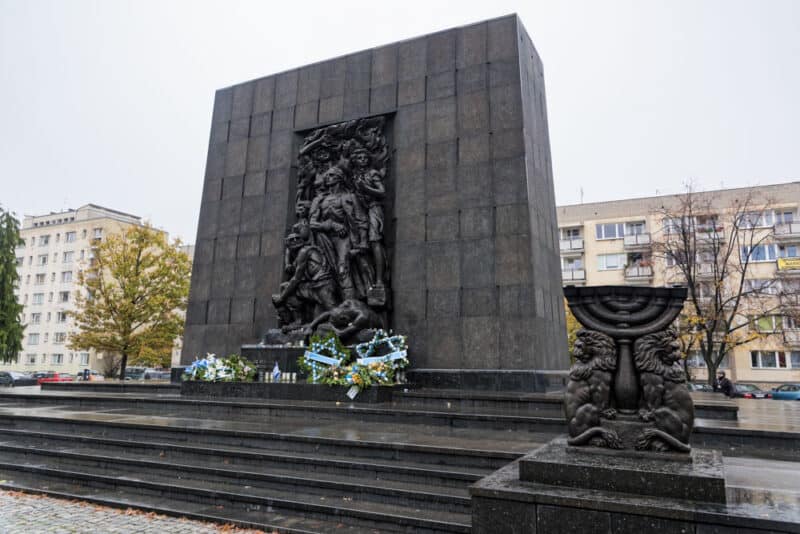
The museum explores the different eras that followed, showing how the Jewish population was continually persecuted throughout history, even as they rose to contribute greatly to Polish society. It culminates with an exhibition showing how Poland’s Jews were almost entirely wiped out during the Holocaust, and it was only in 2007 that a museum was founded to tell their story.
If you’re interested in learning more after POLIN, then you may want to consider taking a Jewish Walking Tour of Warsaw or visiting the Jewish Cemetery.
POLIN Museum Ticket
15. Take a Moving Tour of Treblinka
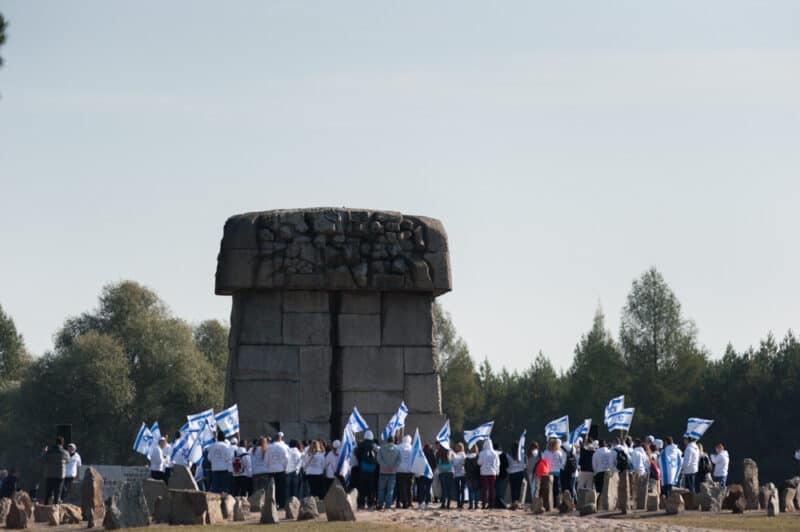
After even a few days in Warsaw, you’ll start to realize just how much Poland suffered during World War II. Just a 90-minute drive from the city, you can see where the Nazi’s brutal policies came to a nasty pinnacle with a trip to Treblinka.
Treblinka was a Nazi death camp, and hundreds of thousands of people (the vast majority of them Jewish) lost their lives here between 1942 and 1943. In the short span of time it was open, it’s estimated that as many as 700,000 people were killed here (second only to Auschwitz).
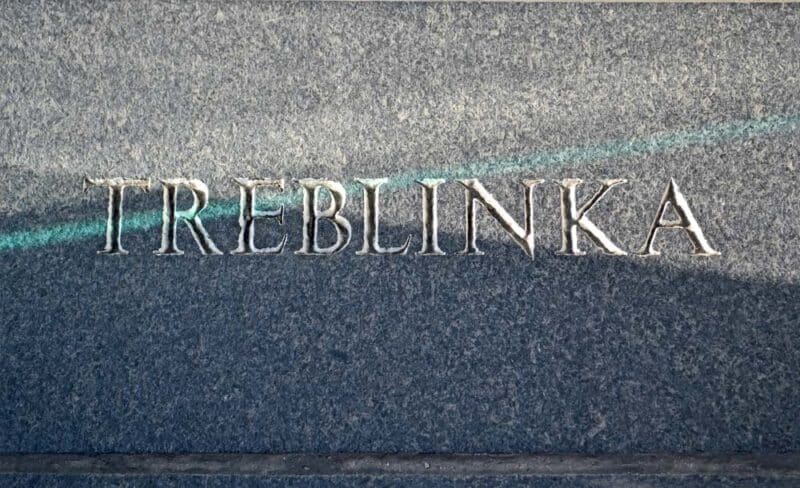
The Nazis tried to cover up their atrocities, and it wasn’t until the 1960s that the first memorial was built here. Join a day tour from Warsaw, and you’ll learn more about the dark history of the camp and see the monuments that mark this dark era in European history.
Treblinka Concentration Camp Tour
There you have it! The 15 best things to do in Warsaw. What’s your favorite thing to do in Warsaw?
Planning a trip to Poland? Check out our favorite books and travel guides!

SHARE THIS ON PINTEREST
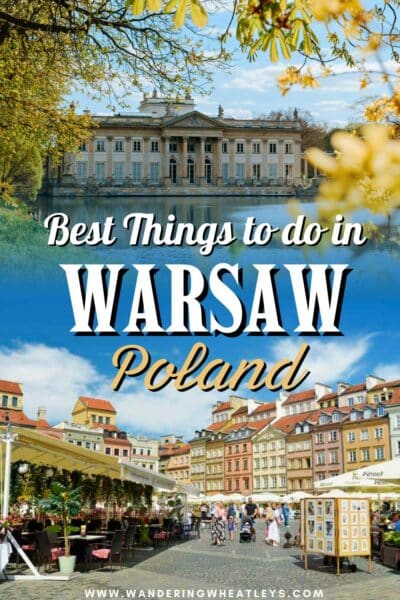
Richard is an award-winning travel writer based in Southwest England who’s addicted to traveling off the beaten track. He’s traveled to 75 countries and counting in search of intriguing stories, unusual destinations, and cultural curiosities. Richard loves traveling the long way round over land and sea, and you’ll find him visiting quirky micronations and breakaway territories as often as he’s found lounging on a beach (which is a lot). When he’s not writing for BBC Travel, National Geographic, or Lonely Planet, you can find Richard writing for the Wandering Wheatleys or updating his off-beat travel blog, Travel Tramp.
Related Posts
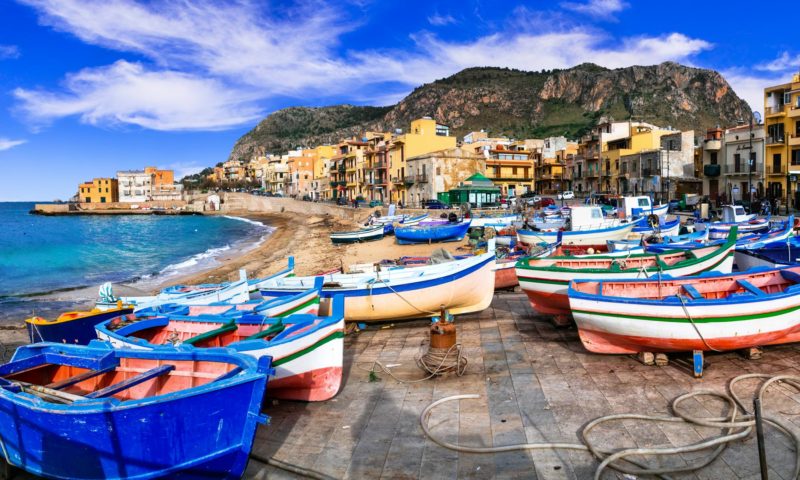
The 12 Best Boutique Hotels in Sicily
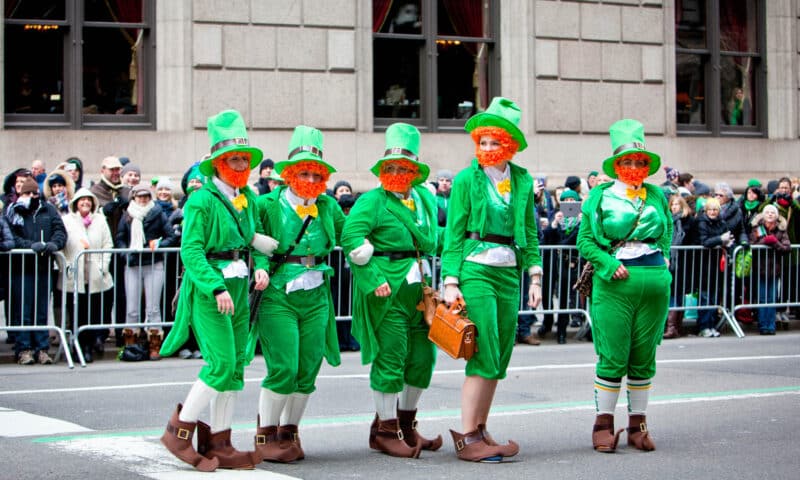
The 15 Best Places to Celebrate St. Patrick’s Day
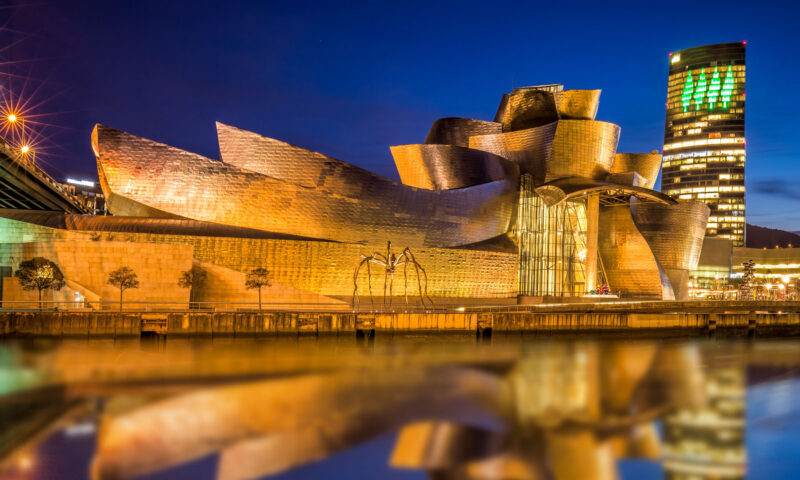
The 15 Best Things to do in Bilbao, Spain
Leave a comment cancel reply.
Your email address will not be published. Required fields are marked *

- Visa Application Helpline
Subscribe to our newsletter
Learn how to live a sustainable long-term travel lifestyle.
By signing up, you agree to the our terms and our Privacy Policy agreement.
Top 27 Places to visit in Darjeeling, Explore the Beautiful Hills of Darjeeling
Top 10 things to do when traveling to shimla: shimla travel guide, the ultimate paris travel guidelines for first timers | top attractions & things to do.

The Top 14 Tourist Attractions in Warsaw: From Old Town Charm to Modern Marvels
Warsaw is a city that never ceases to amaze me. It has almost everything under the sun! Sparkling skylines, tall skyscrapers, and bustling streets coexist with peaceful green lawns and gardens, ancient palaces, and Gothic architecture is all that Warsaw is about.
Tourist Attractions in Warsaw : Tourists come in droves to see the Jablonowski Palace, the Old Town Market Square, and other attractions. Warsaw is rich in culture and history, as evidenced by its tourist attractions, including galleries, palaces, and museums.
Warsaw has something for everyone, whether you like history, classical music, contemporary art, or fitness.
During my four days visit, I have gathered some beautiful memories to share with you. In this detailed guide, I will help you to meet the some of the most favorable attractions in Warsaw.
So, pack our bags, and let’s see what attractions in Warsaw has for us.
WHAT IS COVERED IN THIS ARTICLE?
Exploring the Unmissable and best attractions in warsaw.
1. unlock the secrets of warsaw’s renowned chopin museum.

The Chopin Museum is a museum in Warsaw, Poland dedicated to the life and works of the famous Polish composer and pianist, Frédéric Chopin. The museum is located in the Ostrogski Palace, which is a historic 17th-century mansion that has been renovated and adapted to house the museum’s exhibitions.
The museum’s exhibits include artifacts related to Chopin’s life, such as personal items, manuscripts, and musical instruments. The museum also features multimedia installations, interactive exhibits, and audio guides that provide visitors with an immersive experience of Chopin’s music and legacy.
One of the highlights of the museum is a special audio-visual presentation that allows visitors to listen to Chopin’s music while viewing projected images of the places and landscapes that inspired his compositions. The museum also hosts regular concerts, lectures, and other events related to Chopin’s life and music.
The Chopin Museum is a must-visit attractions in Warsaw for anyone interested in classical music, piano, or Polish culture. It provides a fascinating insight into the life and work of one of the greatest composers of all time and offers a unique opportunity to experience his music in a historic and atmospheric setting.
Address: Pałac Gnińskich, Okólnik 1, 00-368 Warszawa
Opening Hours: Daily 11:00 am to 7:00pm (Times maybe change during winter)
Entrance Fee: Tickets is just 11.00 PLN depending on the day and time.
2. Wilanow Palace – An Introduction to Poland’s Cultural Heritage

Wilanów Park is a historical park located in the Wilanów district of Warsaw, Poland. It is known for its beautiful gardens, scenic landscapes, and historic buildings. The park was created in the late 17th century by King John III Sobieski as a private garden and hunting ground.
Today, Wilanów Park covers an area of 45 hectares and features a variety of gardens, including a Baroque garden, an English landscape garden, and a rose garden. There are also several ponds, fountains, and sculptures scattered throughout the park.
One of the main attractions in the park is the Wilanów Palace, which was built in the late 17th century and served as the summer residence of King John III Sobieski. The palace features a rich collection of paintings, furniture, and decorative arts, and is open to the public as a museum.
Wilanów Park is a popular destination for locals and tourists alike, offering a peaceful retreat from the hustle and bustle of the city. It is also a popular venue for cultural events, including concerts, festivals, and exhibitions. It’s one of the best attractions in Warsaw.
Address: Stanisława Kostki Potockiego 10/16, 02-958 Warszawa
Opening Hours: Daily 9:30 am to 9:00pm (Times maybe change during winter)
Entrance Fee: Regular 20 PLN Full list of ticket & reservation
3. Exploring Warsaw’s Old Town Square

The Warsaw Old Town Square is a historic square located in the heart of the Old Town of Warsaw, Poland. The square is a popular tourist destination and is known for its charming atmosphere, stunning architecture, and rich cultural history.
The Old Town Square is surrounded by colorful buildings with Gothic, Renaissance, and Baroque architecture, which were meticulously restored after being destroyed during World War II. The square is also home to the iconic Sigismund’s Column, a bronze statue of King Sigismund III Vasa, who moved the capital of Poland from Krakow to Warsaw in the late 16th century.
The square is bustling with activity and is home to many cafes, restaurants, and souvenir shops. In the summer months, visitors can enjoy live music performances, street vendors, and outdoor seating areas.
The Old Town Square is also the site of many cultural events and festivals throughout the year, such as the Warsaw Old Town Festival, which celebrates the history and culture of the Old Town. Overall, the Warsaw Old Town Square is a must-visit destination for anyone interested in history, culture, and architecture. It’s one of the best attractions in Warsaw.
4. Exploring the Rich History of Warsaw’s Royal Castle
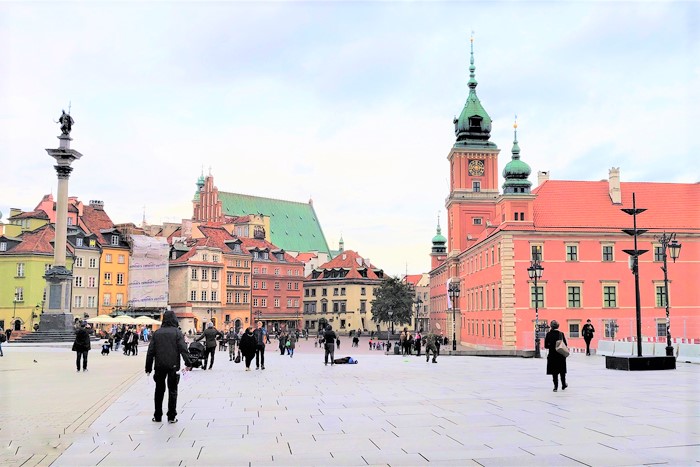
The Royal Castle of Warsaw is a magnificent landmark located in the heart of Warsaw, the capital city of Poland. The castle was originally built in the 14th century and served as the residence of Polish monarchs until the end of the 18th century. Throughout the centuries, the castle was modified, renovated and expanded many times, which resulted in the creation of a unique blend of architectural styles, ranging from medieval to baroque and neoclassical.
During World War II, the castle was severely damaged and almost completely destroyed. However, in the post-war period, it was meticulously reconstructed, using original building plans and historical descriptions. Today, the Royal Castle is one of the most important cultural institutions in Poland, hosting a variety of events, including exhibitions, concerts, and official ceremonies.
The Royal Castle is also home to several permanent exhibitions, showcasing the castle’s history, art collections, and interiors. Visitors can admire the castle’s Throne Room, the King’s Apartments, the Canaletto Room, and the Great Assembly Hall, among other impressive chambers. The castle’s collection of art includes masterpieces by famous Polish and European painters, such as Rembrandt, Rubens, and Canaletto.
Overall, the Royal Castle of Warsaw is a must-see attraction for anyone visiting Warsaw, not only because of its historical significance and architectural beauty but also because of the invaluable cultural treasures it contains.
Address: plac Zamkowy 4, 00-277 Warszawa
Opening Hours: Daily 11:00 am to 5:00pm ( Times maybe change during winter)
Entrance Fee: Regular 30 PLN Full list of ticket & reservation
5. Exploring the Beauty of Warsaw Lazienki Park
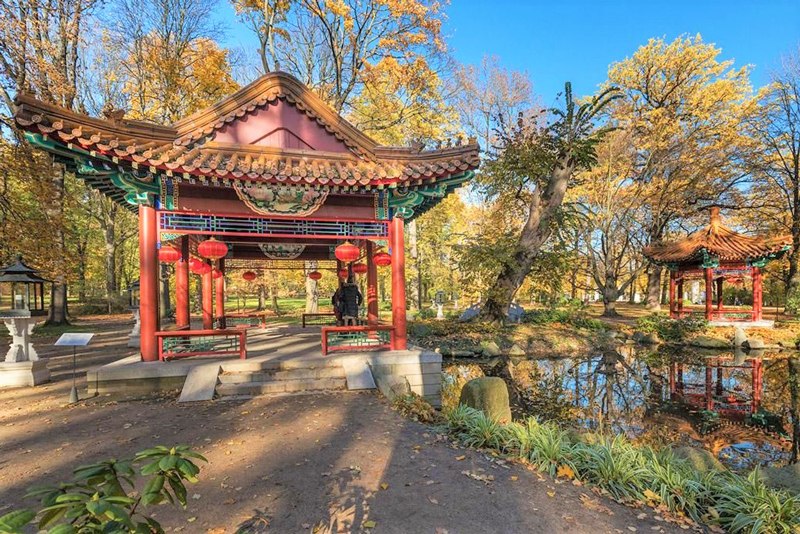
Łazienki Park, also known as the Royal Baths Park, is one of the largest and most beautiful parks in Warsaw, Poland. The park covers an area of over 76 hectares and includes a number of gardens, monuments, palaces, and lakes.
The park was established in the 17th century as a private garden for King Stanisław Herakliusz Lubomirski, and it was later expanded and redesigned by King Stanisław August Poniatowski in the 18th century. The park was open to the public in the 19th century and quickly became a popular destination for Warsaw residents and visitors.
One of the most famous attractions in the park is the Palace on the Water, a neoclassical palace located on an artificial island in the middle of a lake. The palace was originally built in the 17th century and was extensively renovated and expanded in the 18th century. Today, it houses a museum with a collection of royal portraits and other works of art.
Other notable features of the park include the Amphitheater, the Old Orangery, the New Orangery, and the Myślewicki Palace. The park is also home to a number of beautiful gardens, including the Chinese Garden, the Rose Garden, and the Modernist Garden.
Łazienki Park is not only a beautiful and peaceful place to walk and relax but also an important cultural center, hosting numerous concerts, festivals, and exhibitions throughout the year. One of the most popular events is the Chopin Concerts, which take place in the park during the summer months and showcase the music of Poland’s most famous composer, Frédéric Chopin.
6. Visit Krakowskie Przedmiescie one of Warsaw’s Essential Streets
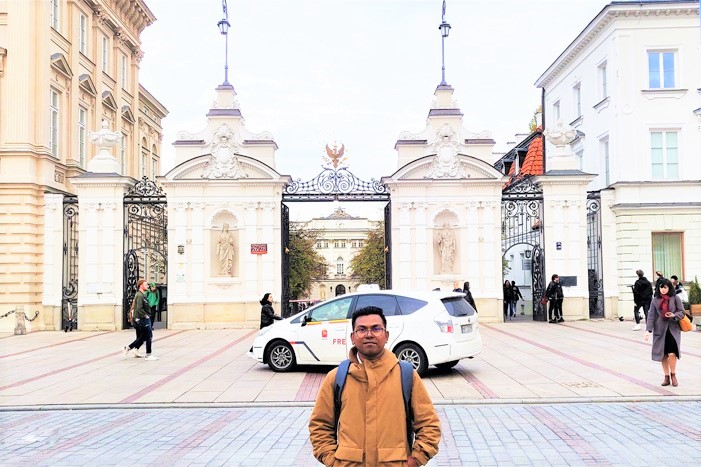
Krakowskie Przedmieście is one of the most famous and historic streets in Warsaw, Poland. Located in the heart of the city, it stretches from the Royal Castle to the University of Warsaw and is lined with stunning historical buildings, monuments, and landmarks.
The street has a rich history dating back to the 15th century when it served as the main road connecting Warsaw to the royal capital of Krakow. Over the centuries, many important figures have lived and worked on Krakowskie Przedmieście, including scientists, artists, and politicians.
Today, the street is a popular destination for both tourists and locals, offering a wide range of attractions and activities. Some of the most notable landmarks on Krakowskie Przedmieście include:
- The Royal Castle: Located at the northern end of the street, the Royal Castle is one of the most important historical buildings in Warsaw.
- The Presidential Palace: Located in the middle of the street, the Presidential Palace is the official residence of the President of Poland.
- The University of Warsaw: Located at the southern end of the street, the University of Warsaw is one of the oldest and most prestigious universities in Poland.
- The Tomb of the Unknown Soldier: Located in front of the Presidential Palace, the Tomb of the Unknown Soldier is a monument dedicated to the soldiers who died fighting for Poland.
Krakowskie Przedmieście is also home to a number of museums, art galleries, cafes, restaurants, and shops, making it a great place to spend an afternoon or evening exploring
7. Exploring the Museum of the History of Polish Jews
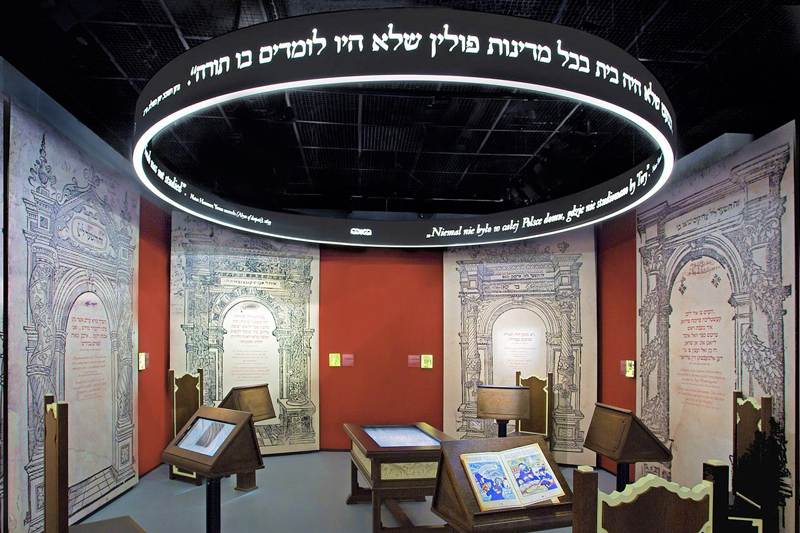
This museum offers a variety of educational materials about the history of Polish Jews . The museum also has a library and archive where tourists can learn about the past.
This museum’s design will teach you about the Jewish faith and culture in eight galleries, demonstrating that Poland had more Jews than any other country. Nonetheless, the site will weave you into the history of Poland in this way.
It preserves and exhibits a Jewish heritage collection dating back to the Middle Ages. Offering various programs focusing on Jewish history and culture will take you back to the medieval era.
Address: Mordechaja Anielewicza 6, 00-157 Warsaw
Opening Hours: Wednesday to Tuesday 11:00 am to 5:00pm (Times maybe change during winter)
Entrance Fee: Regular 30 PLN
8. The Grandeur of Poland’s Palace of Culture and Science
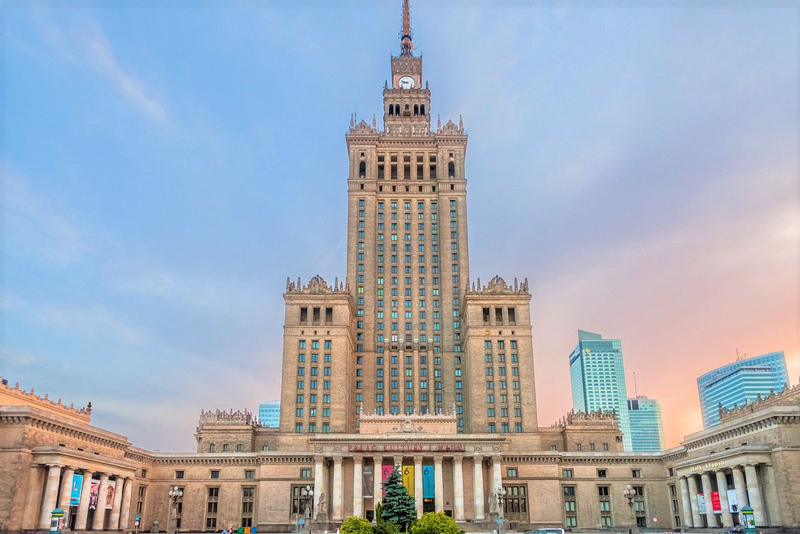
The Palace of Culture and Science is a prominent building in Warsaw, Poland, and is one of the city’s most recognizable landmarks. The building was completed in 1955 and was a gift from the Soviet Union to the people of Poland.
Designed by Soviet architect Lev Rudnev, the Palace of Culture and Science is a striking example of Socialist Realist architecture, characterized by its grand scale and ornate decorations. The building stands at over 230 meters tall and contains a wide range of facilities, including offices, conference rooms, theaters, cinemas, museums, and a swimming pool.
The Palace of Culture and Science has a complex and controversial history. During the Soviet era, it was seen by many Poles as a symbol of Soviet domination and was the subject of much criticism and controversy. After the fall of communism in Poland in 1989, there were calls to demolish the building, but it ultimately remained standing and was instead repurposed for a variety of cultural and commercial uses.
Today, the Palace of Culture and Science is a popular destination for tourists and locals alike. It houses several museums, including the Museum of Technology and the Museum of Evolution, as well as a number of theaters and cinemas that show both Polish and international films. The building also offers stunning panoramic views of Warsaw from its observation deck, which is located on the 30th floor.
Address: plac Defilad 1, 00-901 Warszawa
Opening Hours: Daily 10:00 am to 8:00pm ( Times maybe change during winter)
Entrance Fee: Observation deck PLN 20 ticket & reservation
9 A Look Inside the Stunning Architecture of the Warsaw Holy Cross Church
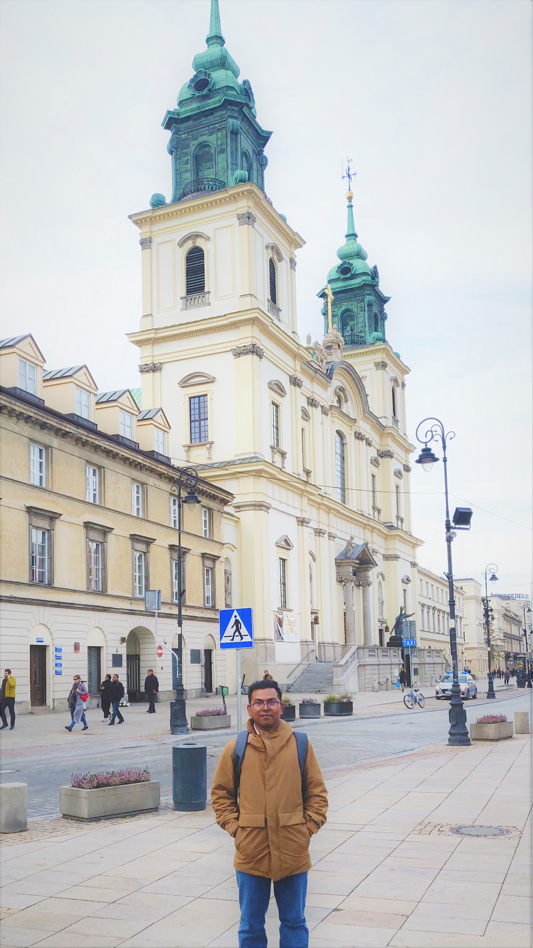
The Holy Cross Church is a historic Catholic church located in the center of Warsaw, Poland. Originally built in the 17th century, the church has undergone several renovations and restorations over the years, including a major reconstruction in the 18th century that transformed it into a Baroque masterpiece.
The Holy Cross Church is perhaps best known for its association with the composer Frédéric Chopin, who spent much of his life in Poland and is considered one of the country’s greatest cultural icons. Chopin’s heart was interred in the church following his death in 1849, and a plaque in his honor can be found on the church’s exterior. The church also houses a museum dedicated to Chopin, which contains a collection of his personal belongings, manuscripts, and other memorabilia.
Aside from its association with Chopin, the Holy Cross Church is renowned for its stunning interior, which features elaborate Baroque decorations, gilded altars, and intricate frescoes. The church also boasts a remarkable collection of religious art and artifacts, including a reliquary containing the remains of Saint Clement and a 15th-century Gothic crucifix.
In addition to its historical and cultural significance, the Holy Cross Church is an active place of worship and serves as a center of spiritual life for Catholics in Warsaw. Daily masses are held in both Polish and English, and the church hosts a variety of religious and cultural events throughout the year.
Address: Krakowskie Przedmieście 3, 00-047 Warszawa
Opening Hours: Daily 06:00 am to 8:00pm ( Times maybe change during winter)
Entrance Fee: Free
10. Unique Experiences at the Warsaw Fountain Park

The Warsaw Fountain Park is a public park located in the Old Town district of Warsaw, Poland. It is also known as the Multimedia Fountain Park, as it features a fountain that is synchronized with music and lighting effects to create a spectacular multimedia display.
The fountain itself is made up of over 300 water jets that can shoot water up to 8 meters high. The jets are synchronized to music and lighting effects, which change according to the theme of the show. The park also includes a large amphitheater for concerts and events, as well as walking paths and green spaces for visitors to enjoy.
The Warsaw Fountain Park is open during the summer months and is free for visitors to enjoy. The multimedia shows typically run in the evenings, with multiple shows per night. The park has become a popular attraction for tourists and locals alike, offering a unique and entertaining experience in the heart of Warsaw’s historic Old Town.
Address: Skwer 1 Dywizji Pancernej WP, 00-221 Warszawa
Opening Hours: 24 hours
11. Check out St. John’s Archcathedral
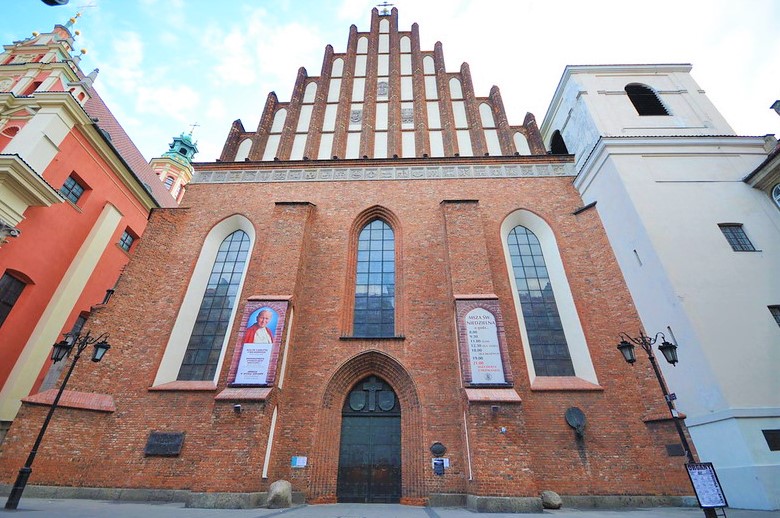
St. John’s Archcathedral is one of the most popular tourist destinations and is known for its impressive architecture. This imposing structure is one of the city’s most photographed and well-known landmarks.
It’s also home to some of the city’s most famous Catholics. As the witness of World War II, this archcathedral was renovated and built several times.
It has a unique style and is one of the most prevalent tourist attractions in the city. Take a walk or ride to St. John’s Archcathedral and admire its beautiful architecture. The cathedral is a key tourist spot in the city, and it’s easy to see why.
With its soaring spires and intricate designs, the cathedral is a sight to behold. You’ll find beautiful architecture here, as well as some impressive artwork. Plus, it’s easy to get around, and you are in front of this intergalactic sight.
12. Experience the Heroes of the Warsaw Uprising at the Museum

The Warsaw Uprising Museum is a museum that tells the story of the 1944 Polish uprising against the Nazi occupation.
Founded in 2006 and located in the Warsaw district of Toruń, it has a collection of over 500 items, including artifacts from the uprising and related events.
It commemorates the events that took place during the Warsaw uprising of 1944. It is open to the public and visitors all the time. The uprising was a successful attempt by the Polish people to overthrow their Soviet-backed government.
It was one of the largest and most successful military uprisings in history. It offers a unique insight into life for ordinary people during the struggle for freedom and democracy.
13. St. Anne’s Church Observation

The observation of St. Anne’s Church in Warsaw, adjacent to Poland, is one of the best beautiful places in Warsaw. The church stills stand with pride as one of the oldest churches in Leominster.
It is also one of the most popular tourist attractions in the town. St. Anne’s Church, located in Burlington, offers an observation deck that is perfect for taking in the sights and sounds of the city.
The deck is open from 9 a.m.–5 p.m. on weekdays and 9 a.m.–3 p.m. on Saturdays, as well as during special events such as festivals or market days.
There are also interpretive signs around it that explain the history and its role in the community- the most incredible thing you’ll ever meet.
14. Spend sometimes in The Jewish Cemetery
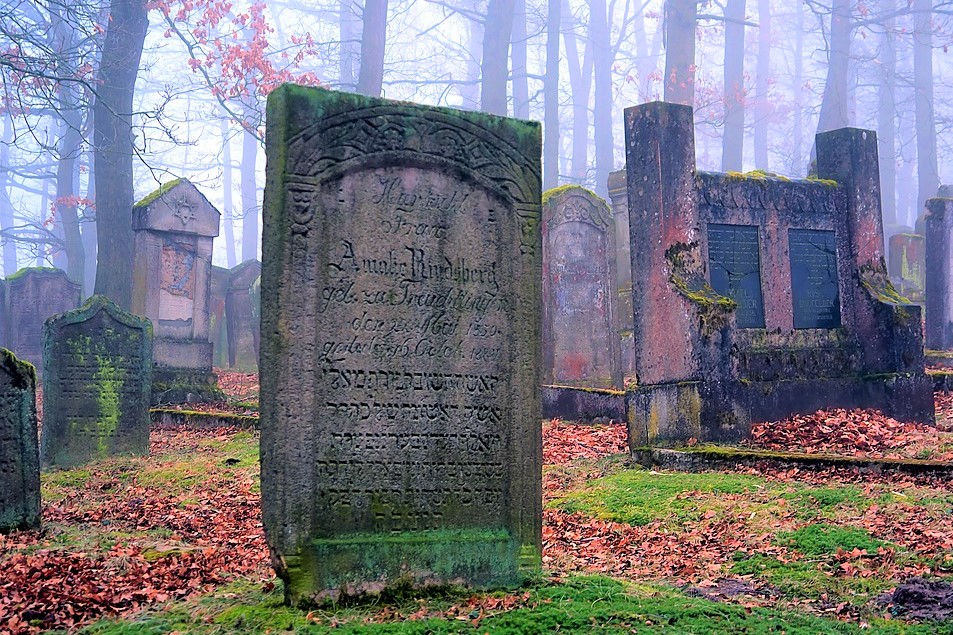
The Jewish Cemetery is a burial ground for Jews in the city of Warsaw, Okopawa Street. It is where mourners can visit the graves of family members who have passed away, as well as friends and colleagues who have died before them.
It was built in the early 1800s to accommodate the growing population of Tel Aviv. The cemetery has over 11,000 graves and includes a Holocaust memorial. The cemetery also contains a wealth of Holocaust memorabilia and survivors’ art.
It has been in operation since the first century AD. It is one of the most important tourist attractions in Jerusalem. The cemetery contains many famous Holocaust victims, including Jean-Claude van Damme and Yoko Ono.
Best time to visit Warsaw.
The best time to visit Warsaw is during the summer months of June to August, when the weather is warm and there are plenty of outdoor events and festivals.
However, if you’re looking to avoid crowds and save money, consider visiting in the shoulder seasons of spring (April to May) or fall (September to October). Winter (December to February) can be cold and snowy, but it’s also a magical time to visit with Christmas markets and winter sports.
Getting to Warsaw
Warsaw is relatively easy to reach. It has two airports: Chopin Airport and Warsaw Modlin Airport. There are also three rail stations, one for international trains and one for domestic trains. Long-distance buses arrive at Warsaw’s bus stop, Dworzec PKS Warszawa Zachodnia.
You can take anyone. If you prefer cars, there are plenty of options for you to use cars in rent. Rental cars can help you in the process.
Getting around Warsaw
Transport in Warsaw is dominated by trams, buses, and the metro. In the city, there are over 1,500 buses. There are also night buses, which are denoted by the letter N and a two-digit number.
If you want to travel while skipping the less important stops, you can take the Fast Buses, which are denoted by red digits. Tickets are valid for all three modes of transportation (bus, tram, and metro) and can be purchased from RUCH-branded kiosks.
Frequently asked questions (FAQs):
What is warsaw best known for.
Warsaw is best known for its rich history, stunning architecture, and cultural attractions such as the Royal Castle, Old Town Market Square, and the Warsaw Uprising Museum. It is also known for its vibrant nightlife, delicious cuisine, and beautiful parks and gardens.
What must do in Warsaw?
Some of the must-do attractions in Warsaw include visiting the Old Town, exploring the Royal Castle, checking out the Warsaw Uprising Museum, taking a stroll in Lazienki Park, and enjoying the panoramic views from the Palace of Culture and Science. Other popular activities include trying traditional Polish cuisine, visiting the Copernicus Science Centre, and taking a day trip to the nearby town of Zelazowa Wola, the birthplace of composer Frederic Chopin.
What are 2 tourist attractions in Poland?
Two popular tourist attractions in Poland are the historic city of Krakow, known for its stunning architecture and rich cultural heritage, and the Wieliczka Salt Mine, a UNESCO World Heritage site that features underground chambers, lakes, and sculptures made entirely of salt.
Is Warsaw worth visiting?
Warsaw is worth experiencing for its historical legacy and attractions. With its rich history and architecture, Warsaw has something for everyone to enjoy.
Is Warsaw a cheap city?
While you could easily spend a week exploring all that Warsaw has to offer, two days is enough time to see the highlights. With careful planning and prioritizing, you can visit top attractions like the Old Town, Palace of Culture and Science, and Łazienki Park, as well as sample some of the city’s delicious food and drink.
Do they speak English in Warsaw?
Yes, many people in Warsaw speak English, especially those working in the tourism industry. However, it’s always a good idea to learn a few basic phrases in Polish as a sign of respect and to make your interactions with locals more enjoyable. Some popular attractions in Warsaw include the Old Town, the Royal Castle, and the Warsaw Uprising Museum.
How far is it from Warsaw to Auschwitz?
The distance between Warsaw and Auschwitz is approximately 300 kilometers (186 miles). It takes about 4 hours to drive there, or you can take a train or bus which will take around 5-6 hours. It is recommended to book a guided tour in advance if you plan to visit Auschwitz.
Do they use Euro?
No, Poland does not use the Euro. The currency used in Warsaw and throughout Poland is the Polish złoty (PLN). It is recommended to exchange currency at a bank or exchange office for the best rates.
Final Words
Warsaw is a city that has been around for centuries, and its history reflects this. Its importance to Poland and the world has made it a destination for tourists and immigrants alike, and its location makes it an ideal city to live in.
I hope this guide help you to get the sneak peak of most favorable attractions in Poland. So, how about plan your next trip to Warsaw now?
Related Posts
Discover the best 15 day trips from paris: exploring the french countryside, the 20 best places to visit in munich, germany- visit the millionendorf of germany, the 15 best places in poland you will wish are your next vacation destination, the top 14 of the most beautiful places in germany you must visit.
Save my name, email, and website in this browser for the next time I comment.
This site uses Akismet to reduce spam. Learn how your comment data is processed .
Type above and press Enter to search. Press Esc to cancel.
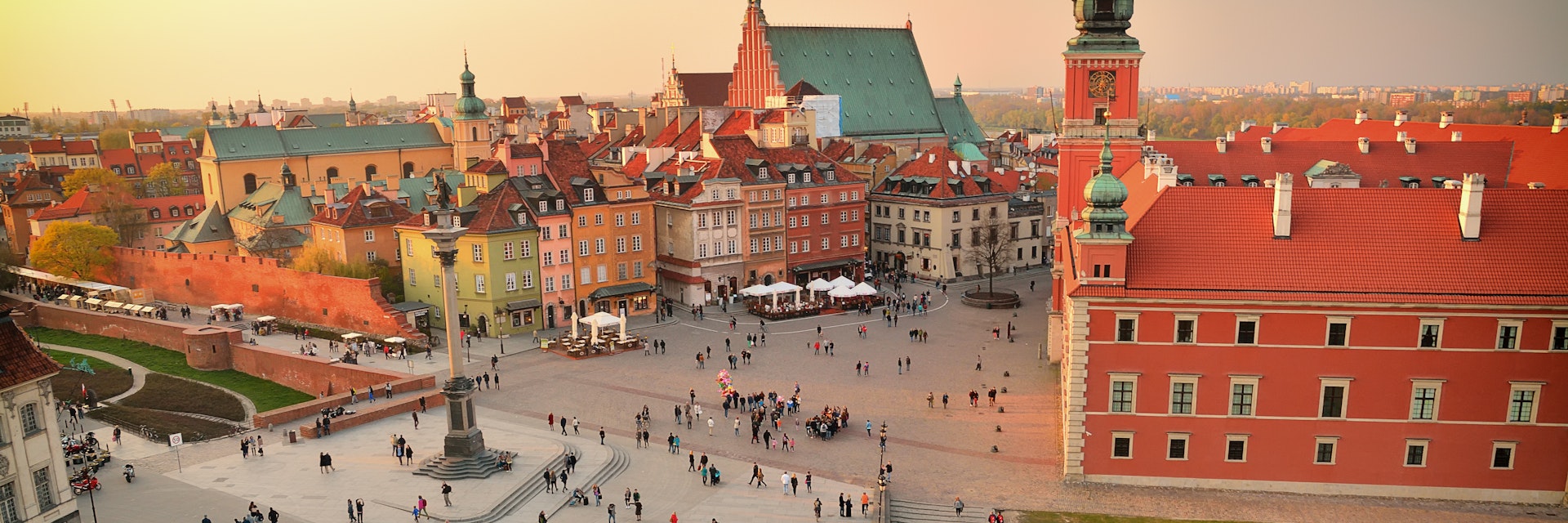
A phoenix arisen from the ashes, Poland's capital impresses with its resilience, respect for history, contemporary style and sheer joie de vivre.
Attractions
Must-see attractions.
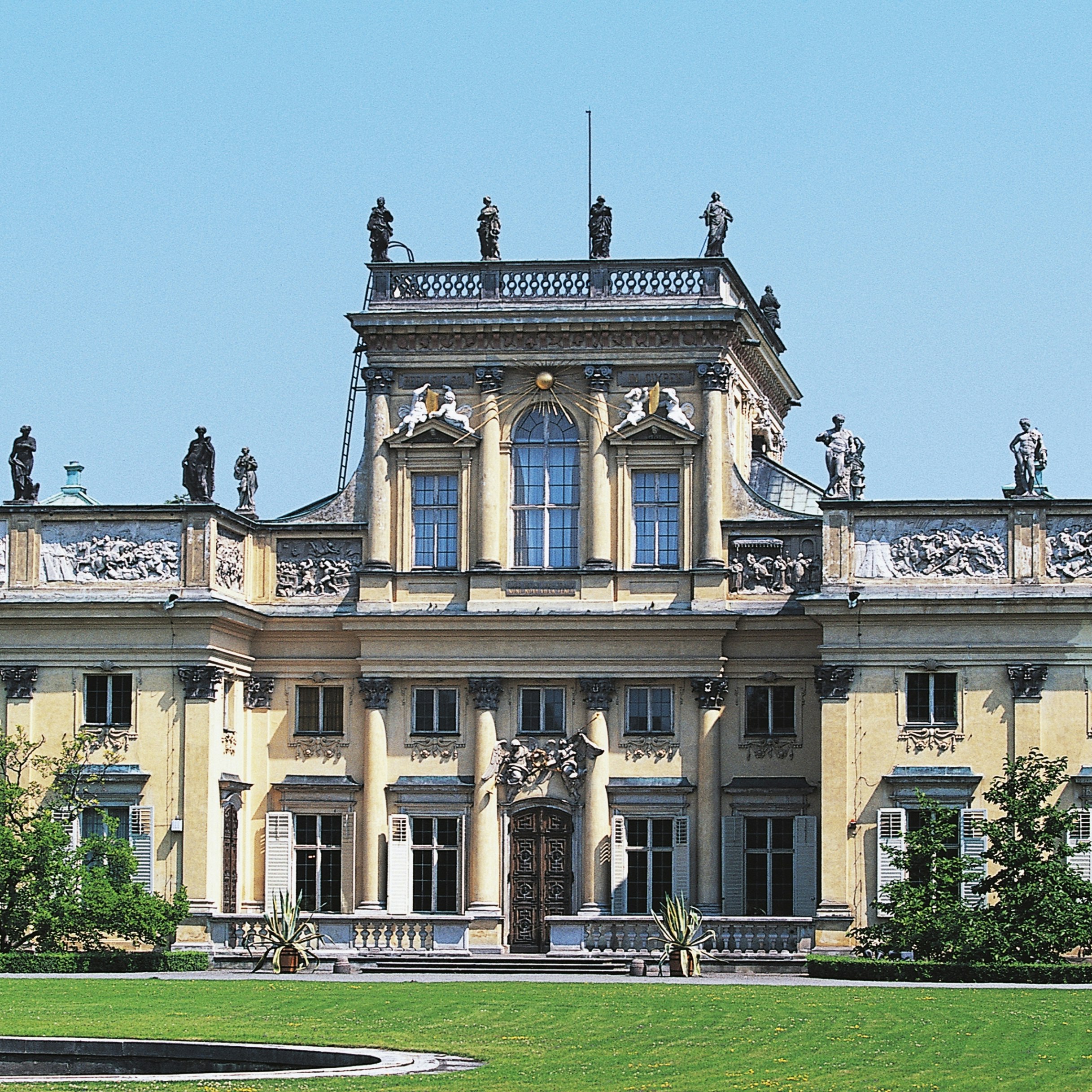
Wilanów Palace
Warsaw’s top palace, 10km south of the city centre, was commissioned by King Jan III Sobieski in 1677. It has changed hands several times over the…
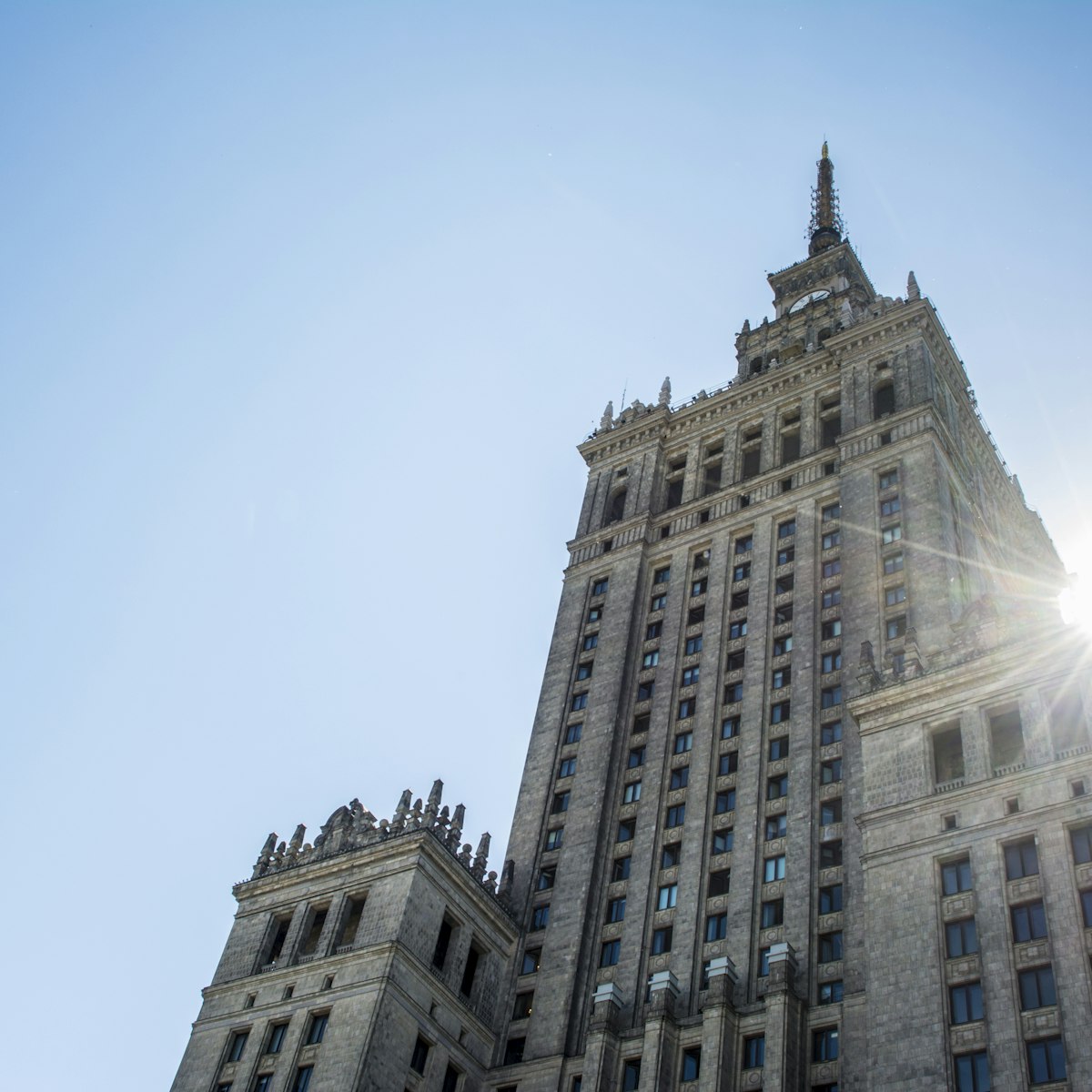
Palace of Culture & Science
For over 60 years this socialist realist palace has dominated central Warsaw. A ‘gift of friendship’ from the Soviet Union, it was completed in 1955 and…
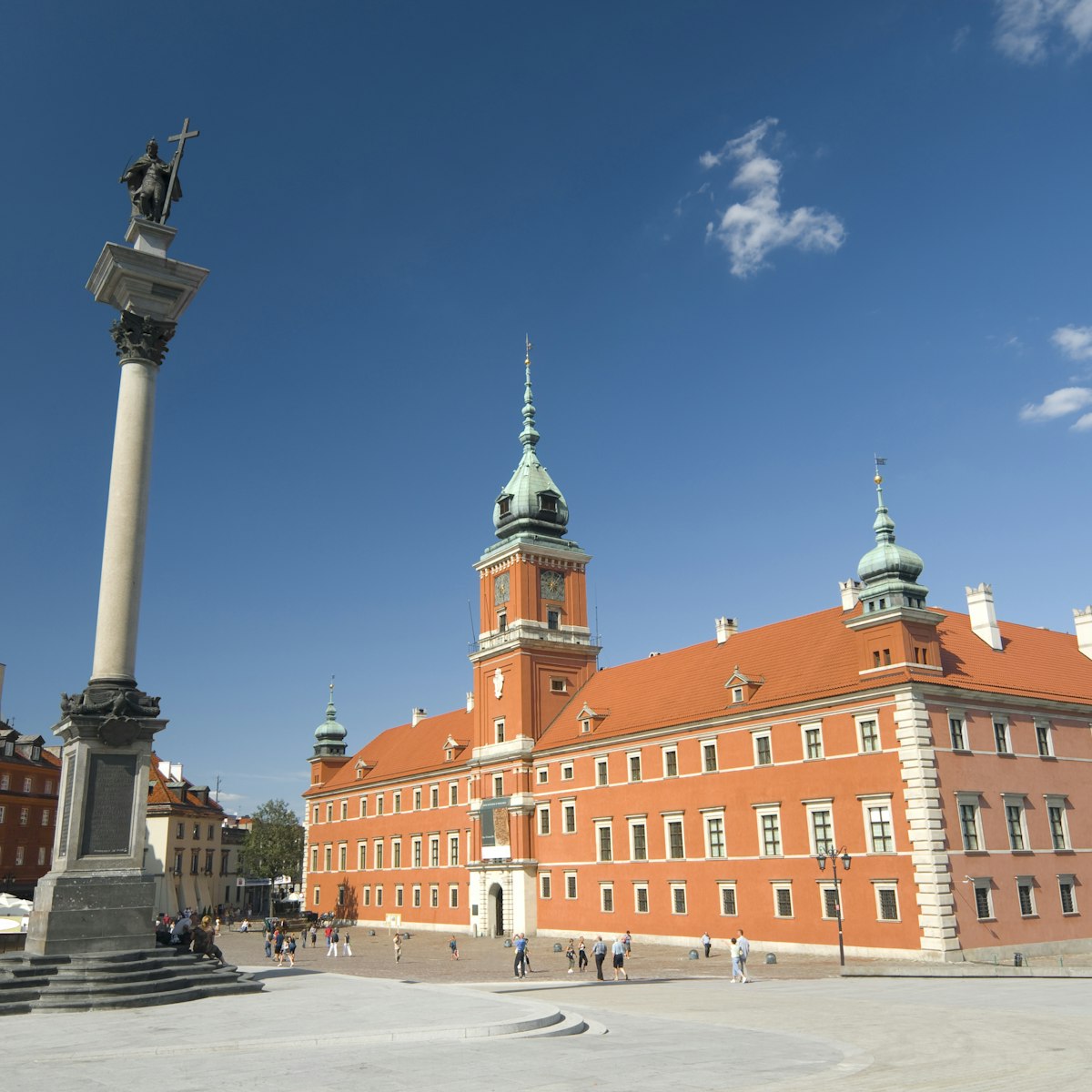
Royal Castle
This remarkable copy of the original castle blown up by the Germans in WWII is filled with authentic period furniture and original works of art…
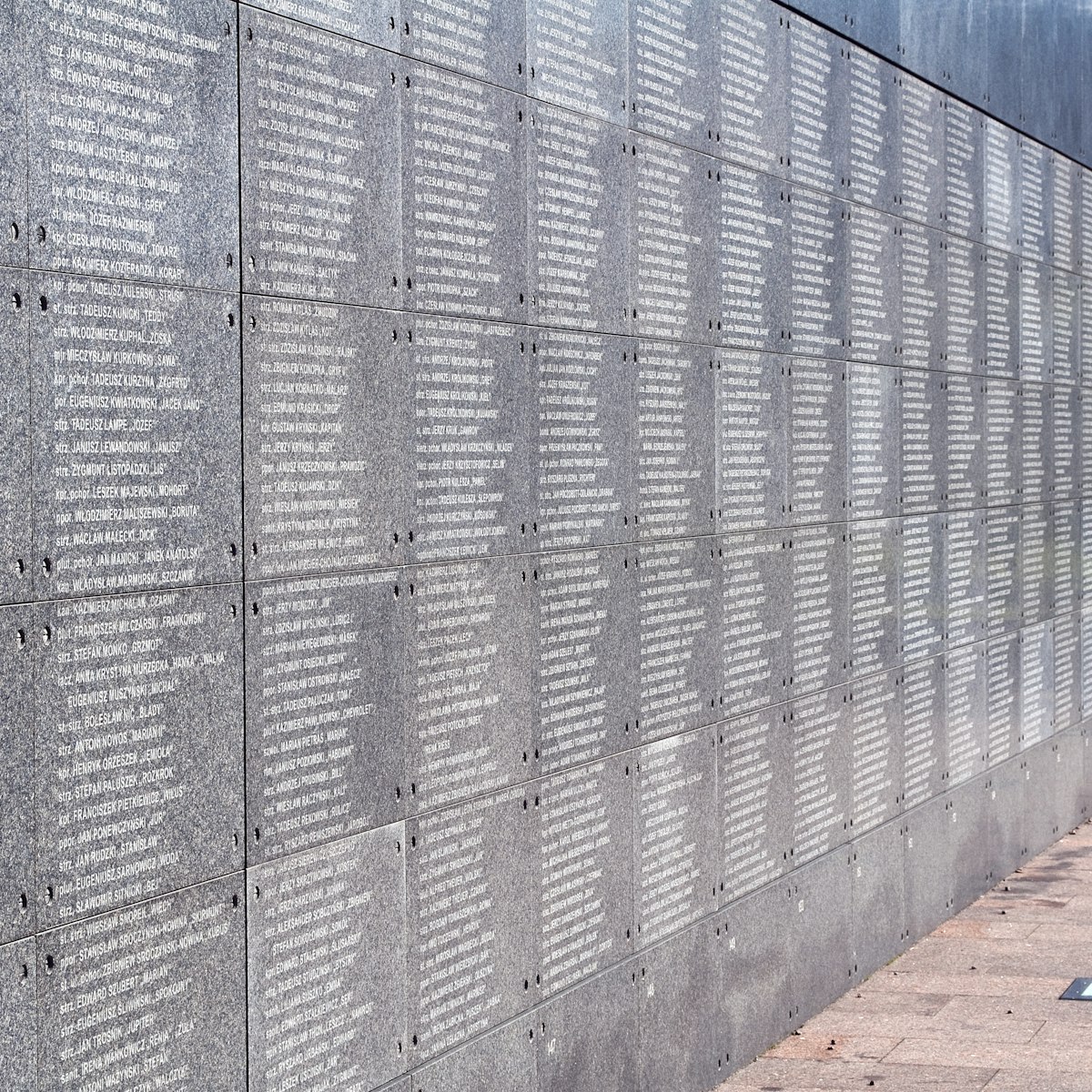
Warsaw Rising Museum
This exceptional museum, housed in a former tram power station and its surrounding grounds, traces the history of the city's heroic but doomed uprising…
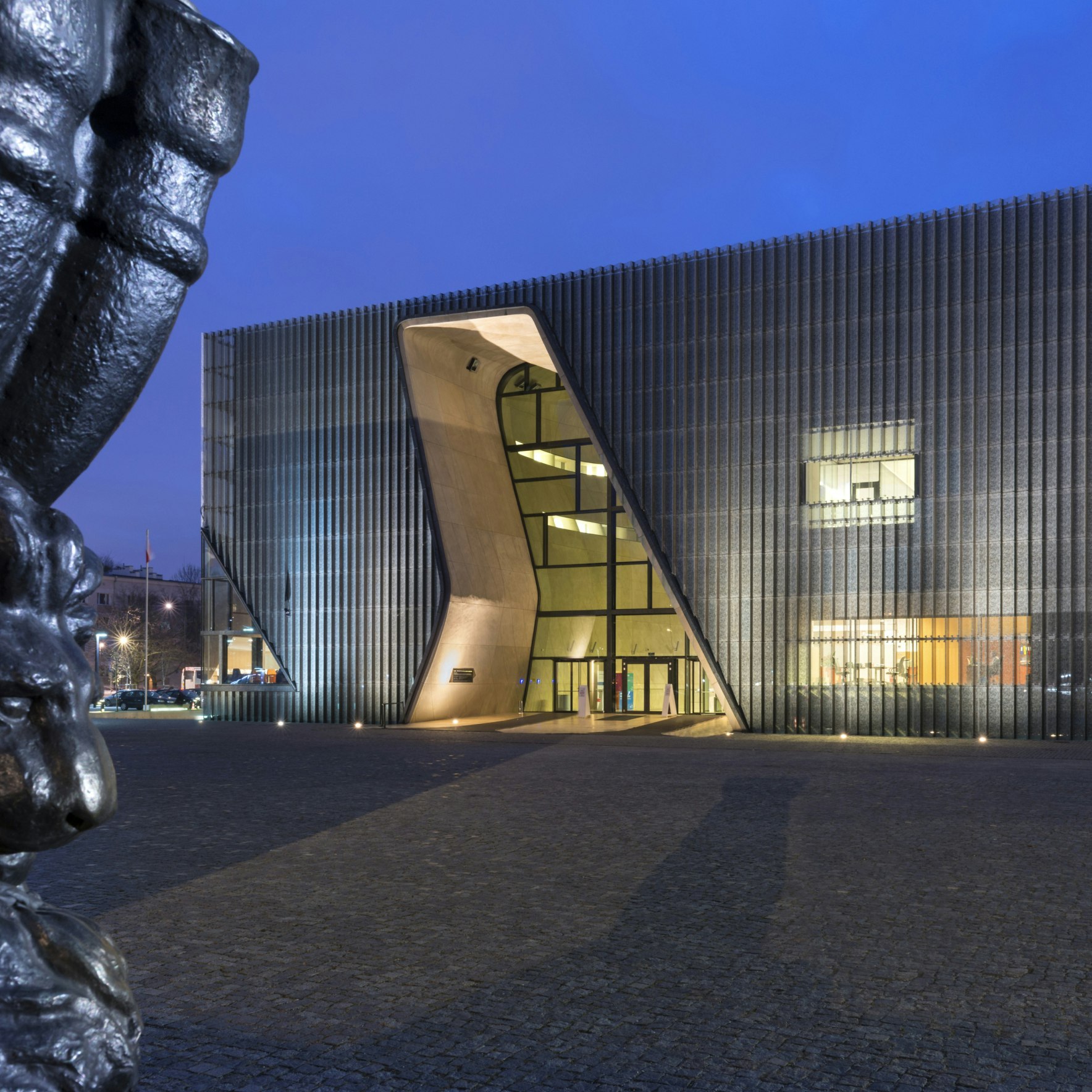
POLIN Museum of the History of Polish Jews
Housed in one of Warsaw's best examples of contemporary architecture, this award-winning museum documents 1000 years of Jewish history in Poland. The…

Copernicus Science Centre
The fully interactive, push-the-buttons-and-see-what-happens Copernicus Science Centre pulls off that tricky feat of being both hugely fun and educational…
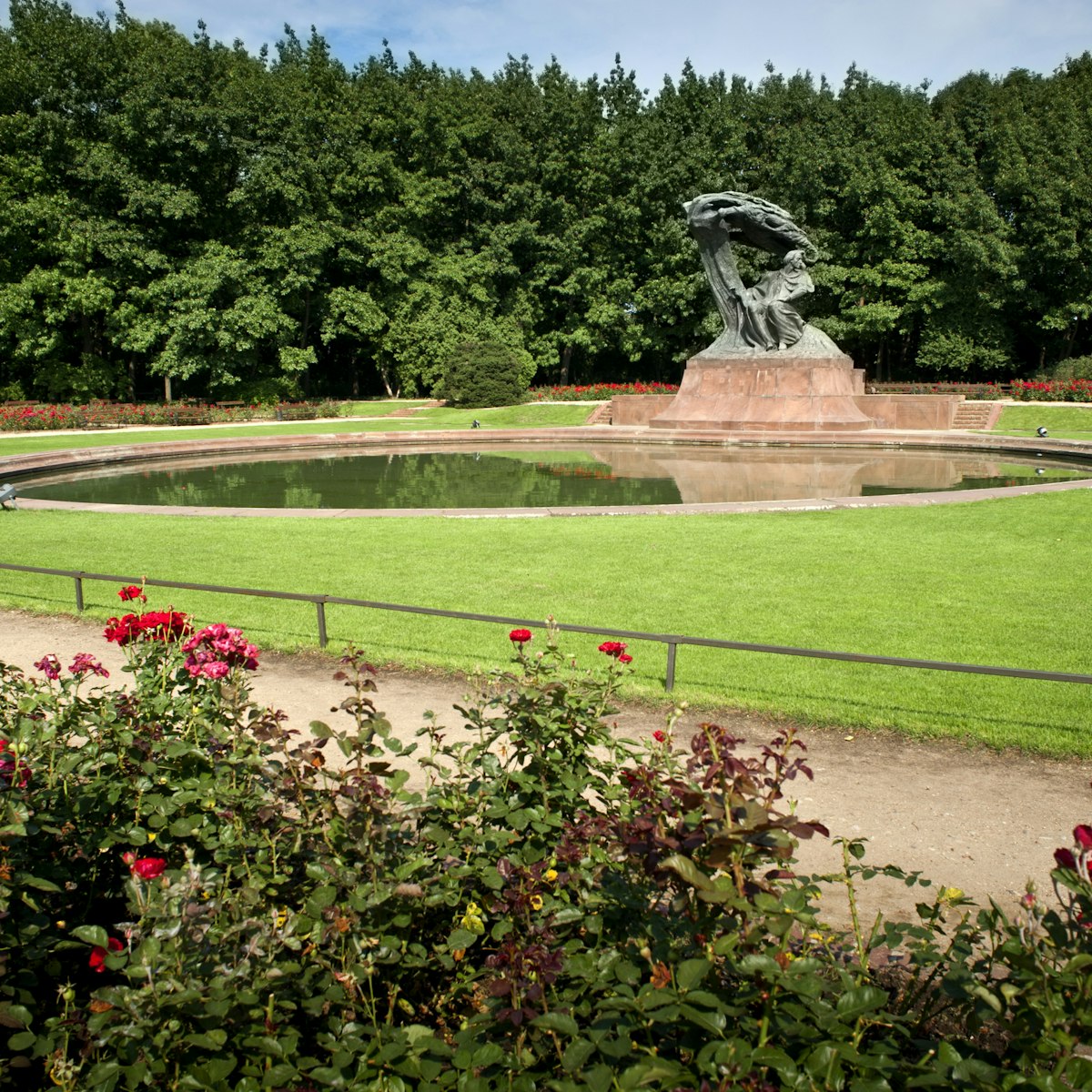
Łazienki Park
Pronounced wah-zhen-kee, this beautiful park includes manicured gardens, an ornamental lake, wooded glades and strutting peacocks. Once a hunting ground,…
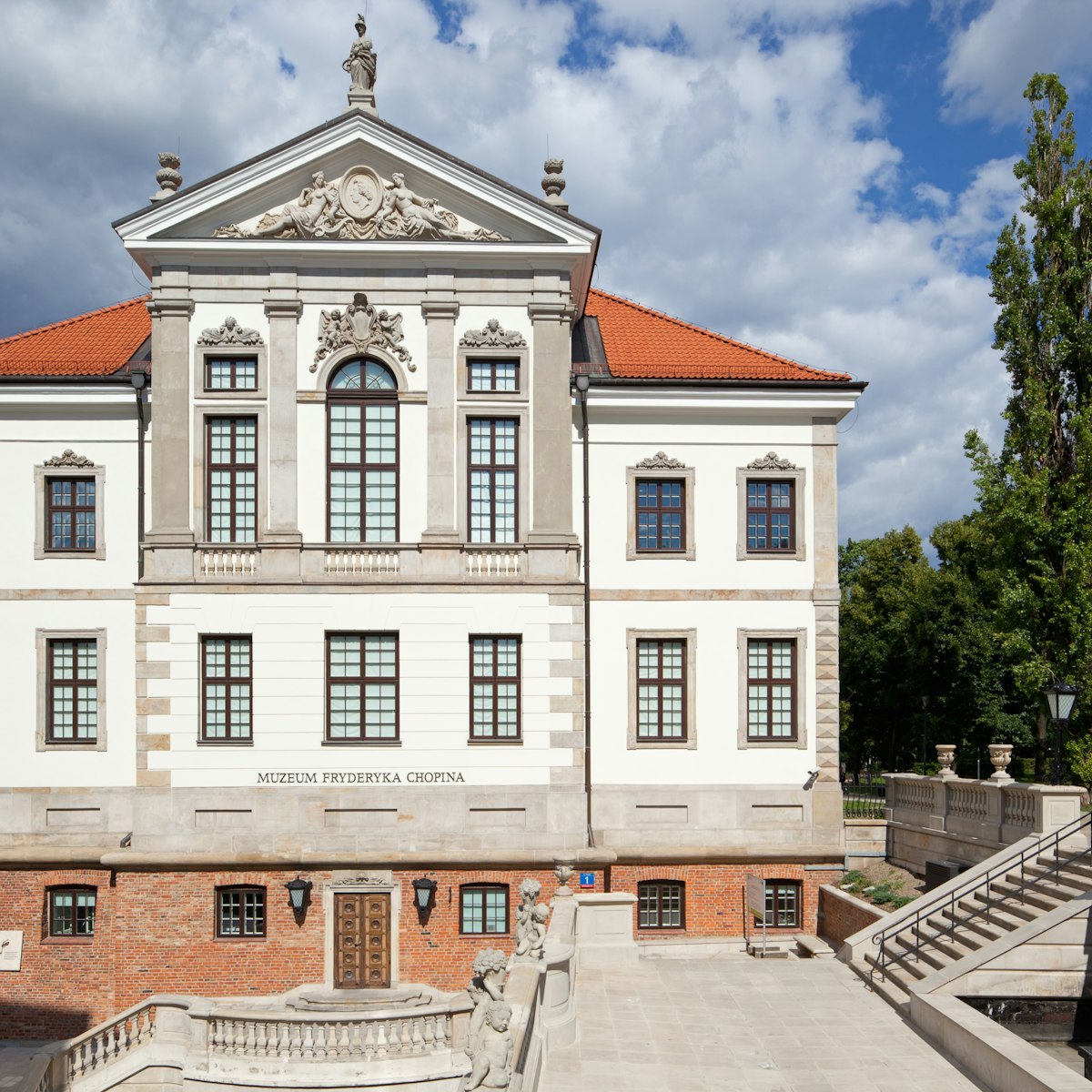
Fryderyk Chopin Museum
This multimedia museum within the baroque Ostrogski Palace showcases the work of Poland’s most famous composer. You’re encouraged to take your time…
Latest stories from Warsaw
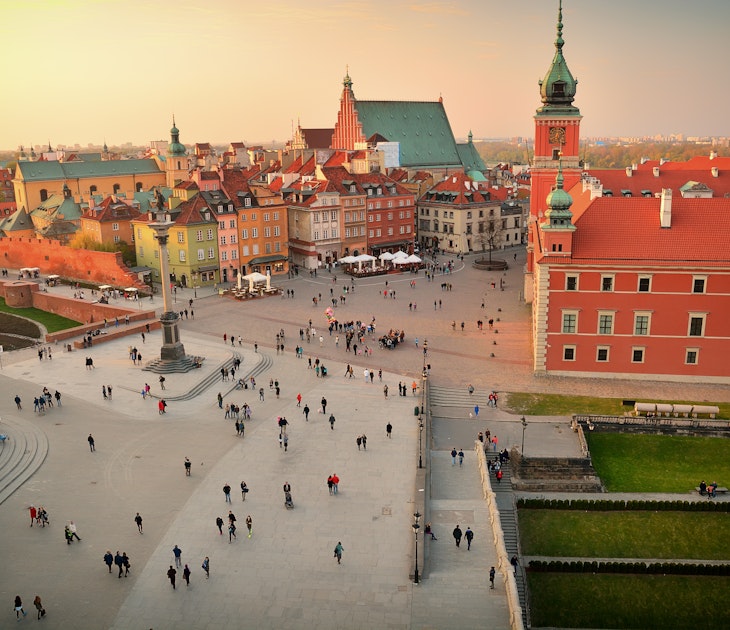
Oct 31, 2019 • 7 min read
A youthful energy in Warsaw is transforming this 700-year-old survivor into an ideal location for a central European city break.
in partnership with getyourguide
Book popular activities in Warsaw
Purchase our award-winning guidebooks.
Get to the heart of Warsaw with one of our in-depth, award-winning guidebooks, covering maps, itineraries, and expert guidance.
- Meet the Team
- Work with Us
- Czech Republic
- Netherlands
- Switzerland
- Scandinavia
- Philippines
- South Korea
- New Zealand
- South Africa
- Budget Travel
- Work & Travel
- The Broke Backpacker Manifesto
- Travel Resources
- How to Travel on $10/day
Home » Europe » Warsaw
10 BEST Places to Visit in Warsaw (2024)
Warsaw was almost destroyed at the end of World War Two, but it has fought back to become a centre for academics, science, and history. Although there are nods to the city’s past all over, it’s a progressive capital firmly anchored in the present with an eye on the future.
This dynamic and resilient city offers everything you could want from a city break. There are in-depth and fascinating museums, a mix of diverse architecture, a vibrant food and drink scene, and plenty of green spaces to relax and disconnect in.
In this post, we’ll take a closer look at the best places to visit in Warsaw. Hopefully, our extensive list will help you to plan your trip to the Polish capital and have an incredible trip!
First, though, let’s take a quick look at some of the best places to stay in Warsaw.
Need a place quick? Here’s the best neighbourhood in Warsaw:
These are the best places to visit in warsaw, faq on the best places to visit in warsaw.
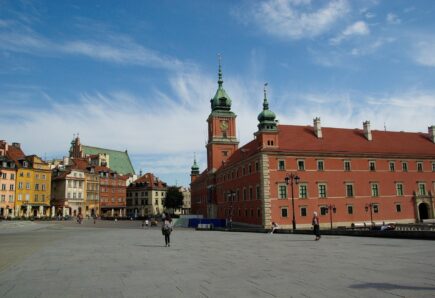
Ironically only about 70 years old, Warsaw’s Old Town is a UNESCO World Heritage Site and the perfect place to stay when you’re visiting for the first time.
- Get a history lesson at the Royal Castle.
- Try some culture at the Adam Mickiewicz Museum Of Literature.
- Try some Polish dishes in one of the many street-side stores.
Warsaw has a variety of different neighbourhoods to choose from when it comes to accommodation. Before you scroll any further down this list, check out where to stay in Warsaw, get the full low-down on the best areas in the city and book yourself a great place to relax!

Unlock Our GREATEST Travel Secrets!
Sign up for our newsletter and get the best travel tips delivered right to your inbox.
#1 – Old Town (Stare Miasto) – A beautiful and scenic place to check out in Warsaw
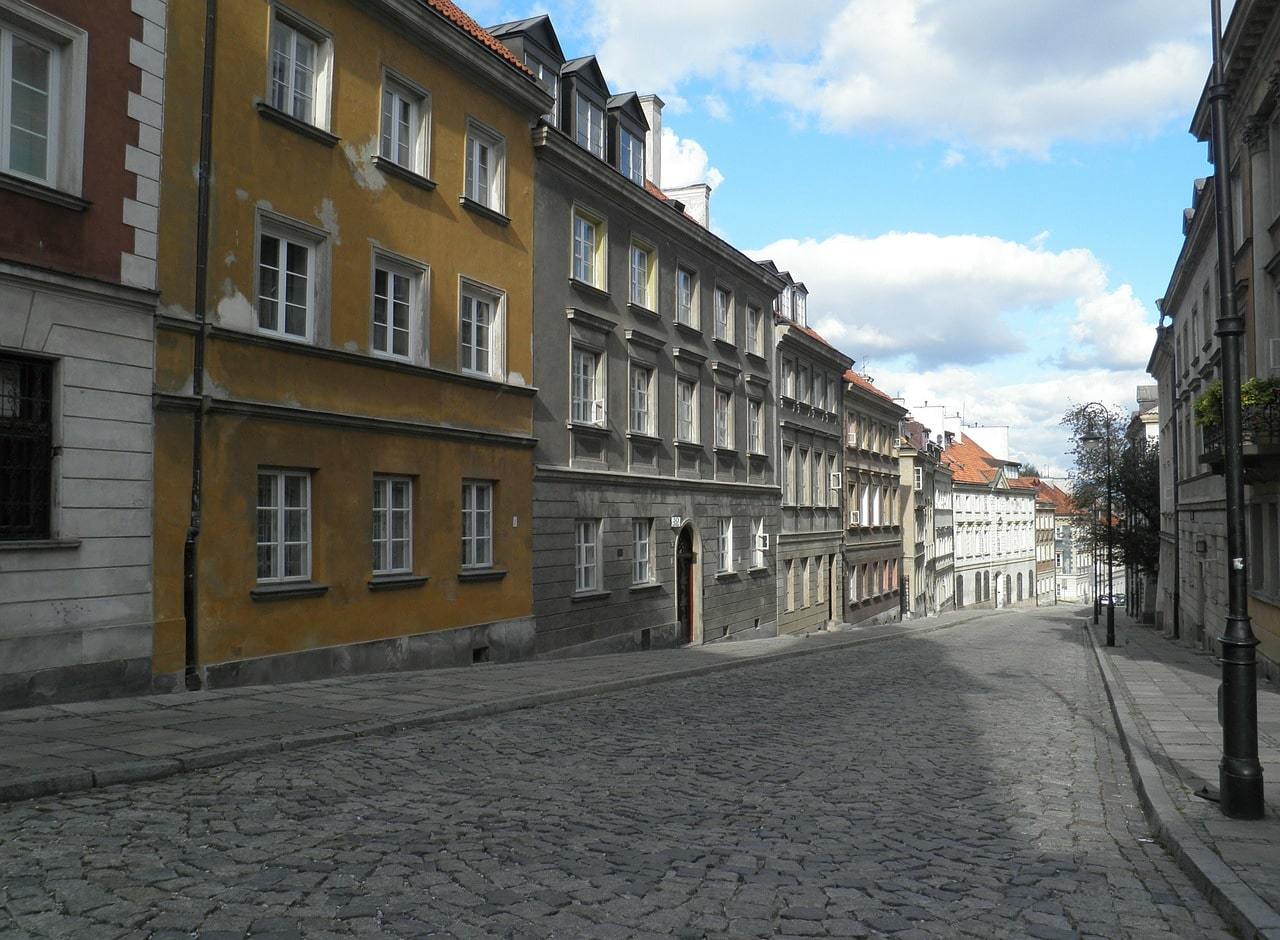
The Broke Backpacker is supported by you . Clicking through our links may earn us a small affiliate commission, and that's what allows us to keep producing free content 🙂 Learn more .
- A UNESCO World Heritage site in the centre of Warsaw
- Wander narrow alleyways that open out onto wide squares and churches
- One of the best places in Warsaw to learn about the city’s past
Why it’s awesome: When walking through the historic centre of Warsaw, you could be forgiven for thinking that these buildings date back to medieval times. However, as the city was razed to the ground during World War II, that’s not quite the case. Almost 90% of Warsaw was destroyed, but it arose like a phoenix from the flames. Nowhere is more emblematic of that than the Old Town. Faithfully and painstakingly reconstructed in 1962, it’s at the top of the list for what to do in Warsaw!
What to do there: Step back in time to get to know the city’s past. Don’t miss St. John’s Arch cathedral, and the triangular Canon square on your jaunt around this cool UNESCO World Heritage site. For a view of the Old Town from above, don’t miss the viewing platform at St Anne’s Church. There are walking tours of the Old Town which will help you learn everything you need to know about it. However, if that sounds like too much hard work, a more fun option is a Segway tour. It’ll be more expensive, but it’ll definitely be a memorable way to explore Warsaw!
#2 – Warsaw Royal Castle – One of the coolest historical sites in Warsaw
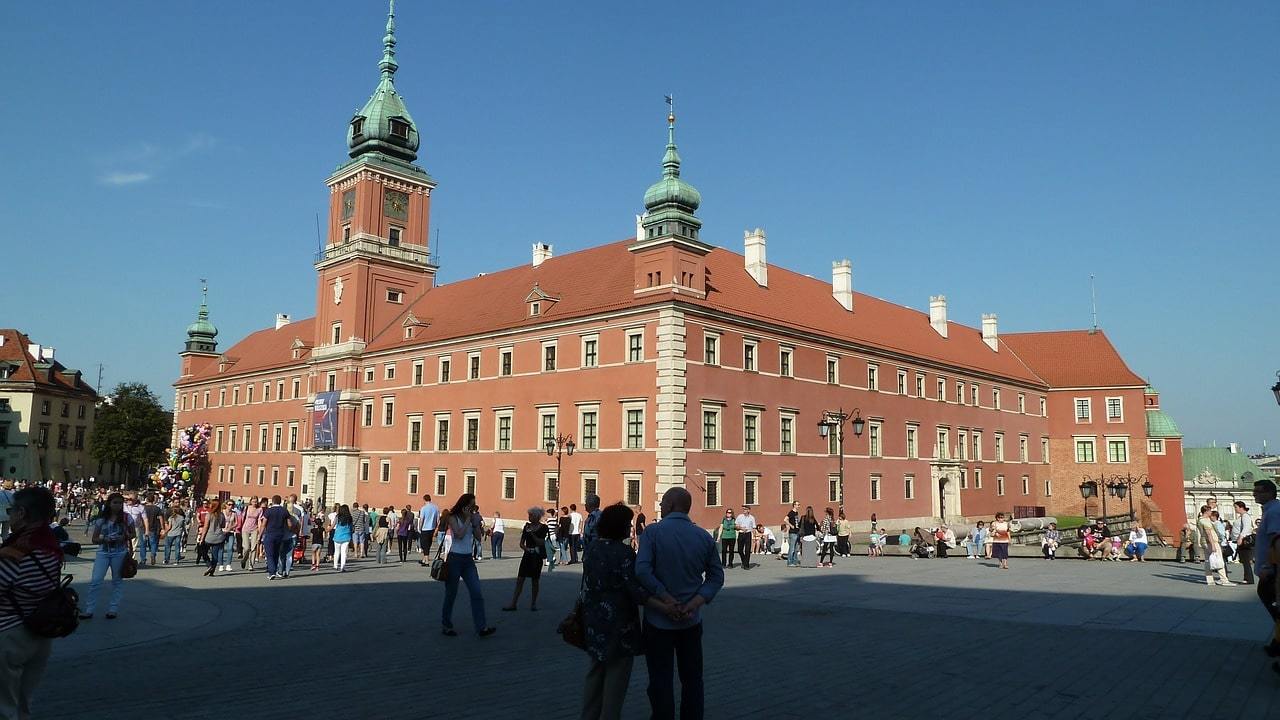
- The residence of Polish royalty between the 16th and 18th centuries
- One of the most important landmarks in Warsaw
- The Royal Route begins here
Why it’s awesome: Like the majority of the Old Town, Warsaw’s Royal Castle was destroyed during the Second World War II. Due to the Communist Regime, this wasn’t rebuilt with the rest of the Old Town though – it had to wait until the 1980s. Since then it has been a museum which houses portraits of Polish Royalty. After all, it was their residence for a couple of hundred years! Castle Square is a great place to get some pictures of the castle and take in some sun. It’s also the beginning of the Royal Route!
What to do there: It’s definitely worth spending a couple of hours in the castle, to find out more about this Warsaw must-see. After you’ve finished, it might be an idea to make a start on the Royal Route. This runs 15km from Castle Square to the south, where you’ll find Wilanów Palace. On the way, you’ll be able to stop off at some of the best places to visit in Warsaw, including ?azienki Park and a number of palaces, churches, and academic institutions!
#3 – Warsaw Uprising Museum – Possibly one of the most important places to visit in Warsaw
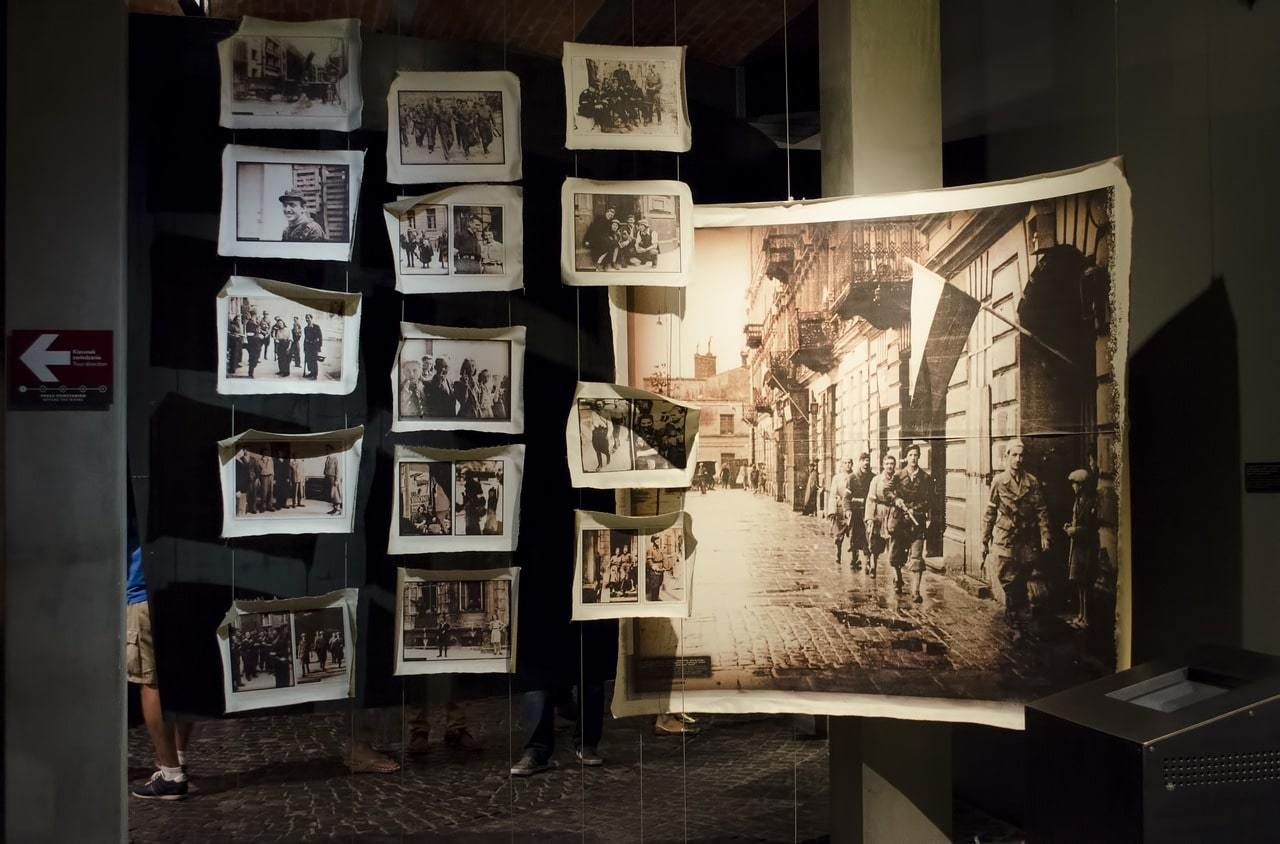
- Use pre-war telephones to listen to memories of those involved in the Uprising
- Watch footage of the Uprising in the museum’s cinema
- An extremely important event in the ending of World War II
Why it’s awesome: One of the most important historical points of interest in Warsaw, this fascinating museum documents the 1944 Warsaw Uprising, a key event in the closing stages of World War II. Rather than being just lots of exhibits with texts, there’s a range of multimedia used to make the story of the Uprising come alive. It’s actually modelled on the Holocaust Memorial Museum in Washington DC.
What to do there: If you want to learn more about the Warsaw Uprising, there’s no better place to do it than here. Read newspapers printed at the time of the event or even check out the bunkers where people hid. There are also opportunities to listen to actual messages recorded by insurgents on old telephone receivers or watch footage from the event at the Kino Palladium cinema installation. Just make sure that you don’t plan to travel to Warsaw’s Uprising Museum on a Tuesday. It’s closed!
#4 – Palace of Culture and Science
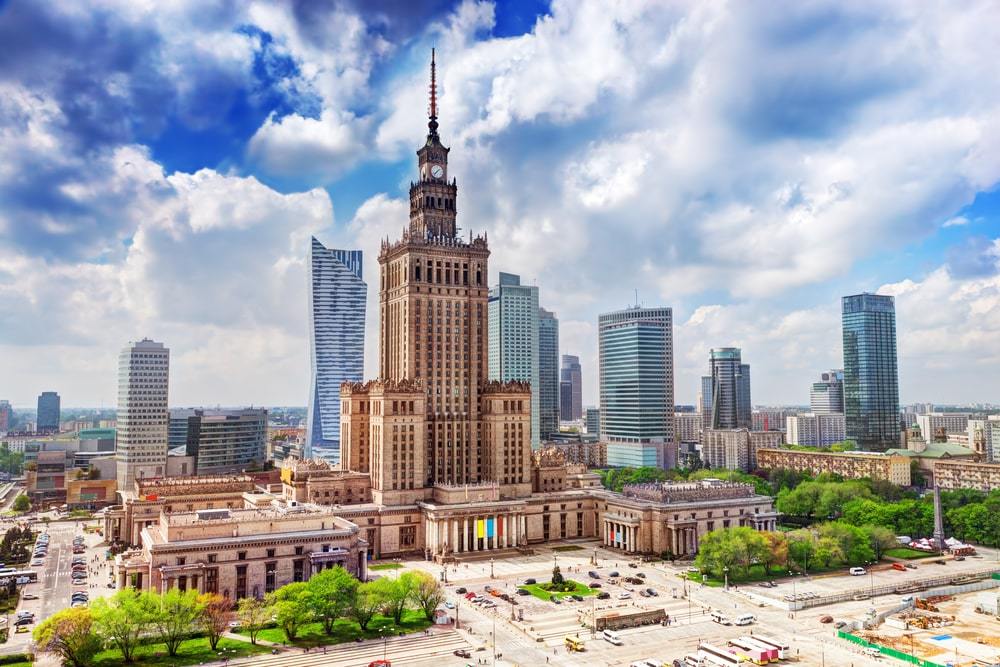
- The tallest building in Poland
- One of the most recognisable landmarks in Warsaw
- One of the best places in Warsaw to get panoramic photos
Why it’s awesome: This striking building splits opinion in the way only Marmite can, and you can see it from pretty much anywhere in Warsaw. At 237 metres, it’s the tallest building in Poland and across its 42 floors, you’ll find four theatres, two museums, and a multi-screen cinema. And those are just the parts you can actually go in! There are also government offices and private companies based in the building. There’s enough space, trust us! A lot of Poles dislike this building. Not for how it looks, but because it was a ‘gift’ from the Soviet Union in 1955.
What to do there: Whatever your feeling on Stalinist architecture, you can’t deny that this building is imposing and striking. There are plenty of cultural activities that we’ve mentioned above, and going to the theatre, museum, or cinema is definitely an option while you’re here. However, there’s one Warsaw must do in this enormous building. And that’s heading to the observation deck. You’ll be able to get jaw-dropping views and photos from the 30th floor!
#5 – Lazienki Park – A beautiful outdoor place to visit in Warsaw
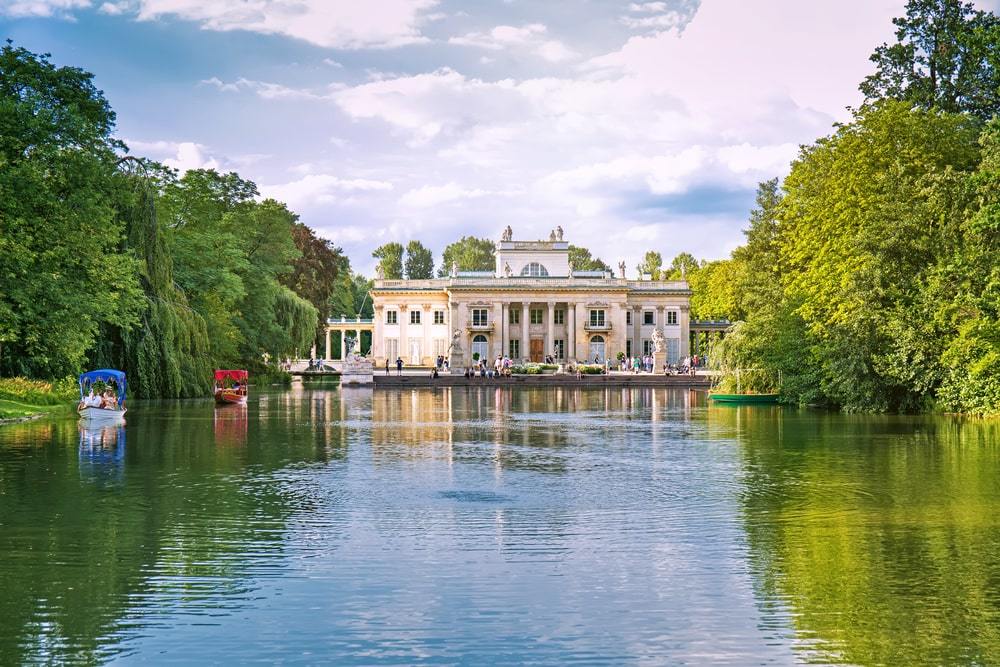
- The largest park in Warsaw and a key part of the Royal Route
- Loved by local families and tourists alike
- Don’t miss the beautiful palace on an artificial island in the middle of a lake
Why it’s awesome: Ask any Warsaw local where they’d go on a sunny day in the city and the chances are their response will be Lazienki Park. So, you may as well follow their advice! This leafy park is the largest one in the Polish capital and covers over 76 hectares. The paths which criss-cross the park lead to museums, palaces, pavilions, and even a planetarium among many other cool places. This is one of the best places in Warsaw to relax and enjoy an entire day in nature. Without leaving the city!
What to do there: Strolling through this ideal park is what to do in Warsaw whether you’re travelling solo, with friends, or on a romantic break. Check out one of the four museums in the park, or head to the Lazienki Palace. The classical Palace sits on an artificial island in the middle of a lake, but you can enter to see the lavishly decorated rooms and galleries. In summer, there are often concerts in the park. Just look for the Frederic Chopin statue!
#6 – Tomb of the Unknown Soldier
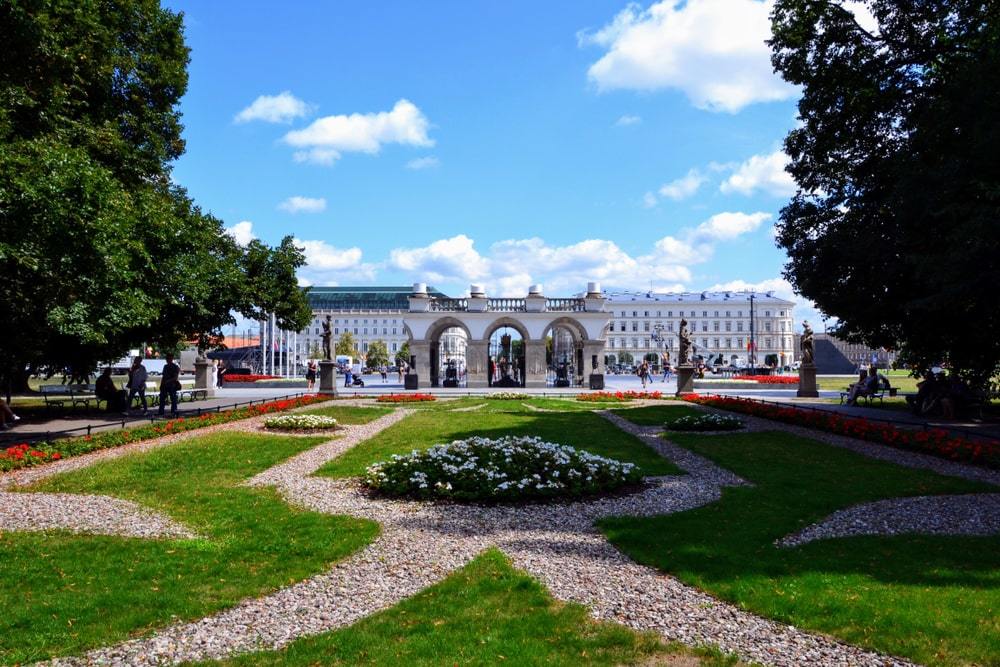
- A monument to the unidentified soldiers who have passed away in battle
- Watch the changing of the guard on the hour every hour
- See the eternal flame – it’s one of the most poignant landmarks in Warsaw
Why it’s awesome: The Saxon Palace was destroyed in the Warsaw Uprising of 1944, but part of it still survives here. Yes, that’s where the 3 arches of the Tomb of the Unknown Soldier are from. This isn’t a monument to just one soldier, but rather all those who have died fighting for Poland. You can find this small and moving monument in Pi?sudski Square. This is a Warsaw must-see if you’re interested in military history , or you want to spend some time in a quiet and peaceful spot.
What to do there: Try and be at the memorial on the hour. It doesn’t matter which hour, as the guard is changed 365 days a year on the hour every hour. No exceptions – not even on Christmas Day! A great time to visit this memorial is on the 15th of August. This square, and the monument, in particular, are the centrepiece of the remembrance ceremonies for Polish Armed Forces Day. The Eternal Flame burning under the arches is a poignant memorial to those who have passed away fighting for their country.

A new country, a new contract, a new piece of plastic – booooring. Instead, buy an eSIM!
An eSIM works just like an app: you buy it, you download it, and BOOM! You’re connected the minute you land. It’s that easy.
Is your phone eSIM ready? Read about how e-Sims work or click below to see one of the top eSIM providers on the market and ditch the plastic .
#7 – Copernicus Science Centre
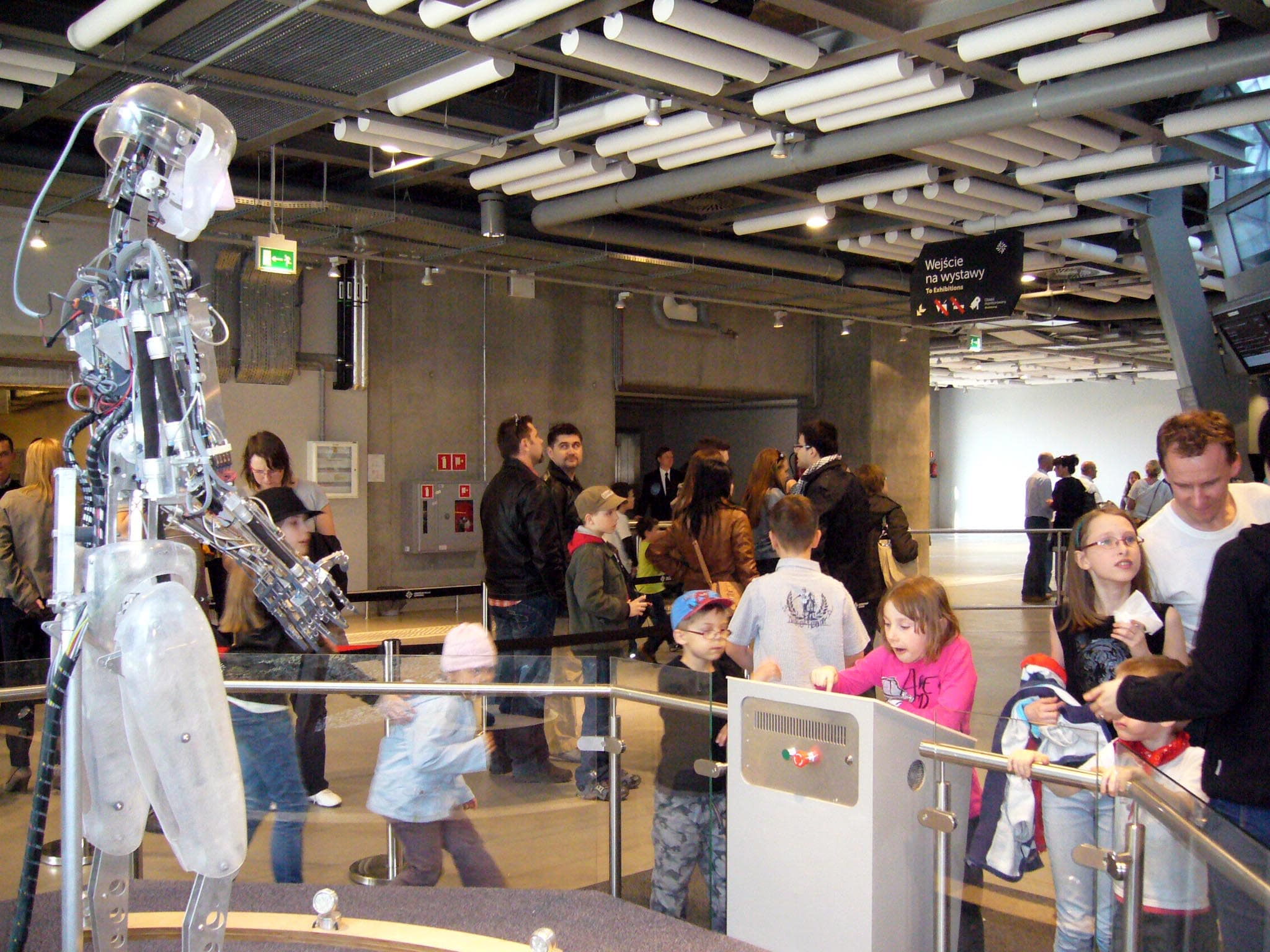
- More than 400 interactive exhibits across 6 zones
- One of the newest and most modern attractions in Warsaw
- Experience the tremors of the museum’s earthquake simulator!
Why it’s awesome: Even if you’re not interested in science in the slightest, Copernicus Science Centre should definitely make it onto your Warsaw itinerary. This might just be not only one of the best learning hotspots in Warsaw but the whole of Europe! Opened in 2010, there are more than 400 interactive exhibits at this museum. They’re spread across six zones, so whether you’re interested in animals, humans and the environment, even natural disaster, you’ll surely find something to pique your interest here.
What to do there: For adrenaline seekers, this museum proves you don’t have to go bungee jumping or sky diving. No, here you can enjoy (maybe that’s not the right word) the feeling of being caught up in an earthquake! If biology is more your thing, check out the installation of a human skeleton riding a bicycle. It’s quite cool seeing how all those bones and joints work! And, if something more relaxing is right up your street, settle back into one of the comfy chairs in the planetarium. Not only are there shows about the universe, but humans and nature too, all accompanied by a fantastic surround sound system. This is a must-visit when you explore Warsaw!
#8 – POLIN – Museum of the History of Polish Jews – A fascinating educational place to visit in Warsaw
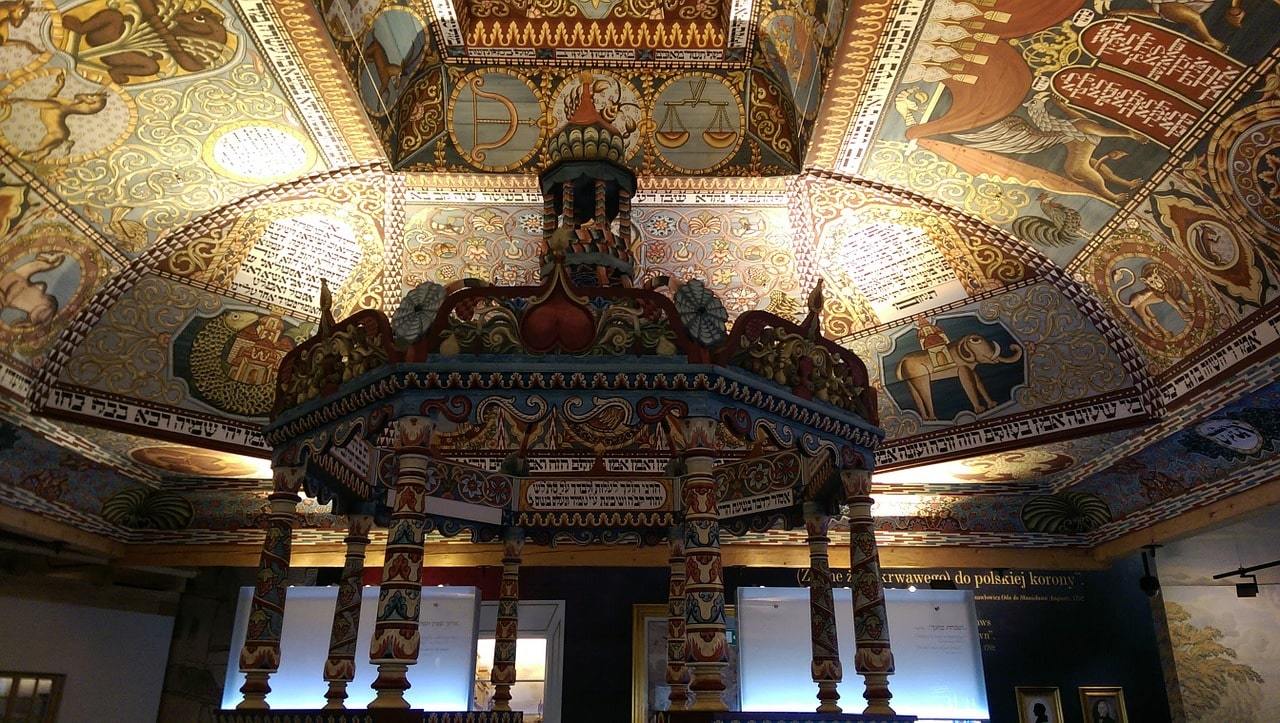
- Learn about the 1,000-year history of Jews in Poland
- Located in the heart of the former ghetto in Muranów
- One of the best places in Warsaw to feel moved and educated at the same time
Why it’s awesome: POLIN opened in 2014 after being in the making for seven years, making it even newer than the Copernicus Science Centre. Poland has long been home to Europe’s largest Jewish community, and this museum commemorates the highs and lows of this history across eight galleries. Obviously, it’s unavoidable visiting this museum without taking the Holocaust into account. Although it was undeniably a terrible event, there are stories about heroes and people saved from such a dreadful fate in the Warsaw ghetto.
What to do there: There are plenty of interesting exhibits to view at POLIN. Although we’ve mentioned the sobering and chilling Holocaust display, there are some genuinely uplifting and enjoyable parts to the museum too. There’s a prayer book that dates all the way back to 1272, a fascinating and intriguing artefact. There’s also an entire exhibit dedicated to the 16th and 17th centuries – known as the golden age of religious tolerance! Whatever you take from the POLIN museum, it’s an unmissable point of interest in Warsaw. A guided tour is a great way to see it if you’re unsure where to start
#9 – Chopin Museum
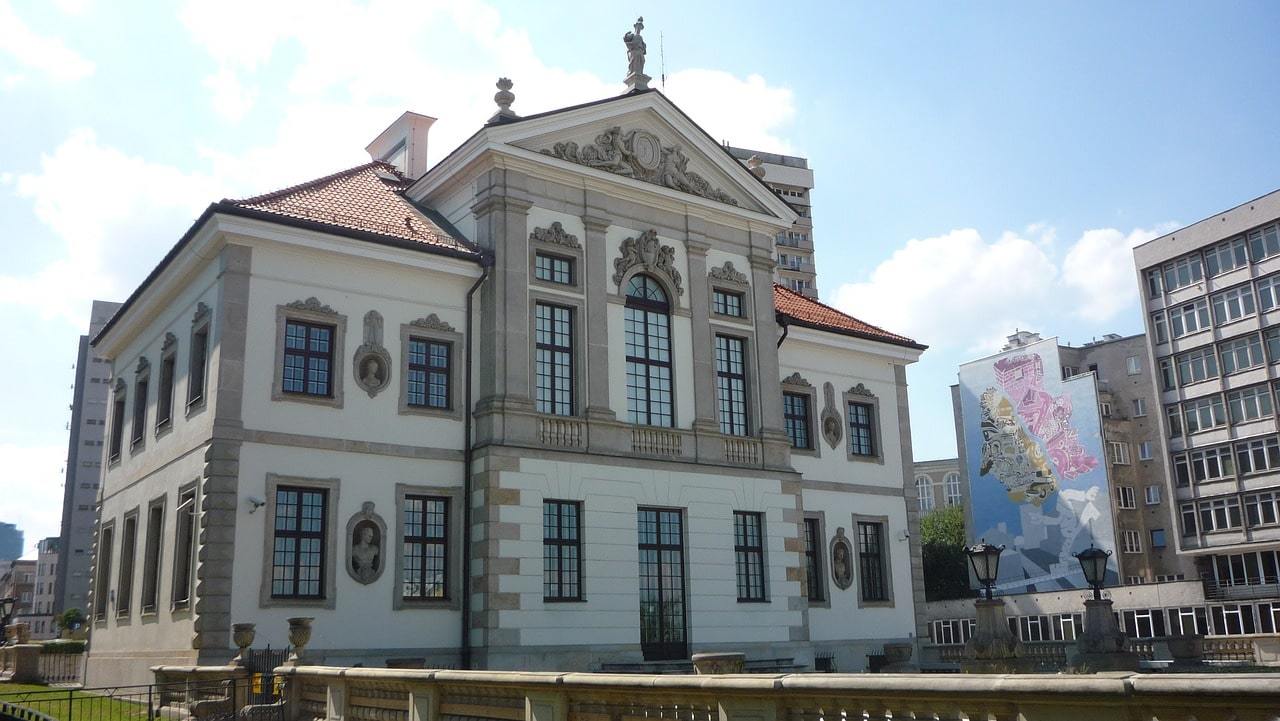
- Learn about one of Warsaw (and Poland’s) most famous historic figures
- Find curious exhibits dedicated to Chopin all across the city
- Great Warsaw vacation ideas for music lovers
Why it’s awesome: The museum refers to Chopin as a 19th-century answer to Sir Elton John. While we’re not sure we’d describe him in that way, learning more about one of the city’s most famous historical figures is a Warsaw must do. The museum of Chopin’s life is housed in a 17th-century palace but it’s packed with cool interactive exhibits that will keep even the surliest teenagers intrigued. You’ll learn more about the composer’s life. For example, did you know that he actually came from a farm estate in the east of the city, before going on to becoming respected and revered in Paris?!
What to do there: The museum is a great place to learn about the life of Frederic Chopin. However, it’s not the only place that you’ll feel his presence. While you’re visiting Warsaw, keep an eye out for the Chopin benches too. These special benches are dotted around the city and play the great composer’s music as you sit on them! There’s also a monument to Chopin in ?azienki Park that becomes a concert venue in the summer, while churches often host evening performances of the composer’s music. Warsaw is a great place to be if you love classical music!
#10 – Keret House – An unknown (but awesome) place to see in Warsaw!
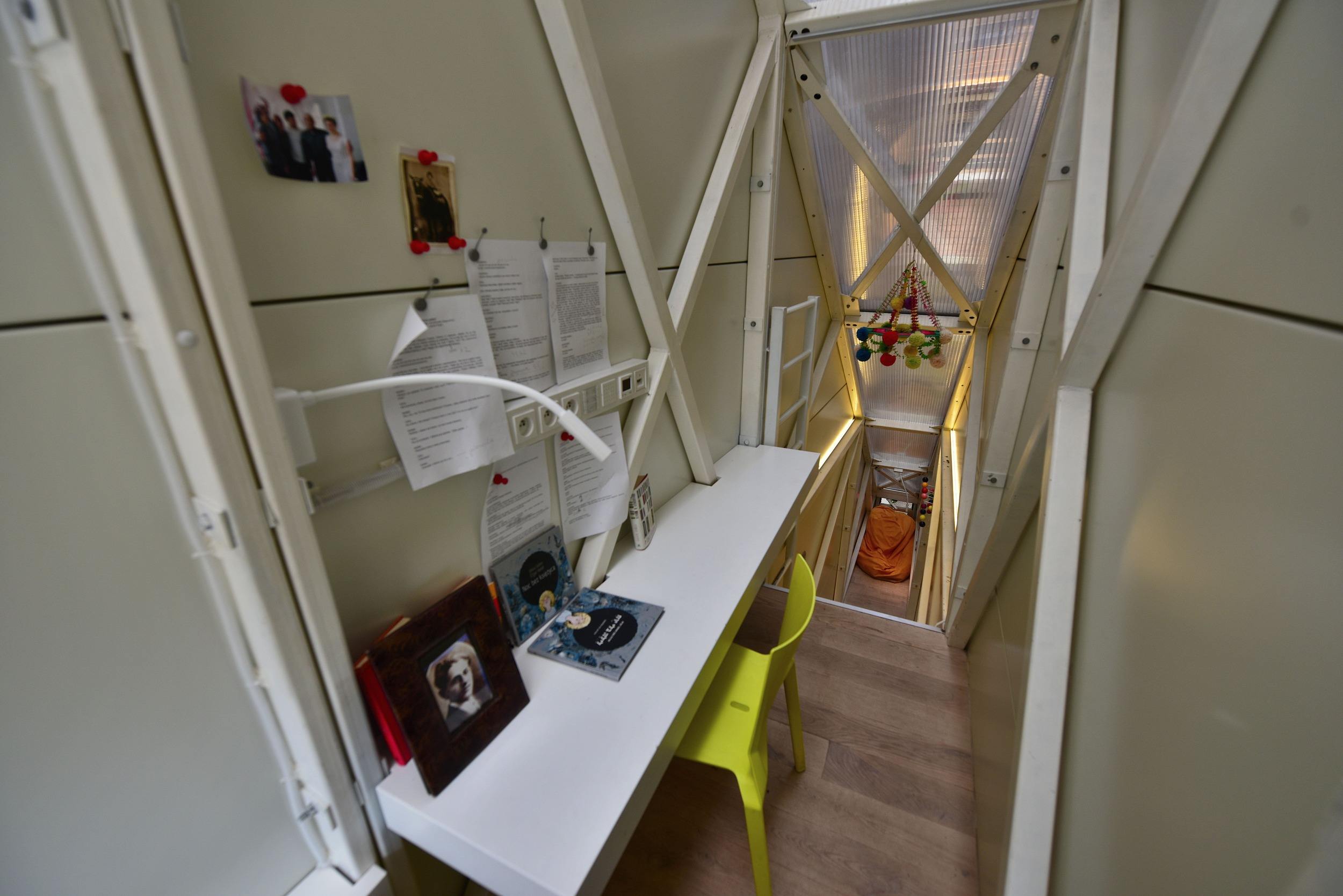
- The narrowest house in the world
- One of the more unusual things to do in Warsaw
- Open to all who visit Warsaw
Why it’s awesome: There are some pretty cool museums and royal attractions in Warsaw, but sometimes you just want something a bit quirky and unusual. Okay then, let us present to you the Keret House! It may be over 30 foot tall, but at its widest, it’s not more than 4 feet wide. In fact, at its narrowest point, it’s just over 2! The house is too narrow to be classed as a house as it doesn’t mean minimum requirements, so instead, it’s an art exhibition.
What to do there: Although people have lived in this house in the past, it’s not a private residence anymore. Nowadays, it’s open to visitors, although you might bump into each other on the ladders that connect the floors! If you’re a travel writer, you’re able to book a night’s stay in the house. This could be a great opportunity to have an authentic, off the beaten track experience. It’s certainly one of the most unusual things to do in Warsaw!
Get insured for your trip to Warsaw!
ALWAYS sort out your backpacker insurance before your trip. There’s plenty to choose from in that department, but a good place to start is Safety Wing .
They offer month-to-month payments, no lock-in contracts, and require absolutely no itineraries: that’s the exact kind of insurance long-term travellers and digital nomads need.

SafetyWing is cheap, easy, and admin-free: just sign up lickety-split so you can get back to it!
Click the button below to learn more about SafetyWing’s setup or read our insider review for the full tasty scoop.
Find out what people want to know about the best places to visit in Warsaw
What should I not miss in Warsaw?
A visit to the Warsaw Royal Castle is one of the most important and beautiful historical sites in the city and can’t be missed.
What are some fun places to visit in Warsaw?
Call by the quirky ‘Keret House’, the worlds narrowest house! Why? Well, why the hell not!?
What are the best free things to do in Warsaw?
Wandering the fairytale streets of the Old Town (Stare Miasto) is a great way to immerse yourself in the city and it’s totally free.
What are the best things to do in Warsaw in winter?
Head indoors and learn about the 1000 year history and stories of the Jewish citizens of the country at the Museum of the History of Polish Jews.
Final Thoughts
So, that’s all from us on our list of the best places to visit in Warsaw. Hopefully, you’ll see from our extensive list that this is a dynamic and diverse city with plenty to do! And, you’ll have an idea of the best places to stay in Warsaw too.
Whatever you want from a city break, you’ll find it when you travel to Warsaw. The museums and galleries are some of the best in Poland, showing the history of this fascinating country. The restaurants offer a mix of international food and local delicacies, and the nightlife scene can compete with any European capital!
Hopefully, our list of the best places to visit in Warsaw will have not only showed you the city’s best attractions but also given you a bit of an idea of how the locals live. With everything in mind from our list, all that’s left is for us to wish you an amazing vacation when you’re visiting Warsaw!

Agness and Cez
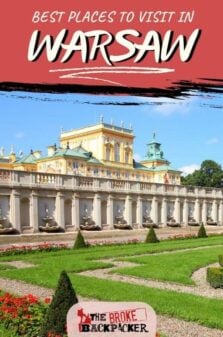
Share or save this post

Leave a Reply Cancel reply
Your email address will not be published. Required fields are marked *
Save my name, email, and website in this browser for the next time I comment.
Notify me of followup comments via e-mail.
70 Fun & Unusual Things to Do in Warsaw, Poland

- 11 Pinterest
The bustling, built-up, beautiful capital of Poland, Warsaw is truly a city of contrasts. It has modern business districts, yet remains deeply traditional with its historical architecture and monuments. It’s cosmopolitan, but also home to many charming cobbled streets that are perfect for exploring and people-watching. It’s refreshing and green, but also full of energy with amazing — scratch that, wild — nightlife.
This is the kind of place where you can spend one day immersed in centuries-old architecture, and the next diving into art and science at some amazing museums.
Or absorb some history as you retrace the steps of some of the city’s most famous residents, from Chopin and Copernicus to Marie Curie.
And if you venture a little bit outside of town, you will find everything from somber historical sites and palatial residences to waterparks and outdoor adventures.
As you’ll quickly discover, whether you’re an art aficionado or a beer-drinker, a museum-goer (add Wilanów Palace to the list), or an adventure enthusiast (check out Rope Park), the collection of exciting things to do in Warsaw never ends!
1 – Kickstart your trip with a tour through Old Town

A quintessential destination for any visitor to the city , old or young, the famous Warsaw neighborhood of Old Town was inscribed on the UNESCO World Heritage List in 1980 and has been welcoming travelers ever since (and long before, in fact).
Depending on your preference, you can walk, bike , scooter , or segway your way through the narrow cobbled streets and marvel at architecture dating back to the 13th Century.
Camera at the ready, because highlights include the baroque style Cathedral of John the Baptist and the famous Sigmund’s Column located in Castle Square, the former home of the Polish monarchy.
After checking off all the historic sites, the area boasts no shortage of good restaurants and cocktail bars ideal for people-watching!
- Old Town tours
2 – Gaze at the monuments of Łazienki Park

Łazienki Królewskie (otherwise known as Royal Baths Park to travelers) is the beloved site of a bathhouse used by 17th-century Polish nobleman Stanisław Lubomirski — and many famous and non-famous folk since.
These days, you can now roam the grounds and take in the breathtaking art and architecture like Lubomirski’s magnificent Palace of the Isle (Pałac Łazienkowski) or the impressive bronze monument of Frédéric Chopin.
Before you leave, be sure to also check out the Zamek Ujazdowski Center for Contemporary Art (the Zamek Ujazdowski building itself is actually a castle) and the Royal Łazienki Museum.
3 – Climb to the observation deck of St. Anna’s Taras Widokowy

A short walk up to the historic bell tower of the Church of St. Anna brings you to its famous “ Taras Widokowy ”, or observation deck. Here, you can take in breathtaking panoramic views of the city and its ever-lively crisscrossing streets below.
Depending on the time and day, the crowds may lengthen your wait time, but visitors agree it’s well worth the 150-step stair climb to get a bird’s eye view of Old Town!
4 – Celebrate the cause at the Warsaw Uprising Museum

In August of 1944, Poles launched an insurrection attempt to seize back control of Warsaw from the Nazi army. The Uprising Museum was opened sixty years later to commemorate the events.
During visits to this moving, powerful museum, guests are guided through the stages of the Uprising with over 800 exhibit items, approximately 1,500 photographs, and films and sound recordings spanning over 32,000 square feet.
- Warsaw Uprising Museum tickets
5 – Visit the Museum at Wilanów Palace

A unique insight into local culture and history, Polish patriotism and tradition are celebrated at Wilanów Palace , a former residence of the revered Polish monarch King Jan III.
Opened originally way back in 1805, it’s one of the oldest museums in the nation, displaying a riveting collection of Royal valuables and collected artworks dating back centuries.
Hot tip: The museum is free of charge on Thursdays, but securing a ticket ahead of time is still recommended.
6 – Defend the city at Warsaw Barbican

A postcard-worthy attraction in every sense of the term, The Warsaw Barbican is one of few remaining relics of the complex network of historic fortifications that once encircled Warsaw.
Designed and built by an Italian Renaissance architect in the year 1540, the 4-tower barbican fortress was instrumental in a major redesign of the city’s 14th century barricade walls.
Today, on self-guided or locally-led tours, visitors can get a real sense of what the palatial city perimeter once looked like.
Directions on Google Maps
7 – Explore the POLIN Museum of the History of Polish Jews

One of the essential things to do in Warsaw, this museum celebrates 1,000 years of the history of Polish Jews, whose contributions to Polish life and culture are seemingly endless.
Curious guests can immerse themselves in this important story through a dazzling arrangement of eight galleries packed with artifacts, paintings and interactive installations — all combined, it’s guaranteed to quench your thirst for local historic knowledge.
- POLIN Museum tickets
8 – Take a hop-on hop-off bus tour!

Whether you’re feeling lazy or just efficient, why walk when you can hop on or off a double-decker bus that brings you to every major tourist hot spot in the city?
With tour bus passes that last 24, 48, or 72 hours, you can spend as much time as you want at any of the near-dozen major sights including Warsaw City Hall, the Church of Artists, the Chopin Museum, and Bank Square.
- bus tours in Warsaw
9 – Behold the mighty Modlin Fortress

If you’re looking for truly impressive things to do in Warsaw, take in the monumental structure that is Modlin Fortress.
Just over 30 miles north of Warsaw proper, this towering fortification was built by the French between 1806 and 1812 on the orders of none other than the one and only Napoleon Bonaparte.
Once you find your way there by hiking through a forest (note: wear comfy shoes), you can imagine yourself as royalty within your very own grand fortress and admire spectacular views of the Narew river and its enchanting surrounding woodlands.
10 – Take in a concert at Multimedia Fountain Park

Touted as one of “the most important tourist attractions in Warsaw,” Multimedia Fountain Park features two spectacular water fountains from which up to 30,000 liters of water per minute are poured out through 367 nozzles; a sight made even more dazzling at night when lit with 295 LED floodlights — as you can tell, there’s a lot of moving parts here, combining for one seriously impressive choreographed display.
Moreover, the park serves as a venue for concerts, live shows, and exhibits from May through September every year!
11 – Support a local small business at Rynek Starego Miasta

At the center of one the oldest part of Old Town, you’ll find the charming Old Town Marketplace.
With every step, you’ll feel as though you’ve been transported back in time — as the area is not only packed with local street vendors, cafes, shops, art galleries, and restaurants but is also surrounded by gorgeous seventeenth and eighteenth-century late-Renaissance and Baroque-style merchant homes.
For the ultimate in-depth experience, walking tours are also available.
- walking tours in Warsaw
12 – Check out the impressive Palace of Culture and Science

With a towering height of 778 feet, this grand art deco building holds the claim to fame of being the second tallest in Poland and one of the tallest buildings in all of Europe.
The colossal structure houses offices, movie theatres, restaurants, conference and concert halls, and even a swimming pool; meanwhile, beautiful marble and mosaics decorate the interior.
Hot tip: Climb to the 30th-floor terrace to behold some truly spectacular panoramic views of the entire city.
- Palace of Culture and Science tours
13 – Test your wits and logic in an escape room

Consider yourself somewhat of a next-generation Sherlock Holmes? Then prove it.
Fun for a romantic couple or even a family with kids, Quest Hunt Escape Games is one of Warsaw’s fine escape room venues, where groups of two to five people work together to decipher clues and solve puzzles in one of several themed challenges.
So, will you be smart enough to solve the mysteries that await you before the clock runs out?
14 – Pay your respects at the Auschwitz & Treblinka Concentration Camps

Not for the faint of heart, the Auschwitz and Treblinka Concentration Camps — each very different yet each incredibly sobering — serve as a memorial to more than 800,000 Polish Jews lost at these sites, and a reminder to never let history repeat itself in what was the most significant horror or the modern era.
Sure to evoke emotions no matter how thick your skin, you can take a private tour of these important landmarks, learn World War II history, and hear the powerful stories of survivors.
- Auschwitz day trips from Warsaw
15 – Celebrate science at the Copernicus Science Centre

One of the largest science centers in all of Europe, Copernicus Science Center is, of course, named after the famous Polish polymath and astronomer.
With over 450 interactive exhibits, visitors can roll up their sleeves and perform real-time scientific experiments, discovering the fascinating laws of science for themselves.
Don’t forget to stop into the venue’s planetarium and immerse yourself in the world of astronomy!
16 – Challenge your agility at Rope Park Warsaw

A much more lighthearted activity, and one that the whole family is sure to love, a ropes course is a fun and exhilarating way to strengthen your personal development and team-building skills.
So strap on a helmet and harness and swing, climb, and zip your way through challenging rope-based obstacle courses.
Conveniently located just a 15-minute walk from Old Town, at the Rope Park , adults and children even as young as four years old are welcome to work through courses of varying skill levels.
17 – Chow down all over town with some Food Tours

If you want to get a real taste (literally) for the city during your visit, then check out some food tours!
Make the rounds of different markets and restaurants, sampling local delicacies like pierogies, meats, and soups.
Along the way, you’ll be able to see some of the city’s iconic attractions, and learn all about the dynamic culture from your local guides.
The only problem with these tours? You’ll never want to stop eating!
- food tours in Warsaw
18 – Float over Warsaw in a hot air balloon!

One for the thrillseekers, outdoor lovers, and romantics, take to the skies and get a bird’s eye view of the capital city with a hot air balloon adventure!
A short ride outside the city brings you to your launch site, and from there, your pilot will be your guide on a one-hour journey through the clouds over central Poland.
Depending on your adventure, you might touch down at one of two attractions: The lush Narew National Park or the quaint town of Tykocin, known for its baroque-style synagogues.
- hot air balloon rides in Warsaw
19 – Stroll through the Krakowskie Przedmieście

Make no mistake, fans of beautiful architecture could spend a whole day in Krakowskie Przedmieście (or Kraków suburb) and still want to come back for more.
Admire cathedrals like the Neoclassical St. Anne’s Church and Carmelite Church, or the Baroque style Holy Cross Church. And, once you’re done, there’s also the ornamental Rococo of Czapski Palace and the residence of Poland’s head of state, the opulent Presidential Palace .
20 – Walk the ‘Royal Route’

The Royal Route was once a communication route between the Royal Castle and the personal residence of King Jan III — these days, walking tours of the route are the most efficient way for time-saving tourists to visit the aforementioned Krakowskie Przedmieście, making your way through it on your way to Wilanów, the King’s residence.
Along the way, expect to check out numerous cathedrals, palaces, and historic monuments, with a notable stop is Lazienki Park, where you might hear a Chopin concert if you’re visiting in summer!
21 – Step inside the Holy Cross Church

One of the most notable Baroque-style churches in Warsaw and a landmark doused in history and stories, construction of the iconic Holy Cross church began way back in the 17th century on a site where Roman Catholic worship had already been taking place for hundreds of years.
Like much of the city, the structure incurred major damage during World War II — with that in mind, its current reconstructed façade stands as a testament to Poland’s resilience.
22 – Float along the Vistula River on a Boat Tour

A wonderful way to soak in the sites and skyline from a different perspective, set sail down Warsaw’s beautiful Vistula River on a daytime or evening river cruise.
Relax and feel the breeze as you drift past major landmarks like Lazienki Palace or the Copernicus Science Center, and, depending on your boat, perhaps explore the canals of Łazienki Park too.
While several boat types and packages are available, if you’re more of a socialite, it’s hard to go past the evening tours that include drinks and music.
- boat tours in Warsaw
23 – Get wild at Warsaw Zoo

Straddling the banks of the river, Warsaw Zoo is one of those essential things to do in the capital city if traveling with youngsters. Since opening its gates nearly a century ago, the zoo has now become one of the busiest in Europe, serving to help protect nature and all of Mother Earth’s beautiful creatures in collaboration with other wildlife parks around the world.
Boasting more than 500 species from alpacas to zebras and everything in between, no animal lover could resist a trip to this house of natural wonder.
24 – Take a day trip to Krakow

A terrific change of pace, why not leave Warsaw for the day to experience Krakow, the second-oldest city in Poland?
Full of color and charm, its Old Town boasts the honor of being the first UNESCO World Heritage Site in the world. Throughout the day (or a couple of days, if you prefer), you’ll wander past beautiful architectural structures that date back centuries, learn the history of the region, which can be traced back to the Stone Age, dig into some handmade ice cream, and probably catch a few street performers in the Rynek Główny (town square).
Feeling fancy? Tours are available for up to six people to travel in style in a luxurious Mercedes with a private driver to boot.
- Krakow day trips from Warsaw
25 – Pay tribute to brave soldiers at Pilsudski Square

A locale overflowing with tales of conflict, victory, and so much more, this spot simply can’t be missed by true history buffs.
This revered city square is named for Marshal Józef Piłsudski, who played an instrumental role in the restoration of Polish statehood after World War I. Then, after World War II, the square served as a tribute to the Allied Victory.
To top it off, it houses Poland’s Tomb of the Unknown Soldier, and, as a fun fact, none other than Pope John Paul II popped by in 1979.
26 – Salute national heroes at the Polish Army Museum

Count this as another one of those unmissable things to do in Warsaw for history buffs.
As one of the largest museums across the country, the Army Museum is dedicated to collecting, researching, and showcasing artifacts deemed to be of significant historic value — spanning 1000 years worthy of Polish military history, from the 10th century up to the Second World War.
With real suits of armor, plus crossbows, muskets, giant tanks, and so much more, it’s sure to pique some interest for an hour or two.
27 – Make a splash at Moczydło Water Park

An ideal spot for those sizzling summer days, this water-themed fun park is sure to be a hit with kids as it offers swimming pools, water curtains, drenching overflow buckets, a paddling pool, a turtle-shaped slide, (should we keep going?) water volcano, and a safe mini playground.
The most popular attraction at Moczydło Water Park , however, is arguably the artificial wave pool — a surefire hit for adults and kids alike.
Hot tip: Before drenching yourself, consider a stroll through the nearby Park Edwarda Szymańskiego — a wonderful slice of greenery and fresh air.
28 – Go rack in time with a ‘Retro Tour’

For an opportunity to explore the UNESCO World Heritage site that is Old Town in a way most travelers totally overlook, hop into a vintage Fiat 125p or a Communist-era Zuk van and tour the city, old-school-style!
Go cruisin’ down the Royal Route, see the illustrious Castle Square and other architectural beauties, visit the historic Praga district where you can sample authentic Polish delicacies, pastries, vodka, or beer, and so much more.
- retro tours in Warsaw
29 – Visit the Zachęta – National Gallery of Art
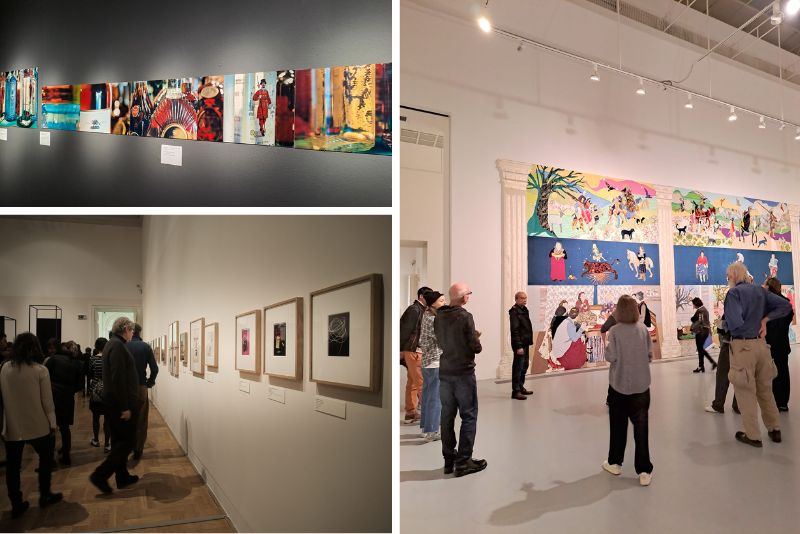
The word “zachęta” means encouragement, and, fittingly, the Zachęta National Gallery of Art is dedicated to encouraging the appreciation and support of Polish contemporary art and artists.
Founded, remarkable, all the way back in 1860, the works displayed are those of outstanding Polish and foreign artists — all up, the fascinating collection comprises some 3600 objects including paintings and videos, and around 100 sculptures and quirky installations.
30 – Take a walk through the Saxon Garden

Nature lovers, rejoice!
At the Saxon Garden, a peaceful oasis with tree-lined pathways, Baroque sculptures, and a 19th-century fountain, there’s no shortage of colors to appreciate or spots to throw down a picnic blanket.
As one of the oldest parks in the world (and officially the oldest in the city), it’s an excellent public park for some outdoor exercise or some sunny relaxation — be sure to check out the Tomb of the Unknown Soldier and the 19th-century sundial while you stroll around!
31 – Wander around Wieliczka Salt Mine

Looking for a unique attraction that promises jealousy-evoking social media snaps? Then look no further than the UNESCO-listed Wieliczka Salt Mine!
The natural wonder draws visitors from all over the world and for a good reason: 700 years of history are packed away in this underground mine.
Due to its immense size, only 2% of the mine is actually available to view. Still, there’s plenty of room to admire the beauty of the salt maze, crystal grottos, chapels, and sculptures that make this place truly out of this world. All up, it consists of 9 levels, the deepest point being a whopping 327 meters deep.
Located close to Krakow, about 3 and a half hours drive from Warsaw, it makes for a great day or two-day trip.
- Wieliczka Salt Mine tours
32 – Smash some pinatas at Fun Park Digiloo!

If you’re on the hunt for a fun way to wear out the kiddos, let them loose at Fun Park Digiloo !
There is undoubtedly something for everyone here, with laser paintball, smashable pinatas, climbing walls, and a playroom with slides, balls and blocks. There’s also a toddler’s corner for the youngest of the bunch.
With so much to do, they’re sure to sleep the whole way home!
33 – Soak in the history at the Frédéric Chopin Museum

Any music lovers or pianists in your travel group? If so, the Frédéric Chopin Museum is one of the unmissable things to do in Warsaw. With over 7,500 objects linked to the composer’s life, including personal items and a collection of his works, the exhibits truly honor the legacy and impact he imparted.
Inside of this beautiful building, you’ll find musical manuscripts that to this day are incredibly valuable due to the documentation of his creative process.
34 – Learn about Jewish Heritage and the former Ghetto

Prior to WWII, Warsaw was a center for Jewish culture. During the German occupation, however, a ghetto was created to hold all Jewish persons and separate them from the rest of the city by an ominous 10-foot wall.
If you’re interested in learning more about the history, a historian-led tour of the former Ghetto, which tells the story of the Ghetto Uprising, and includes stops at the Jewish Ghetto Memorial, Mila 18 (the former headquarters of the ŻOB, a Jewish resistance group), and plenty more.
Be sure to visit the Jewish Cemetery as well — the resting place of over 200,000 people, many of whom were the nameless victims of the tragic ghetto.
- Jewish Ghetto tours
35 – Admire The National Museum in Warsaw

The National Museum in Warsaw is one of the oldest art museums in the country, with beginnings that date all the way back to 1862.
Surviving many phases, along with political unrest and war, this institute has strived to maintain a place to hold Polish legacy and history.
Boasting a massive encyclopedia collection and over 830,000 exhibits from all over the world, this is the perfect place for art and history buffs alike.
36 – Watch a game at the PGE National Stadium

This modern, multi-functional facility has truly seen it all: from football championships and indoor windsurfing to the COP-19 Climate Summit, there is always something going on, no matter the season.
So, why not take an impressive tour to learn about all the ins and outs that make this one of the most modern and visited arenas in Europe – or even watch a game at the PGE National Stadium !
37 – Step into the Future at Melt Museum

Dive into Poland’s first immersive multisensory space at Melt Museum . This unique venue spans 600 square meters with 11 rooms that blend interactive multimedia and reality for a transformative experience.
Created by the innovative duo behind MELT IMMERSIVE, the museum offers a 45 to 90-minute journey that challenges your perceptions of reality.
Open from 12:00 to 20:30 on weekdays and 10:00 to 21:00 on weekends, with tickets starting at just 39 zł, this multisensory adventure promises an unforgettable dive into the future of art and interaction.
38 – Admire the Royal Castle

Live like royalty for the day and wander the castle that Polish monarchs roamed for centuries!
The Royal Castle stood firm against many armies but after the invasion in 1939 and the Warsaw Uprising in 1944, it was almost completely destroyed after being burned and looted.
Luckily for modern tourists, it was rebuilt in the 70s and 80s and is now a protected UNESCO World Heritage Site, highlighted by its Rembrandt exhibit and peaceful gardens
- Royal Castle tours
39 – Go canoeing in the Masurian Lake District

For a bit of tranquility in the midst of your trip, head out to the Masurian Lake District for some canoeing!
Located just a few hours from the city, this beautiful area is home to a variety of plants and animals, and features some truly gorgeous bodies of water.
Grab your paddle and explore this lush region, following peaceful river routes past small villages, lush forests, and beautiful flocks of birds.
It’s a perfect way to enjoy the unique wilderness!
- canoeing in Warsaw
40 – Ride carousels at Pepeland

One of the most enjoyable things to do in Warsaw for families, Pepeland is the ideal spot for a picnic, a few rides, and a great day out.
This fantastic amusement park will keep both the young and old busy, with a mini petting zoo, horseback riding, dinosaur exhibits, playgrounds, and sports fields to boot.
Play around the Monkey Grove with swings and slides, or jump on the professional trampoline for a flipping good time!
41 – Experience the rare Warsaw Fotoplastikon

The oldest of its kind in Europe, surviving multiple wars and entertaining visitors of all ages since the early 1900s, the Warsaw Fotoplastikon is a stereoscopic theater — a medium that’s largely died out in modern times.
Note: Unfortunately, as of late 2021, the Warsaw Fotoplastikon is temporarily closed. Keep an eye out to see when it reopens, because its historical value and unique entertainment experience is an otherwise must-see, considering the rarity of the technology these days.
42 – Admire the Miniature Park Region Mazowiecki

Architecture buffs, take note: this one is just for you.
Built by a group of history and architecture enthusiasts, this park seeks to restore the memory of Warsaw prior to the effect of WWII. Inside exists a truly unique exhibit of detailed miniature buildings that have proved critical throughout Warsaw’s history.
Both sobering and awe-inspiring, Miniature Park Region Mazowiecki demonstrates not only the destruction of history but the beauty of what was and still exists.
43 – Learn a thing or two at the Maria Skłodowska-Curie Museum

Science lovers, we’re looking at you for this one!
For students and scholars alike, this museum acts as an interactive biography of Maria Skłodowska-Curie ; as one of the most influential female scientists, she discovered polonium and radium, changing the direction of chemistry and physics.
An easy way to kill a couple of hours, this museum offers both educational and cultural exhibits, as well as films explaining her work.
44 – Wander around the Praga District

A rare part of Warsaw that wasn’t destroyed during World War II, the Praga District is one of the city’s charming regions that remain authentic, diverse, and full of historic landmarks.
On guided tours through the area, led by friendly and knowledgable locals, expect to stroll past temples of the variety of religions that have found a home here, before visiting the Praga Museum to learn more about the history.
Finally, take a walk along the quaint streets and finish the stroll at the Neon Museum to see a handful of unique, Cold War-era neon signs.
- Praga District tours
45 – Step inside St. Florian’s Cathedral

With two mighty towers standing at 75 meters tall, the stunning St. Florian’s Cathedral located in the Praga district is a sight to see and a living history museum.
Built back in the 19th century as a form of protest and to maintain Catholic tradition in the area, it was deliberately made to stand out. However, after WWII, it was left in ruins because it had been a hiding place for Jewish persons in the community.
Eventually, it was rebuilt and opened to the public in 1972, drawing visitors from all over.
46 – Take the kids to AIRO Park

If you’re looking for some family fun, look no further than AIRO Park !
This park boasts many different activities so you can jump around to your heart’s desire: race with other kids on the mini karts, play with an interactive sandbox in the game’s room, defy gravity with a wall run, try your hand (read: feet) at slacklining, or grab a partner and battle on the beams to see who can keep their balance the longest!
47 – Squeeze inside the Keret House

An artistic concept turned into reality, the slender Keret House is the narrowest house in the world – the widest point stretch a mere 122 centimeters.
That may sound a little claustrophobic, but the semi-transparent walls allow ample natural light in, making this small space not feel so cramped. As it exists between two buildings, this fully functional space was built with the idea of combining the present and future with a complicated past.
48 – Eat way too much at Specjaly Regionalne

With hundreds of excellent reviews, the Specjaly Regionalne is the perfect spot to experience authentic Polish cuisine. Combining healthy, locally sourced ingredients with authentic tastes, you can find all kinds of delightful dishes.
Can’t decide what to order? The beloved eaterie is well-known for its roasted duck and pierogies, so pick either of those and you’ll be sure to leave with a full belly.
49 – Hit some targets on a shooting range

For anyone looking to learn a new skill, pick up a new hobby, or relieve some stress, a shooting range might be the thrill you need.
Unlike a lot of other countries and cities over in Western Europe, in Warsaw, you can try your hand at shooting a variety of firearms, with some ranges even offering automatic weapons.
Thankfully, besides the target shooting, you’ll also learn everything about safety and handling with individual or group instructors.
- shooting range in Warsaw
50 – Admire nature’s wonders at the University of Warsaw Botanic Garden

Need a break from the busy city? Then grab a book and head on over to the botanic garden for the afternoon.
With shade-covered benches and thousands of different species of plants, not to mention a small chapel built in the 1700s, there’s plenty of beauty to marvel at in this small but diverse garden.
51 – Level up at the Interactive Pinball Museum!

One for the gamers and retro-lovers, why not spend an evening at the Pinball Museum to enjoy a game night with family and friends?
With more than 60 pinball and arcade games, this museum draws game lovers from all over the city with its vintage selection.
The best part? Once you pay the entry fee, you can re-enter throughout the day with the bracelet and don’t need coins to play the games, unlike most other arcades.
52 – Get cultured at the Modern Art Museum

The ideal spot for a rainy day — or any day if you’re a fan of Warhol and that ilk — the Modern Art Museum is an excellent place for art lovers with a more experimental and contemporary taste.
This museum focuses on film as a medium for art and holds collections from the late 1990s to the present, tallying up over 700 films from local artists — plus plenty of more traditional styles too, of course.
53 – Take a cooking class!

Whether you want to be able to impress your friends back home with your new cooking skills or simply enjoy a lip-smacking meal, a cooking class is one of the more fun and immersive things to do in Warsaw.
Taught by local chefs, you’ll get stuck into making authentic Polish pierogies and learn about Polish liquor tastings and traditions. For the extra thirsty, there are even a few liquor-making classes that include a few take-home bottles!
- cooking classes in Warsaw
54 – Explore the Warsaw University Library Garden

Not to be confused with the nearby Botanical Gardens, Warsaw University Library Garden is small but perfectly formed garden, a hidden gem for those wanting to get off the beaten track and discover more of Warsaw’s natural side.
Built across two levels on the roof of a new Library building, away from the streetside tourists, this oasis of calm is truly one to behold, with its greenery, bridges, streams, and offers a nice breath of fresh air.
55 – Try traditional Polish dishes at the Stary Dom restaurant

Who’s hungry?
This top-class restaurant is a true landmark of Warsaw, with its high ceilings, sophisticated decor, and expansive wine list, conjuring up a wonderful, historic, and friendly atmosphere.
While not centrally located by any means, the beloved eaterie is easily accessible by public transport and, thanks to its huge portions, is well worth the trip to Stary Dom .
56 – Run around the city with a scavenger game!

Everyone loves a good scavenger hunt, so why not try one in Warsaw, operated conveniently from your very own phone?
With all sorts of themes and variations on the traditional game, you’re sure to find something for your group: from historical hunts around Old Town to tours of original graffiti spots or even pub crawls with puzzles thrown in along the way — there are plenty of ways to keep everyone entertained.
- scavenger games in Warsaw
57 – Take a hike at Kampinos National Park

For those who want to enjoy the great outdoors without necessarily roughing it, Kampinos, a UNESCO-listed Biosphere Reserve, is one of Poland’s best national parks for organized or solo trips.
With its low-level walking trails that are easy on inexperienced legs and a range of activities including kayaking, cycling, horseback riding, and skiing trails, you can discover the beauty of this park on your own terms.
Despite being a national park, it’s only 35 minutes away from the city center by car.
58 – See a show at Teatr Dramatyczny

Created in 2013 with a combined influence of two performing arts institutions, this stunning building acts as a cultural hub for Warsaw, showcasing influential performances as well as historical plays and concerts.
No matter what you see, you’re guaranteed to get lost in the story with top-notch acting — just check the website to see what’s on during your visit to Teatr Dramatyczny .
59 – Say “Na Zdrowie” on a Polish vodka tour

An experience that promises to be both a cultural insight and a jolly good time, a dedicated vodka tour is a wonderful way to break the ice and get to know a few fellow travelers.
We all know that Poland is known for its vodka, but to find the best in the land, you need to know where to look — and that’s where a guided tour comes into play!
But if nightlife isn’t your scene, you can always take a tour of the Polish Vodka Museum to learn the ins and outs of distilling (plus enjoy a tasting session).
- polish vodka tours in Warsaw
60 – Walk around Skaryszew Park

One of Warsaw’s largest parks, found on the eastern side of the Vistula in the Praga-Południe district, the picturesque Skaryszew is a great spot for picnics and peaceful strolls.
Covering over 58 hectares, the park also contains lakes ideal for kayaking, a handful of walking trails, and no shortage of friendly wildlife (ducks, squirrels, and birds, to name but a few).
61 – Sit front row for a Chopin concert

For those wanting to experience the magic of music in historic surroundings, Warsaw is home to a number of unique concert halls.
The best-known and most popular (not only among tourists) is the Fryderyk Concert Hall in Old Town; but if you want something even more intimate, a range of restaurants and theaters put on more low-key, VIP performances.
Combine a listening session with a Chopin-themed walking tour, museum visit, hearty dinner, or, go full romantic and book a private Chopin serenade for you and your special someone.
- Chopin Concert in Warsaw
62 – Get lost in Mokotów Field (Pole Mokotowskie)

This beautiful green space is a popular spot for both locals and tourists.
The park, which covers an area of over 180 acres (nearly one quarter the size of New York’s Central Park), features ponds, wild fields, lakeside pathways accessible by foot or bike, vast grassy expanses perfect for picnics, and a children’s play area.
The park is also home to the famous Polish National Library, a handful of bars, and a two-kilometer educational trail.
63 – Dine at the best restaurants

If you’re looking for a more straightforward dining experience, there are tons of world-class eateries to choose from!
Alewino blends excellent drinks and savory food into one unforgettable meal, while Concept 13 offers creative takes on Polish and international cuisine.
Mokotowska 69 is perfect for some upscale meals like fried foie gras and Wagyu beef, while Rozbrat 20 offers unique dishes made with local ingredients and innovative pairings.
These delicious spots will have you begging for seconds!
64 – Cheers with locals on a beer tasting tour

If you’re a beer lover, then a tour of Warsaw with one of the handful of organized, locally-led beer adventures is an absolute must.
Centered around the city’s fantastic microbreweries and brewpubs, as well as commonly-known beers like Zywiec Biale and Okocim, these two-to-three-hour fun-filled guided tours run year-round (though at different times depending on season or preference).
The informative Eastern European food & drink tours are run by beer aficionados who love to share their passion for great IPAs, ales and lagers, and are all about pairing delicious dishes with equally tasty tipples.
- beer tasting in Warsaw
65 – Grab a bite and a beer at the Night Market

To experience some of Warsaw’s finest street food, visit the popular night market (Nocny Market).
Though it’s not exactly hidden away, the stalls are set up on the platform of a de-commission train station (Warszawa Główna), largely out of sight from major roads and therefore with a wonderful, calm, yet still vibrant atmosphere.
Open for several hours every Thursday through Sunday, there’s plenty of beer, burgers, and sweet treats to get stuck into.
66 – Relax for the day at Wodny Park

If, after a couple of days of hectic sightseeing and lots of walking, you simply need a moment to relax, then take that moment at the unique Wodny Park complex in the city’s south.
Housing an Olympic swimming pool, recreational swimming pool, slides, fitness classes, squash courts, and a children’s area (not to mention a solarium if you want to work on the tan) there’s some kind of activity for every energy level.
After playing around and getting a good workout, check out one of the many saunas or get a relaxing massage!
67 – Enjoy cocktails and amazing views

Known as Warsaw’s highest bar, the Panorama Sky Bar is a must-do for any type of traveler: the drinker wanting signature cocktails, the tourist wanting spectacular views, or the luxury-seeker wanting high-class service.
Located on top of the Warsaw Marriott Hotel, the esteemed bar boasts panoramic views over the city and beyond from its 40th-floor location — perfect for drinks before dinner!
True to its name, The Roof SkyBar offers plenty of great scenery, and some excellent beverages to match. Try the fun and colorful cocktails and listen to some lovely live music, while the lights up around you.
Or stop by Loreta Bar , with its classy drinks and relaxed vibe. Perched atop the Puro hotel, this charming spot is known for its weekly musical events, including vinyl record nights and DJ sets.
68 – See a show at the Grand Theatre (Teatr Wielki)

A staple of any theater or opera-lover’s itinerary, the coveted Grand Theatre is a must for all Warsaw visitors.
Built in 1833 by famed neoclassical Italian architect Antonio Corazzi, it boasts an eye-catching façade and a magical main auditorium.
Located in the historic Theatre Square opera complex, this stunning venue is one of Europe’s most famous opera houses and an essential stop for culture vultures, especially considering the fact that the Polish National Ballet performs here too.
69 – Make some new friends on a pub crawl

One of the most popular ways to get a taste of Warsaw’s nightlife is by going on one of their famous pub crawls!
These booze-filled tours take you around the city’s best bars and clubs — exploring areas like Saska Kępa, up-and-coming Praga, or Pawilony (where bars are stacked side by side in a Nowy Świat street courtyard), giving visitors an opportunity to meet other tourists, hear live music, while getting plenty tipsy along the way!
While each adventure is different, all the crawls usually include food and drink, transport between bars (if needed), and entry fees.
- pub crawls in Warsaw
70 – Dance the night away in a rooftop bar

Sitting atop Warsaw’s iconic Spectrum Tower, this 32d-floor rooftop club and lounge near Grzybowski Square is dubbed one of, if not the best nightclubs in the city.
With a DJ spinning tunes from 10 pm till 4 am on Fridays and Saturdays, The View Warsaw Rooftop Bar it’s an ideal spot for drinks, dancing, and getting a little rowdy.
If you want to keep the party going, head over to Level 27 !
This boisterous club is known for its spectacular lineup of live events, as well as a dance floor and some truly awesome aesthetics.
Surrounded by industrial chic and mossy decor, with the sounds of the hottest DJs pulsing around you, you’ll soon see why this spot has been ranked amongst the best clubs on the planet!
How to get to Warsaw?
With its centralized location, Warsaw is reachable by train from much of Europe.
But many visitors find it easier to take a plane, arriving and departing from Chopin Airport.
If you’re flying, arrange an airport transfer for convenient access to the city, with options for every budget, you can avoid the hassle and get started on your vacation!
Where to stay in Warsaw?
InterContinental Warszawa will make you feel like a high-roller, with its spacious wellness center and glamorous pool that offers panoramic views while you swim.
Novotel Warszawa Centrum is right in the midst of things, surrounded by the Central Railway Station and the Palace of Culture and Science; but it offers plenty of comforts inside as well, including a sauna and an excellent bar.
NYX Hotel Warsaw by Leonardo Hotels provides easy access to the shops and entertainment in town – and even a car rental if you want to venture further!
Hampton by Hilton Warsaw City Centre boasts modern designs, a delicious buffet breakfast, and convenient proximity to all of the action – not to mention some transit hubs!
And at Hotel Gromada Warszawa Centrum , you can pop out for souvenirs at Złote Tarasy Shopping Center or stroll down Nowy Świat Street and people-watch, before coming back to work out or relax in the lounge.
- best hotels in Warsaw
Visiting Warsaw on a budget?
From decadent pre-war buildings and Communist structures to historic Jewish neighborhoods and LGBTQ-friendly communities, Warsaw’s free walking tours provide great context for the city’s past – as well as its fascinating present.
Along with getting unique vantage points from passionate local guides, you’ll be able to save tons of money; but be sure to bring cash for tips!
Where to go next?
Krakow offers another perspective on Polish life and history, with its towering castles, powerful World War II monuments, and lovely natural scenery.
Don’t overlook Wroclaw , the “Venice of Poland” with its charming bridges and islands. Explore its vibrant market square, Gothic landmarks, and whimsical dwarf statues.
Or pop over to Germany for a taste of Berlin , the hip and happening city with a flair for the unique.
Head North East and discover the medieval Old Town of Vilnius , Lithuania’s capital .
Looking for a seaside destination? Discover the stunning city of Gdanks and enjoy the Baltic coast.
In the Czech Republic, Prague beckons, with its remarkable architecture, wonderful dining scene, and rich culture that ranges from upscale museums to vibrant clubs.
Meanwhile, Hungary offers up Budapest , where the picture-perfect scenery is only matched by its unique cultural excursions, intriguing museums, and soothing natural spas.
And don’t miss out on Bratislava , the capital of Slovakia, which is packed with quirky shops, striking scenery, and delicious craft beers ripe for tasting.
There are also tons of great multi-day trips from Warsaw itself, where you can encounter striking landscapes, charming cities, and even wild bison!
Still feeling adventurous? Check out some of the other best places to visit in Europe !
Final thoughts
While it doesn’t always get the same attention as its neighbors, the number of incredible things to do in Warsaw make it a must-see!
Whether you want an action-packed trip, a history-filled ramble, or a nice round of people-watching, it’s the kind of city that welcomes and challenges in turn.
Take in the serious, the silly, and the scrumptious – it’s all part of the fun in this town!
- 10 Places That All History...
10 Places That All History Fans Must Visit In Warsaw

From a splendid 17th century capital to virtual annihilation during World War II, Warsaw has a rich but often tragic history. Stunning royal palaces stand in stark contrast to socialist blocks of flats and monuments to the thousands who fell during 20th century battles, creating a modern day city that is virtually unrivaled in the stories it tells about the past.
1. pałac kultury i nauki (palace of culture and science).

2. Museum of the Warsaw Uprising
Museum, Building

3. Plac Zamkowy and the Royal Castle

Plac Zamkowy and the Royal Castle
Most histories of Warsaw tend to focus on the 20th century – and rightly so, considering how drastically those events shaped the city that’s seen today. However, areas such as Plac Zamkowy (Castle Square) and the Royal Castle perfectly depict Warsaw’s era as a flourishing 17th century capital. Although the area, along with most of the Old Town, was almost entirely destroyed during World War II, it was rebuilt virtually brick-for-brick in its earlier style, thus still offering a gateway to the past. The Royal Castle is teeming with lavish décor and paintings of famous Poles, and provides visitors with an insight into the time when Poland was still a monarchy. The square outside showcases Warsaw at its most beautiful, and nowadays is also a popular meeting spot full of restaurants and cafés.
Plac Zamkowy, Warsaw, Poland
The Former Warsaw Ghetto

Although virtually nothing remains of the Warsaw ghetto after its bombing during the 1943 Ghetto Uprising, a visit to the area that it once stood on is nevertheless a poignant experience. The recently opened Museum of the History of Polish Jews is a modern, striking centerpiece to the former ghetto, and just outside it is the Monument to the Ghetto Heroes, commemorating those who fell in the 1943 uprising. Now a predominantly residential area, tell-tale signs of the district’s tragic history can be found everywhere: the stone monument to Umschlagplatz – the square on which Jews were loaded onto vehicles transporting them to death camps – and a secluded grave for the fallen uprising fighters, are two important examples.
Museum of the History of Polish Jews, Mordechaja Anielewicza 6, Warsaw, Poland , +48 22 47 10 300
Umschlagplatz, Stawki, Warsaw, Poland
4. Uprising Monument

Uprising Monument
There are numerous monuments to the Warsaw Uprising dotted across the city, but the most famous and perhaps the most impressive is the one located on Krasiński Square, just next to the ultra-modern Supreme Court. Larger-than-life-sized figures seem to be coming up out of the ground in this monument – dedicated to those who fought and fell during the attempt to liberate the city. Other monuments, such as the chilling child-sized statue commemorating the children who fought and died in the uprising, located on Podwale Street, are also definitely worth visiting.
Plac Krasińskich, Warsaw, Poland
5. National Museum in Warsaw

6. Wilanów Palace

7. Pawiak Prison Museum
Building, Museum

8. The Tomb of the Unknown Soldier

The Tomb of the Unknown Soldier
Situated on the far side of a vast, paved square on which speakers as famous as Pope John Paul II have spoken, Warsaw’s Tomb of the Unknown Soldier, erected after World War I, is a monument to the unidentified Polish soldiers who fell during numerous wars. The curious shape of the monument is due to the tomb being located in the only surviving fragment of what was once a grand palace, which was destroyed during World War II. A poignant place, the tomb is perpetually guarded by soldiers, and is the place where Poles and foreigners alike come to pay their respects to the fallen.
Plac Marszałka Józefa Piłsudskiego, Warsaw, Poland
9. The Fryderyk Chopin Monument

Culture Trips launched in 2011 with a simple yet passionate mission: to inspire people to go beyond their boundaries and experience what makes a place, its people and its culture special and meaningful. We are proud that, for more than a decade, millions like you have trusted our award-winning recommendations by people who deeply understand what makes places and communities so special.
Our immersive trips , led by Local Insiders, are once-in-a-lifetime experiences and an invitation to travel the world with like-minded explorers. Our Travel Experts are on hand to help you make perfect memories. All our Trips are suitable for both solo travelers, couples and friends who want to explore the world together.?>
All our travel guides are curated by the Culture Trip team working in tandem with local experts. From unique experiences to essential tips on how to make the most of your future travels, we’ve got you covered.

Food & Drink
The best things to do in poland if you love vodka.

The 10 Most Difficult Polish Towns to Pronounce

Places to Stay
The best hotels in zakopane, poland.

Restaurants
The best burgers in gdańsk.

See & Do
The best things to see and do in zakrzewo.

Bars & Cafes
7 secret bars in warsaw's old town.

Guides & Tips
10 facts you didn't know about warsaw's palace of culture and science.

The Best Craft Beer Bars in Gdańsk

The Best Bars in Zabrze, Poland

The Best 24-Hour Bars in Warsaw

The Best Polish Restaurants in Gdańsk

The Best Polish Desserts You Need To Try
Culture trip spring sale, save up to $1,100 on our unique small-group trips limited spots..

- Post ID: 422864
- Sponsored? No
- View Payload

COMMENTS
3. POLIN Muzeum Historii Żydów Polskich. 4,254. Speciality Museums. The POLIN Museum of the History of Polish Jews is the first and only museum dedicated to restoring the memory of the civilization created by Polish Jews in the course of a millennium.Museum's building faces the Monument to the Ghetto Heroes in Warsaw.
Places to Visit in Warsaw. Explore popular experiences. See what other travellers like to do, based on ratings and number of bookings. See All. Walking Tours (152) Nightlife (6) Speciality Museums (46) City Tours (63) Dining Experiences (11) ... Warsaw Must See Public Walking Tour • 18 € ...
To see it, take the Royal Route, which threads through royal properties like Łazienki Park, a little world of palaces and pavilions in the middle of the city. Let's explore the best things to do in Warsaw: 1. Old Town. Source: fotorince / shutterstock. Old Town, Warsaw.
You can eat a meal in one of the numerous restaurants that serve up anything from Italian to Hawaiian cuisine or buy fresh produce and prepare dinner at home. With martinis for just £3.50 it ...
Łódź. Discover the best attractions in Warsaw including Wilanów Palace, Palace of Culture & Science, and Royal Castle.
Next, deep dive into the city's darkest days at the exceptional Warsaw Rising Museum. Housed in a former tram power station, this museum forensically covers the heroic but doomed uprising against the German occupation in 1944 via an immersive range of interactive displays, including archival films and personal accounts.
Ranking of the top 9 things to do in Warsaw. Travelers favorites include #1 Old Town (Stare Miasto), #2 Lazienki Królewskie Museum (Muzeum Lazienki Królewskie) and more.
Walking around the neighbourhood, visitors can see and feel the city's history outside of pristine museum walls. 5. Warsaw Rising Museum. Commemorating the Warsaw Uprising of 1944, this state-of-the-art museum tells the story of the Polish rebellion against the Nazi occupation.
Top Things to Do in Warsaw - Warsaw Must-See Attractions. Things to Do in Warsaw. Explore popular experiences. See what other travellers like to do, based on ratings and number of bookings. See All. City Tours (64) Dining Experiences (11) Speciality Museums (46) Walking Tours (154) Nightlife (6) Historic Sites (39)
5. Wilanow Palace. Nestled in the Wilanów district of Warsaw resides one of the country's most significant historical buildings - Wilanów Palace. Commissioned by King John III Sobieski in the late 17th century, the palace served as a royal residence and embodied the splendor of Poland's golden age.
The historic Powązki Cemetery is a must-see for visitors wanting to pay their respects while taking in elaborate Polish tombstone architecture and art. 17. University of Warsaw Library Roof Garden. The University of Warsaw Library Roof Garden is in Warsaw, Poland, at Dobra 56/66, 00-312 Warsaw.
3. Escape to the Palace on the Isle in Warsaw's Łazienki Park. 4. Take the Elevator to the 30th Floor of the Palace of Culture and Science. 5. Jump in a Retro Van for a Communist Tour of Warsaw. 6. Explore Art and History at the National Museum in Warsaw. 7.
Exploring the Unmissable and best attractions in warsaw. 1. Unlock the Secrets of Warsaw's Renowned Chopin Museum Chopin Museum. The Chopin Museum is a museum in Warsaw, Poland dedicated to the life and works of the famous Polish composer and pianist, Frédéric Chopin. The museum is located in the Ostrogski Palace, which is a historic 17th-century mansion that has been renovated and adapted ...
Everything you should see and do on a trip to Warsaw . Oct 31, 2019 • 7 min read. A youthful energy in Warsaw is transforming this 700-year-old survivor into an ideal location for a central European city break.
Warsaw's iconic must-see building is the Palace of Culture and Science. It was a 'gift' from Stalin back in the Communist era and has divided opinion among the city's residents. Love it or hate it, the building is pretty hard to miss. For sublime views of the city, buy a ticket and head to the viewing platform on the 30th floor, via the ...
Old Town. Ironically only about 70 years old, Warsaw's Old Town is a UNESCO World Heritage Site and the perfect place to stay when you're visiting for the first time. Places to visit: Get a history lesson at the Royal Castle. Try some culture at the Adam Mickiewicz Museum Of Literature.
2 - Gaze at the monuments of Łazienki Park. Łazienki Królewskie (otherwise known as Royal Baths Park to travelers) is the beloved site of a bathhouse used by 17th-century Polish nobleman Stanisław Lubomirski — and many famous and non-famous folk since. Read more.
10 Best Things to Do in Warsaw. Stroll Around the Old Town Market Square. Check Out St. John's Archcathedral. Go Up St. Anne's Church Observation Deck For the Sunset. Learn the Tragic History of Warsaw at Warsaw Uprising Museum. Visit the Royal Castle of Warsaw. Enjoy the Scenery at Lazienki Park.
3. POLIN Muzeum Historii Żydów Polskich. 4,255. Speciality Museums. The POLIN Museum of the History of Polish Jews is the first and only museum dedicated to restoring the memory of the civilization created by Polish Jews in the course of a millennium.Museum's building faces the Monument to the Ghetto Heroes in Warsaw.
Other monuments, such as the chilling child-sized statue commemorating the children who fought and died in the uprising, located on Podwale Street, are also definitely worth visiting. Plac Krasińskich, Warsaw, Poland. 5. National Museum in Warsaw.
Top Things to Do in Warsaw, Poland - Warsaw Must-See Attractions. Things to Do in Warsaw. Explore popular experiences. See what other travellers like to do, based on ratings and number of bookings. See All. Walking Tours (151) City Tours (63) Speciality Museums (46) Nightlife (6) Dining Experiences (11)
Top Things to Do in Warsaw - Warsaw Must-See Attractions. Things to Do in Warsaw. Explore popular experiences. See what other travellers like to do, based on ratings and number of bookings. See All. Walking Tours (152) City Tours (63) Speciality Museums (46) Nightlife (6) Dining Experiences (11) Historic Sites (39)